domain-specific language
description: computer language specialized to a particular application domain
61 results
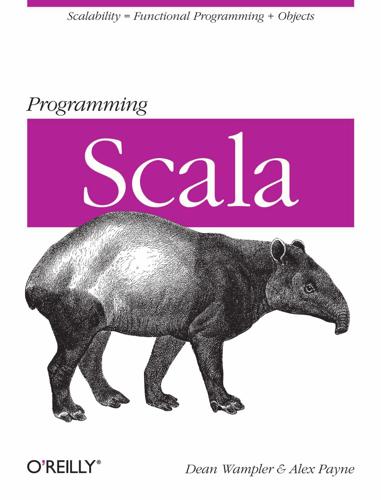
Programming Scala
by
Unknown
Published 2 Jan 2010
Finally, note that when you use the scala command, either interactively or with scripts, it may appear that you can define “global” variables and methods outside of types. This is actually an illusion; the interpreter wraps all definitions in an anonymous type before generating JVM or .NET CLR byte code. Domain-Specific Languages Domain-Specific Languages, or DSLs, provide a convenient syntactical means for expressing goals in a given problem domain. For example, SQL provides just enough of a programming language to handle the problems of working with databases, making it a Domain-Specific Language. While some DSLs like SQL are self-contained, it’s become popular to implement DSLs as subsets of full-fledged programming languages. This allows programmers to leverage the entirety of the host language for edge cases that the DSL does not cover, and saves the work of writing lexers, parsers, and the other building blocks of a language.
…
Recap and What’s Next XML has become ubiquitous in software applications, yet few languages make working with XML a simple task. We learned how Scala accelerates XML development by making it easy to read and write XML. In the next chapter, we’ll learn how Scala provides rich support for creating your own Domain-Specific Languages (DSLs). 216 | Chapter 10: Herding XML in Scala Download at WoweBook.Com CHAPTER 11 Domain-Specific Languages in Scala A Domain-Specific Language is a programming language that mimics the terms, idioms, and expressions used among experts in the targeted domain. Code written in a DSL reads like structured prose for the domain. Ideally, a domain expert with little experience in programming can read, understand, and validate this code.
…
[DesignByContract] Building bug-free O-O software: An introduction to Design by Contract™, http://archive.eiffel.com/doc/manuals/technology/contract/. 387 Download at WoweBook.Com [Deursen] Arie van Deursen, Paul Klint, and Joost Visser, Domain-Specific Languages: An Annotated Bibliography, http://homepages.cwi.nl/~arie/papers/dslbib/. [EBNF] Extended Backus-Naur Form, http://en.wikipedia.org/wiki/Extended_Backus– Naur_Form. [Eiffel] Eiffel Software, http://eiffel.com. [Ford] Bryan Ford, The Packrat Parsing and Parsing Expression Grammars Page, http: //pdos.csail.mit.edu/~baford/packrat/. [Ford2009] Neal Ford, Advanced DSLs in Ruby, http://github.com/nealford/presenta tions/tree/master. [Fowler2009] Martin Fowler, Domain Specific Languages (forthcoming), http://martin fowler.com/dslwip/.
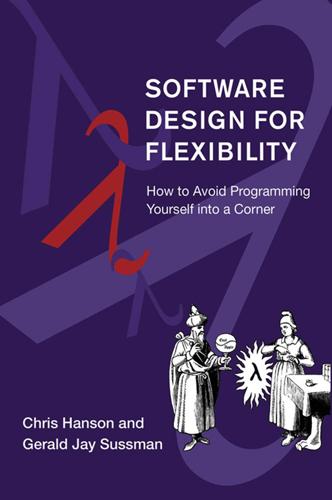
Software Design for Flexibility
by
Chris Hanson
and
Gerald Sussman
Published 17 Feb 2021
But if we keep such subsystems simple and small they can be specified and even proved “correct” with a tractable amount of work. 2 Domain-Specific Languages One powerful strategy for building flexibility into a programming project is to create a domain-specific language that captures the conceptual structure of the subject matter of the programs to be developed. A domain-specific language is an abstraction in which the nouns and verbs of the language are directly related to the problem domain. Such a language allows an application program to be written directly in terms of the domain. By its nature, a domain-specific language implements a fairly complete model of the domain, in excess of what is needed for a particular application.1 Although this may seem like extra work that is not essential to the particular problem at hand, it is often less work than writing a monolithic program, and the resulting program is much easier to modify, debug, and extend.
…
Small perturbations of the requirements can be tolerated, because every component is built to accept perturbed (noisy) inputs. A family of mix-and-match parts for a particular domain of discourse is the foundation of a domain-specific language. Often the best way to attack a family of hard problems is to make a language—a set of primitives, means of combination, and means of abstraction—that makes the solutions for those problems easy to express. So we want to be able to erect appropriate domain-specific languages as needed, and to combine such languages flexibly. We start thinking about domain-specific languages in chapter 2. More powerfully, we can implement such languages by direct evaluation. We expand on this idea in chapter 5.
…
This is an important organizing principle for the book. In chapter 2 we explore some universally applicable ways of building systems with room to grow. A powerful way to organize a flexible system is to build it as an assembly of domain-specific languages, each appropriate for easily expressing the construction of a subsystem. Here we develop basic tools for the development of domain-specific languages: we show how subsystems can be organized around mix-and-match parts, how they can be flexibly combined with combinators, how wrappers can be used to generalize parts, and how we can often simplify a program by abstracting out a domain model.
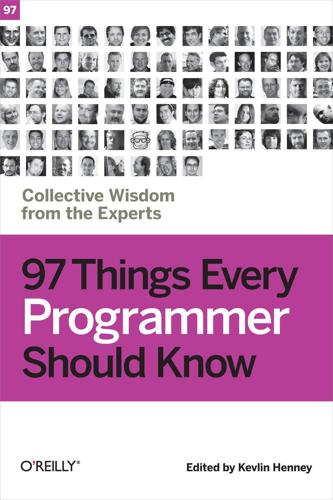
97 Things Every Programmer Should Know
by
Kevlin Henney
Published 5 Feb 2010
(You Are Not the User) Prevent Errors, Prevent Errors, Prevent Errors, Prevent Errors collaboration, Two Heads Are Often Better Than One, Two Heads Are Often Better Than One, Two Heads Are Often Better Than One, When Programmers and Testers Collaborate, When Programmers and Testers Collaborate, When Programmers and Testers Collaborate testers and programmers, When Programmers and Testers Collaborate, When Programmers and Testers Collaborate, When Programmers and Testers Collaborate Colvin, Know Your Limits, Know Your Limits, Know Your Limits Know Your Limits, Know Your Limits, Know Your Limits, Know Your Limits command-line build tools, Know How to Use Command-Line Tools, Know How to Use Command-Line Tools, Know How to Use Command-Line Tools comments, A Comment on Comments, Comment Only What the Code Cannot Say, Only the Code Tells the Truth, Write Code As If You Had to Support It for the Rest of Your Life committing code, Test While You Sleep (and over Weekends) communicating with peers, Learn Foreign Languages, Learn Foreign Languages, Learn Foreign Languages compiler bugs, Check Your Code First Before Looking to Blame Others components, Choose Your Tools with Care concurrency, Message Passing Leads to Better Scalability in Parallel Systems, Message Passing Leads to Better Scalability in Parallel Systems, Message Passing Leads to Better Scalability in Parallel Systems continuous learning, Continuous Learning, Continuous Learning, Continuous Learning contradictions in code, Two Wrongs Can Make a Right (and Are Difficult to Fix), Two Wrongs Can Make a Right (and Are Difficult to Fix), Two Wrongs Can Make a Right (and Are Difficult to Fix) correctness of code, Coding with Reason, Coding with Reason, Coding with Reason CVS, Put Everything Under Version Control D Dahan, Beware the Share, Beware the Share, Beware the Share Beware the Share, Beware the Share, Beware the Share, Beware the Share data structures, Interprocess Communication Affects Application Response Time using caches, Interprocess Communication Affects Application Response Time deliberate practice, Do Lots of Deliberate Practice, Do Lots of Deliberate Practice, Do Lots of Deliberate Practice deployment process, Deploy Early and Often, Deploy Early and Often, Deploy Early and Often design, Code Is Design, Code Is Design, Code Is Design dirty code, The Road to Performance Is Littered with Dirty Code Bombs, The Road to Performance Is Littered with Dirty Code Bombs, The Road to Performance Is Littered with Dirty Code Bombs Doar, How to Use a Bug Tracker, How to Use a Bug Tracker, How to Use a Bug Tracker How to Use a Bug Tracker, How to Use a Bug Tracker, How to Use a Bug Tracker, How to Use a Bug Tracker domain-specific languages (DSLs), Domain-Specific Languages, Domain-Specific Languages, Domain-Specific Languages domain-specific typing, Prefer Domain-Specific Types to Primitive Types, Prefer Domain-Specific Types to Primitive Types, Prefer Domain-Specific Types to Primitive Types DRY (Don't Repeat Yourself), Don't Repeat Yourself, WET Dilutes Performance Bottlenecks duplication, Don't Repeat Yourself, Own (and Refactor) the Build E encapsulation, Encapsulate Behavior, Not Just State, Encapsulate Behavior, Not Just State, Encapsulate Behavior, Not Just State Erlang, Message Passing Leads to Better Scalability in Parallel Systems errno, Don't Ignore That Error!
…
Deliberate practice is about learning—learning that changes you, learning that changes your behavior. Good luck. * * * [4] http://norvig.com/21-days.html Chapter 23. Domain-Specific Languages Michael Hunger WHENEVER YOU LISTEN TO A DISCUSSION BY EXPERTS in any domain, be it chess players, kindergarten teachers, or insurance agents, you'll notice that their vocabulary is quite different from everyday language. That's part of what domain-specific languages (DSLs) are about: a specific domain has a specialized vocabulary to describe the things that are particular to that domain. In the world of software, DSLs are about executable expressions in a language specific to a domain, employing a limited vocabulary and grammar that is readable, understandable, and—hopefully—writable by domain experts.
…
A acceptance test-driven development (ATDD), When Programmers and Testers Collaborate Ada, Know Well More Than Two Programming Languages, Prefer Domain-Specific Types to Primitive Types Adams, Make the Invisible More Visible algorithms, Interprocess Communication Affects Application Response Time, Know Your Limits limits, Know Your Limits performance, Interprocess Communication Affects Application Response Time Allison, Floating-Point Numbers Aren't Real, Floating-Point Numbers Aren't Real, Floating-Point Numbers Aren't Real Floating-Point Numbers Aren't Real, Floating-Point Numbers Aren't Real, Floating-Point Numbers Aren't Real, Floating-Point Numbers Aren't Real analysis tools, Take Advantage of Code Analysis Tools APIs, Convenience Is Not an -ility, Convenience Is Not an -ility, Convenience Is Not an -ility, Domain-Specific Languages, The Golden Rule of API Design, The Golden Rule of API Design, The Golden Rule of API Design, The Golden Rule of API Design, The Golden Rule of API Design, The Golden Rule of API Design API design, The Golden Rule of API Design, The Golden Rule of API Design, The Golden Rule of API Design, The Golden Rule of API Design, The Golden Rule of API Design, The Golden Rule of API Design internal DSLs, Domain-Specific Languages Asproni, Choose Your Tools with Care, Choose Your Tools with Care, Choose Your Tools with Care, Learn to Estimate, Learn to Estimate, Learn to Estimate Choose Your Tools with Care, Choose Your Tools with Care, Choose Your Tools with Care, Choose Your Tools with Care Learn to Estimate, Learn to Estimate, Learn to Estimate, Learn to Estimate Attapattu, Before You Refactor, Before You Refactor, Before You Refactor, Test While You Sleep (and over Weekends), Test While You Sleep (and over Weekends), Test While You Sleep (and over Weekends) Before You Refactor, Before You Refactor, Before You Refactor, Before You Refactor Test While You Sleep (and over Weekends), Test While You Sleep (and over Weekends), Test While You Sleep (and over Weekends), Test While You Sleep (and over Weekends) automation, Automate Your Coding Standard, Automate Your Coding Standard, Automate Your Coding Standard, Step Back and Automate, Automate, Automate, Step Back and Automate, Automate, Automate, Step Back and Automate, Automate, Automate automating coding standard, Automate Your Coding Standard, Automate Your Coding Standard, Automate Your Coding Standard B Baden-Powell, The Boy Scout Rule Baker, Install Me, Install Me, Install Me Install Me, Install Me, Install Me, Install Me beautiful code, Beauty Is in Simplicity, A Message to the Future Begbie, Don't Be Cute with Your Test Data, Don't Be Cute with Your Test Data, Don't Be Cute with Your Test Data Don't Be Cute with Your Test Data, Don't Be Cute with Your Test Data, Don't Be Cute with Your Test Data, Don't Be Cute with Your Test Data Berczuk, Deploy Early and Often, Deploy Early and Often, Deploy Early and Often, Deploy Early and Often Deploy Early and Often, Deploy Early and Often, Deploy Early and Often, Deploy Early and Often, Deploy Early and Often Berg, Read Code, Read Code, Read Code Read Code, Read Code, Read Code, Read Code binary, One Binary blaming others, How to Use a Bug Tracker bottlenecks, Code Reviews, Interprocess Communication Affects Application Response Time, WET Dilutes Performance Bottlenecks, WET Dilutes Performance Bottlenecks, WET Dilutes Performance Bottlenecks performance, Interprocess Communication Affects Application Response Time, WET Dilutes Performance Bottlenecks, WET Dilutes Performance Bottlenecks, WET Dilutes Performance Bottlenecks process, Code Reviews Boy Scout rule, The Boy Scout Rule, The Boy Scout Rule, The Boy Scout Rule Braithwaite, Don't Be Afraid to Break Things, The Linker Is Not a Magical Program, The Linker Is Not a Magical Program, The Linker Is Not a Magical Program, Read the Humanities, Read the Humanities, Read the Humanities, Write Small Functions Using Examples breaking code, Don't Be Afraid to Break Things Read the Humanities, Read the Humanities, Read the Humanities, Read the Humanities The Linker Is Not a Magical Program, The Linker Is Not a Magical Program, The Linker Is Not a Magical Program, The Linker Is Not a Magical Program Write Small Functions Using, Write Small Functions Using Examples Examples, Write Small Functions Using Examples Brodwall, Keep the Build Clean, Keep the Build Clean, Keep the Build Clean Keep the Build Clean, Keep the Build Clean, Keep the Build Clean, Keep the Build Clean Brush, Code Is Design, Code Is Design, Code Is Design, The Guru Myth, The Guru Myth, The Guru Myth Code Is Design, Code Is Design, Code Is Design, Code Is Design The Guru Myth, The Guru Myth, The Guru Myth, The Guru Myth bug tracker, How to Use a Bug Tracker, How to Use a Bug Tracker, How to Use a Bug Tracker build scripts, Own (and Refactor) the Build, Own (and Refactor) the Build, Own (and Refactor) the Build builds, Keep the Build Clean keeping clean, Keep the Build Clean C C#, Distinguish Business Exceptions from Technical, Don't Just Learn the Language, Understand Its Culture, The Golden Rule of API Design C++, Don't Nail Your Program into the Upright Position, Know Well More Than Two Programming Languages caller breaking method contract, Distinguish Business Exceptions from Technical COBOL, Code Layout Matters, Don't Rely on "Magic Happens Here" code, The Boy Scout Rule, Check Your Code First Before Looking to Blame Others, Check Your Code First Before Looking to Blame Others, Check Your Code First Before Looking to Blame Others, Code Is Design, Code Layout Matters, Code Reviews, Coding with Reason, Coding with Reason, Coding with Reason, Comment Only What the Code Cannot Say, Domain-Specific Languages, Don't Repeat Yourself, Don't Repeat Yourself, Only the Code Tells the Truth, Only the Code Tells the Truth, Only the Code Tells the Truth, Only the Code Tells the Truth, Read Code, Read Code, Read Code, The Road to Performance Is Littered with Dirty Code Bombs, The Road to Performance Is Littered with Dirty Code Bombs, The Road to Performance Is Littered with Dirty Code Bombs, Take Advantage of Code Analysis Tools, Take Advantage of Code Analysis Tools, Take Advantage of Code Analysis Tools, Test While You Sleep (and over Weekends), Testing Is the Engineering Rigor of Software Development, Write Code As If You Had to Support It for the Rest of Your Life, Write Code As If You Had to Support It for the Rest of Your Life, Write Code As If You Had to Support It for the Rest of Your Life, You Gotta Care About the Code, You Gotta Care About the Code, You Gotta Care About the Code analysis tools, Take Advantage of Code Analysis Tools, Take Advantage of Code Analysis Tools, Take Advantage of Code Analysis Tools as design, Code Is Design, Testing Is the Engineering Rigor of Software Development caring about, You Gotta Care About the Code, You Gotta Care About the Code, You Gotta Care About the Code checking code before blaming others, Check Your Code First Before Looking to Blame Others, Check Your Code First Before Looking to Blame Others, Check Your Code First Before Looking to Blame Others clear information, Only the Code Tells the Truth, Only the Code Tells the Truth, Only the Code Tells the Truth comments, Comment Only What the Code Cannot Say, Only the Code Tells the Truth dirty, The Road to Performance Is Littered with Dirty Code Bombs, The Road to Performance Is Littered with Dirty Code Bombs, The Road to Performance Is Littered with Dirty Code Bombs domain concepts, Domain-Specific Languages duplication, Don't Repeat Yourself libraries of shared code, The Boy Scout Rule reading, Code Layout Matters, Read Code, Read Code, Read Code reasoning semiformally about correctness, Coding with Reason, Coding with Reason, Coding with Reason repetition, Don't Repeat Yourself process calls, Don't Repeat Yourself reviews, Code Reviews running tests before committing code, Test While You Sleep (and over Weekends) writing and supporting, Write Code As If You Had to Support It for the Rest of Your Life, Write Code As If You Had to Support It for the Rest of Your Life, Write Code As If You Had to Support It for the Rest of Your Life codebase, Keep the Build Clean coding practices, Coding with Reason, Coding with Reason, Coding with Reason Colborne, Ask, "What Would the User Do?"
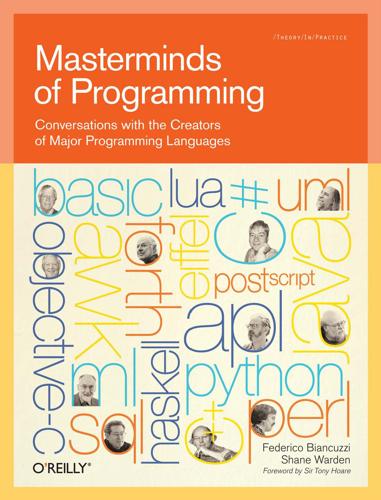
Masterminds of Programming: Conversations With the Creators of Major Programming Languages
by
Federico Biancuzzi
and
Shane Warden
Published 21 Mar 2009
Would you create a general-purpose language or a domain-specific language? Anders: I think the real answer there is “neither.” How I would address that problem is I would create a general-purpose programming language that is great at creating domain-specific languages. Again, the devil that we face with all of these domain-specific languages is that they may get the domain right but then they get the general-purposeness wrong. There are certain general-purpose features that literally every domain-specific language ends up needing. Unless the domain-specific language is purely just a data definition language where you’re just stating data, and at that point in my opinion you might as well use XML then.
…
We have a big challenge there. Also there’s a lot of talk about domain-specific languages and metaprogramming in the community these days. In my opinion, there’s more talk than reality there. I don’t think we know what the answers are. You see things like aspect-oriented programming and intentional programming, but we have yet to really nail it. Depending on who you ask, people go either, “Oh, there are no domain-specific languages,” or “Oh, domain-specific languages are everywhere.” We can’t even agree on what a domain-specific language is, in a sense—but there’s clearly a there there when it comes to devising more declarative ways of expressing yourself.
…
We have just learned that people really don’t read and don’t like thick language specifications, so we need to find a more approachable way of learning. You learn object by object, interfaces, classes, components, etc. How would you “restructure UML as a set of domain-specific languages”? Ivar: We have a basic universally applicable core in UML. I would identify aspects of that core, and describe UML by adding aspect after aspect. These aspects of UML are what we call practices when it comes to processes, and these practice-like things of UML would be domain-specific languages. A domain-specific language would, as the name suggests, support a particular domain, such as a vertical industry sector (enterprise systems, telecom systems, healthcare systems, etc.) or a discipline (requirements, design, real-time, test, etc.).
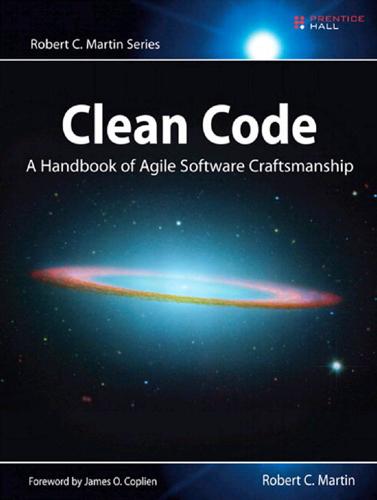
Clean Code: A Handbook of Agile Software Craftsmanship
by
Robert C. Martin
Published 1 Jan 2007
And specifying requirements in such detail that a machine can execute them is programming. Such a specification is code. I expect that the level of abstraction of our languages will continue to increase. I also expect that the number of domain-specific languages will continue to grow. This will be a good thing. But it will not eliminate code. Indeed, all the specifications written in these higher level and domain-specific language will be code! It will still need to be rigorous, accurate, and so formal and detailed that a machine can understand and execute it. The folks who think that code will one day disappear are like mathematicians who hope one day to discover a mathematics that does not have to be formal.
…
Master programmers think of systems as stories to be told rather than programs to be written. They use the facilities of their chosen programming language to construct a much richer and more expressive language that can be used to tell that story. Part of that domain-specific language is the hierarchy of functions that describe all the actions that take place within that system. In an artful act of recursion those actions are written to use the very domain-specific language they define to tell their own small part of the story. This chapter has been about the mechanics of writing functions well. If you follow the rules herein, your functions will be short, well named, and nicely organized.
…
However, the process of creating standards can sometimes take too long for industry to wait, and some standards lose touch with the real needs of the adopters they are intended to serve. Systems Need Domain-Specific Languages Building construction, like most domains, has developed a rich language with a vocabulary, idioms, and patterns21 that convey essential information clearly and concisely. In software, there has been renewed interest recently in creating Domain-Specific Languages (DSLs),22 which are separate, small scripting languages or APIs in standard languages that permit code to be written so that it reads like a structured form of prose that a domain expert might write. 21.
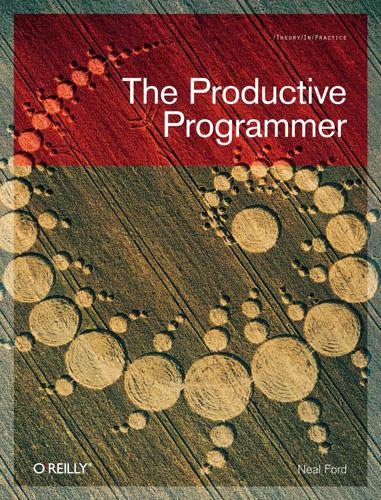
The Productive Programmer
by
Neal Ford
Published 8 Dec 2008
This diagram suggests that we’ll use a language (perhaps a statically typed language) for the stability layer, a more productive language (probably dynamic in nature, like JRuby, Groovy, or Jython) for day-to-day coding, and domain-specific languages (as discussed in “Fluent Interfaces” in Chapter 11) to align our code more closely to the needs of business analysts and end users. I think Ola has nailed the way that the disparate ideas of polyglot programming, domain-specific languages, and dynamic languages all fit together. All doctors at one time were general practitioners, but as their field advanced, specialization became inevitable. Software complexity is quickly driving us toward specialization, both because of the types of applications we must write and the underlying platforms.
…
Instead of keeping developers out of trouble, the accidental complexity of modern languages has forced developers to wade through lots of complicated workarounds. This trend has a negative impact on productivity when building complex software. What we really want is the productivity of 4GLs with the generality and flexibility of powerful general-purpose languages. Enter frameworks built with domain-specific languages (DSLs), the current exemplar being Ruby on Rails. When writing a Rails application, you don’t write that much “pure” Ruby code (and most of that is in models, for business rules). Mostly, you are writing code in the DSL part of Rails. That means that you get major bang for the buck: validates_presence_of :name, :sales_description, :logo_image_url validates_numericality_of :account_balance validates_uniqueness_of :name validates_format_of :logo_image_url, Occam’s Razor 139 :with => %r{\.
…
Note that this isn’t necessarily a dynamic language or even a Ruby tirade: a strong potential exists for statically typed type-inference languages that have a suitable syntax to also take advantage of this style of programming. For an example of this, check out Jaskell* and, in particular, the build DSL written on top of it called Neptune.† Neptune performs the same basic tasks as Ant, but it is written as a domain-specific language atop Jaskell. It shows how readable and concise you can make code in Jaskell, using a familiar problem domain. NOTE Dietzler’s Law: even general-purpose programming languages suffer from the “80-10-10” rule. The Law of Demeter The Law of Demeter was developed at Northwestern University in the late ’80s.

Programming in Scala
by
Martin Odersky
,
Lex Spoon
and
Bill Venners
Published 15 Jan 2008
You need to learn new tools, including their—sometimes obscure—error messages. You also need to figure out how to connect the output of these tools to your program. This might limit the choice of your programming language, and complicate your tool chain. This chapter presents a third alternative. Instead of using the standalone domain specific language of a parser generator, you will use an internal domain specific language, or internal DSL for short. The internal DSL will consist of a library of parser combinators—functions and operators defined in Scala that will serve as building blocks for parsers. These building blocks Cover · Overview · Contents · Discuss · Suggest · Glossary · Index Section 31.1 Chapter 31 · Combinator Parsing will map one to one to the constructions of a context-free grammar, to make them easy to understand.
…
Scala takes powerful features from object-oriented and functional languages, and combines them with a few novel ideas in a beautifully coherent whole. The syntax is so lightweight, and its primitives so expressive, that APIs can be used with virtually no syntactic overhead at all. Examples can be found in standard libraries such as parser combinators and actors. In this sense Scala supports embedded domain-specific languages. Cover · Overview · Contents · Discuss · Suggest · Glossary · Index Foreword xxviii Will Scala be the next great language? Only time will tell. Martin Odersky’s team certainly has the taste and skill for the job. One thing is sure: Scala sets a new standard against which future languages will be measured.
…
The specific idea of treating an infix operator as a function can be traced back to Iswim and Smalltalk. Another important idea is to permit a function literal (or block) as a parameter, which enables libraries to define control structures. Again, this goes back to Iswim and Smalltalk. Smalltalk and Lisp both have a flexible syntax that has been applied extensively for building internal domain-specific languages. C++ is another scalable language that can be adapted and extended through operator overloading and its template system; compared to Scala it is built on a lower-level, more systems-oriented core. Scala is also not the first language to integrate functional and object15 The major deviation from Java concerns the syntax for type annotations—it’s “variable: Type” instead of “Type variable” in Java.
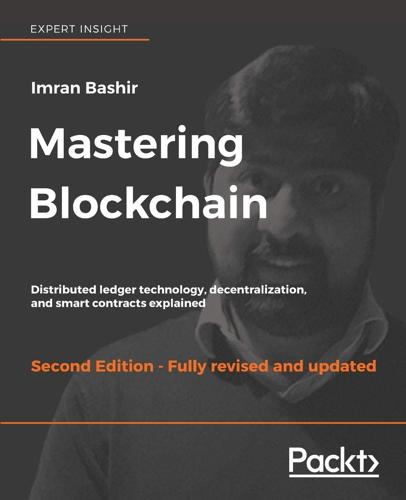
Mastering Blockchain, Second Edition
by
Imran Bashir
Published 28 Mar 2018
Contracts in the finance industry is not a new concept, and various domain-specific language DSLs are already in use in the financial industry to provide specific language for a specific domain. For example, there are DSLs available that support development of insurance products, represent energy derivatives, or are being used to build trading strategies. A comprehensive list of financial domain-specific languages can be found at http://www.dslfin.org/resources.html. It is also important to understand the concept of domain-specific languages as this type of languages can be developed to program smart contracts.
…
Some work has already been done, and Solidity is one such language that has been introduced with Ethereum blockchain to write smart contracts. Vyper is another language that has been recently introduced for Ethereum smart contact development. This idea of domain-specific languages for smart contract programming can be further extended to a graphical domain-specific language, a smart contract modeling platform where a domain expert (not a programmer, for example, a front desk dealer) can use a graphical user interface and a canvas to define and draw the semantics and performance of a financial contract. Once the flow has been drawn and completed, it can be emulated first to test and then be deployed from the same system to the target platform, which can be a blockchain.
…
The idea is to build standard templates that provide a framework to support legal agreements for financial instruments. This idea was proposed by Clack et al. in their paper published in 2016, named Smart Contract Templates: Foundations, design landscape and research directions. The paper also proposed that domain-specific languages should be built to support design and implementation of smart contract templates. A language named CLACK, a common language for augmented contract knowledge has been proposed, and research has begun to develop the language. This language is intended to be very rich and provide a large variety of functions ranging from supporting legal prose to the ability to be executed on multiple platforms and cryptographic functions.

The Joy of Clojure
by
Michael Fogus
and
Chris Houser
Published 28 Nov 2010
Regardless, our point here is that Clojure doesn’t have SQL support built in. The words SELECT, FROM, and so forth aren’t built-in forms. They’re also not regular functions, because if SELECT were, then the use of a, b, and c would be an error, because they haven’t been defined yet. So what does it take to define a domain-specific language (DSL) like this in Clojure? Well, it’s not production-ready code and doesn’t tie into any real database servers; but with just one macro and the three functions shown in listing 1.1, the preceding query returns these handy values: (query 5) ;=> ["SELECT a, b, c FROM X LEFT JOIN Y ON (X.a = Y.b) WHERE ((a < 5) AND (b < ?))"
…
The max that was given the value 5 when the query was called is extracted from the literal SQL string and provided in a separate vector, perfect for using in a prepared query in a way that will guard against SQL-injection attacks. The AND form was converted from the prefix notation of Clojure to the infix notation required by SQL. Listing 1.1. A domain-specific language for embedding SQL queries in Clojure But the point here isn’t that this is a particularly good SQL DSL—more complete ones are available.[4] Our point is that once you have the skill to easily create a DSL like this, you’ll recognize opportunities to define your own that solve much narrower, application-specific problems than SQL does.
…
Where macros differ from techniques familiar to proponents of Java’s object-oriented style—including hierarchies, frameworks, inversion of control, and the like—is that they’re treated no differently by the language itself. Clojure macros work to mold the language into the problem space rather than forcing you to mold the problem space into the constructs of the language. There’s a specific term for this, domain-specific language, but in Lisp the distinction between DSL and API is thin to the point of transparency. Envision a scenario where you want to be able to define Vars that call a function whenever their root bindings change. You could do this using the add-watch function that allows for the attachment of a watcher to a reference type that’s called whenever a change occurs within.
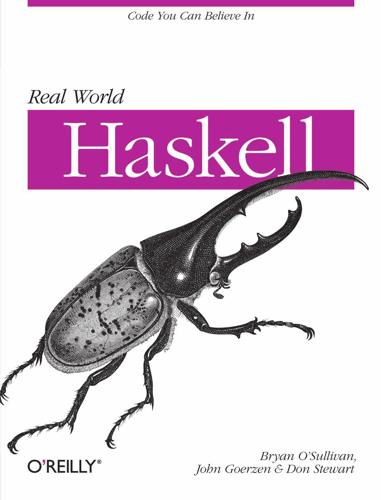
Real World Haskell
by
Bryan O'Sullivan
,
John Goerzen
,
Donald Stewart
and
Donald Bruce Stewart
Published 2 Dec 2008
, Tuning for Performance parallel programs, Defining Concurrency and Parallelism, Parallel Programming in Haskell–Parallel Strategies and MapReduce, Parallel Strategies and MapReduce MapReduce and, Parallel Strategies and MapReduce parameterized types, Polymorphism in Haskell, Parameterized Types parametric polymorphism, Polymorphism in Haskell parentheses (( )), Simple Arithmetic, Operator Precedence and Associativity, Useful Composite Data Types: Lists and Tuples, Folding from the Right arithmetic expressions, writing, Simple Arithmetic foldl and foldr functions, Folding from the Right operator precedence and, Operator Precedence and Associativity tuples, writing, Useful Composite Data Types: Lists and Tuples Parse type, Writing a Functor Instance for Parse, Motivation: Boilerplate Avoidance, Replacing the Parse Type with a Monad Stack monad stack, replacing, Replacing the Parse Type with a Monad Stack Parse wrapper, The Identity Parser parseByte function, Obtaining and Modifying the Parse State Parsec, Using Parsec–Parsing Headers, First Steps with Parsec: Simple CSV Parsing–The sepBy and endBy Combinators, Parsec and MonadPlus CSV files and, First Steps with Parsec: Simple CSV Parsing–The sepBy and endBy Combinators MonadPlus and, Parsec and MonadPlus Parsec CSV files and, The sepBy and endBy Combinators parseChar function, Using Functors for Parsing parseTimes function, Parsing a Color Image partial application of functions, Partial Function Application and Currying partial functions, Partial and Total Functions partial type Monad instances, Understanding Monad Transformers by Building One pattern matches, The Wild Card Pattern, Differences Between Data and Newtype Declarations newtype declarations and, Differences Between Data and Newtype Declarations wild card, The Wild Card Pattern pattern matching, Pattern Matching–Record Syntax, Variable Naming in Patterns, As-patterns, Filename Matching, Record Syntax, Updates, and Pattern Matching, Pattern Matching with Substrings as-patterns, As-patterns filenames, Filename Matching record syntax and, Record Syntax, Updates, and Pattern Matching substrings, binding C with Haskell, Pattern Matching with Substrings variable naming, Variable Naming in Patterns PatternGuards language extension, Pattern Guards PCRE (Perl-compatible regular expression), Interfacing with C: The FFI, Simple Tasks: Using the C Preprocessor, Adding Type Safety to PCRE C preprocessor and, Simple Tasks: Using the C Preprocessor types, adding safety to, Adding Type Safety to PCRE pcre.h header file, Passing String Data Between Haskell and C pcre_compile function, Allocating Local C Data: The Storable Class pcre_exec function, Matching on Strings pcre_fullinfo function, Extracting Information About the Pattern peek function, Passing String Data Between Haskell and C Perl, Other Things You Should Know, Interfacing with C: The FFI PCRE library and, Interfacing with C: The FFI regular expressions and, Other Things You Should Know permissive types, Strong Types PGM files, Parsing a Raw PGM File–Getting Rid of Boilerplate Code pi value, Numeric Types pipe (|), separating value constructors, Algebraic Data Types pipes (redirection), Using Pipes for Redirection–Final Words on Pipes pivots, Sequential Sorting pixels, Grayscale to Binary and Type Safety plain (P3) netpbm format, Grayscale Files plusPtr function, Passing String Data Between Haskell and C podcatcher, building, Extended Example: Web Client Programming point (.) character, Pretty Printing a String point-free expressions, Pretty Printing a String point-free style, Pretty Printing a String pointers, Passing String Data Between Haskell and C, Typed Pointers typed, Typed Pointers poke function, Passing String Data Between Haskell and C polymorphic list types, Useful Composite Data Types: Lists and Tuples polymorphic testing, Polymorphic Testing polymorphic types, Polymorphism in Haskell, Parameterized Types polymorphism, Polymorphism in Haskell–The Type of a Function of More Than One Argument positional types, The structure POSIX regular expressions, Other Things You Should Know POST method (HTTP), Parsing a HTTP Request PostgreSQL, Overview of HDBC predicates, Conditional Evaluation, Predicates: From Poverty to Riches, While Remaining Pure–Sizing a File Safely, A Domain-Specific Language for Predicates–Controlling Traversal domain-specific language for, A Domain-Specific Language for Predicates–Controlling Traversal I/O, Predicates: From Poverty to Riches, While Remaining Pure–Sizing a File Safely prefix form, Simple Arithmetic prefix notation, Infix Functions Prelude module, Getting Started with ghci, the Interpreter, Important Built-in Typeclasses prepare function, Prepared Statements pretty printers, A More General Look at Rendering, Testing Case Study: Specifying a Pretty Printer–Measuring Test Coverage with HPC testing, Testing Case Study: Specifying a Pretty Printer–Measuring Test Coverage with HPC primitive recursive functions, Folding from the Right print function, Working with Files and Handles printf (C) option, Profiling Haskell Programs PRNG (pseudorandom number generator), Running Our Code and Measuring Performance Product IDs of barcodes, A Little Bit About Barcodes product types, Generating Test Data -prof flag (GHC), Time Profiling profiling, Profiling Haskell Programs program termination, Program Termination programmable semicolon, Monads as a Programmable Semicolon programming environment, Your Haskell Environment projection functions, Working with Row Data prompt directive (ghci), Getting Started with ghci, the Interpreter property-based testing, QuickCheck: Type-Based Testing prop_one_present function, Polymorphic Testing pseudorandom number generator (PRNG), Running Our Code and Measuring Performance pseudorandom value generation, Using the State Monad: Generating Random Values Ptr type, Passing String Data Between Haskell and C pure code, Interference with Pure Code pure error handling, Error Handling pure function, Function Types and Purity, Pure Versus I/O, Parsing a Raw PGM File PGM files and, Parsing a Raw PGM File vs.
…
combinator functions, Gluing Predicates Together combining functions, Getting started with the API command-line, Command-Line Editing in ghci, A Simple Command-Line Framework, Reading Command-Line Arguments arguments, reading, Reading Command-Line Arguments editing, Command-Line Editing in ghci commas (,), Lists, Useful Composite Data Types: Lists and Tuples, First Steps with Parsec: Simple CSV Parsing CSV files and, First Steps with Parsec: Simple CSV Parsing tuples, writing, Useful Composite Data Types: Lists and Tuples compact function, Compact Rendering comparison operators, Boolean Logic, Operators, and Value Comparisons, Equality, Ordering, and Comparisons compilers, Your Haskell Environment, Compiling Haskell Source Glasgow Haskell, Your Haskell Environment components (types), Defining a New Data Type composable functors, Thinking More About Functors composite data types, Useful Composite Data Types: Lists and Tuples concat function, More Simple List Manipulations, Left Folds, Laziness, and Space Leaks, The List Monad concurrent programs, Concurrent and Multicore Programming–Conclusions, Hiding Latency, The Main Thread and Waiting for Other Threads–Communicating over Channels, Shared-State Concurrency Is Still Hard–Using Multiple Cores with GHC, A Concurrent Web Link Checker latency, hiding, Hiding Latency main thread waiting for other threads, The Main Thread and Waiting for Other Threads–Communicating over Channels shared-state, Shared-State Concurrency Is Still Hard–Using Multiple Cores with GHC conditional evaluation, Conditional Evaluation–Understanding Evaluation by Example, Conditional Evaluation with Guards constant applicative forms (CAFs), Time Profiling constants, binding C to Haskell, Binding to Constants constraints, Constraints on Type Definitions Are Bad, Constraints on Our Decoder decoding, Constraints on Our Decoder type definitions and, Constraints on Type Definitions Are Bad constructors, Construction and Deconstruction Content-Length field, Parsing Headers continuations, Parsing Headers control-with-character escapes, Control-with-Character Escapes Control.Applicative module, Infix Use of fmap Control.Arrow module, Another Round of Golf control.Concurrent module, Initializing the GUI, Concurrent Programming with Threads concurrent programming with threads, Concurrent Programming with Threads Control.Exception module, The Acquire-Use-Release Cycle, First Steps with Exceptions, Selective Handling of Exceptions Control.Monad module, Another Way of Looking at Monads, Generalized Lifting, Failing Safely with MonadPlus, Writing Tighter Code lifting, Generalized Lifting MonadPlus typeclass and, Failing Safely with MonadPlus Control.Monad.Error module, Usage of the Maybe monad, Monadic use of Either, Error Handling in Monads Control.Monad.Trans module, Designing for Unexpected Uses Control.Parallel module, Transforming Our Code into Parallel Code Control.Parallel.Strategies module, Separating Algorithm from Evaluation Coordinated Universal Time (UTC), ClockTime and CalendarTime cores, Using Multiple Cores with GHC, Understanding Core–Advanced Techniques: Fusion using multiple, Using Multiple Cores with GHC cos function, Numeric Types countEntries function, Stacking Multiple Monad Transformers CSV files, First Steps with Parsec: Simple CSV Parsing–The sepBy and endBy Combinators, The sepBy and endBy Combinators Parsec helper functions and, The sepBy and endBy Combinators ctTZName function, Using CalendarTime ctWDay function, Using CalendarTime ctYDay function, Using CalendarTime currying, using partial functions, Partial Function Application and Currying custom data types for errors, Custom data types for errors c_sin function, Foreign Language Bindings: The Basics D dash (-), as a range character, Filename Matching data keyword, Defining a New Data Type, How to Give a Type a New Identity newtype keyword and, How to Give a Type a New Identity data structures, Defining a New Data Type, The structure, Association Lists–General-Purpose Sequences, Functions Are Data, Too, Taking Advantage of Functions as Data–General-Purpose Sequences functions and, Functions Are Data, Too, Taking Advantage of Functions as Data–General-Purpose Sequences taking advantage of, Taking Advantage of Functions as Data–General-Purpose Sequences data type, defining, Defining a New Data Type–Type Synonyms (see also types) Data.Array module, Introducing Arrays, Folding over Arrays barcode recognition and, Introducing Arrays folding over arrays, Folding over Arrays Data.Bits module, Pretty Printing a String Data.ByteString.Char8 module, Text I/O, The Real Deal: Compiling and Matching Regular Expressions Data.ByteString.Lazy.Char8 module, Text I/O Data.Char module, Transforming Every Piece of Input Data.Dynamic module, Dynamic Exceptions Data.Foldable module, General-Purpose Sequences, Interference with Pure Code Data.Function module, Remembering a Match’s Parity Data.List module, As-patterns, Strictness and Tail Recursion tails function, As-patterns Data.List.lookup function, Association Lists Data.Map module, A Brief Introduction to Maps, Maps–Functions Are Data, Too Data.Monoid module, Lists, Difference Lists, and Monoids Data.Ratio module, Getting Started with ghci, the Interpreter Data.Sequence module, General-Purpose Sequences Data.Traversable module, Interference with Pure Code Data.Typeable module, Dynamic Exceptions database engines, Overview of HDBC Database.HDBC module, Initializing the GUI databases, Using Databases–Error Handling, Connecting to Databases, Simple Queries, Lazy Reading, Database Metadata connecting, Connecting to Databases lazy reading, Lazy Reading metadata, Database Metadata queries, Simple Queries dates, Dates and Times–Extended Example: Piping dates and times, Dates and Times–Extended Example: Piping Daylight Saving Time (DST), ClockTime and CalendarTime -ddump-asm compiler flag, Tuning the Generated Assembly -ddump-simpl compiler flag, Understanding Core, Profile-Driven Performance Tuning deadlocks, Safely Modifying an MVar, Deadlock Dean, Jeffrey, Finding the Most Popular URLs Debian Linux, installing GHC/Haskell libraries, Ubuntu and Debian Linux debugging, Boolean Logic, Operators, and Value Comparisons declarations (module), The Anatomy of a Haskell Module decoding barcodes, Encoding an EAN-13 Barcode deconstructors, Construction and Deconstruction delete function, Getting started with the API DeriveDataTypeable language, Dynamic Exceptions describeTable function, Database Metadata DiffArray type, Modifying Array Elements diffClockTimes function, TimeDiff for ClockTime directories, Directory and File Information disconnect function, Connecting to Databases discriminated unions, The discriminated union div function, Numeric Types do keyword, A Simple Command-Line Framework, Sequencing, Desugaring of do Blocks Monads and, Desugaring of do Blocks sequencing and, Sequencing Doc data type, Generating Test Data doskey command (ghci), Command-Line Editing in ghci double hashing, Turning Two Hashes into Many double quotes ("), writing strings, Strings and Characters, Writing Character and String Literals Double value, Some Common Basic Types, Numeric Types drivers (HDBC), installing, Installing HDBC and Drivers drop function, Functions over Lists and Tuples, Conditional Evaluation dropWhile function, Working with Sublists DST (Daylight Saving Time), ClockTime and CalendarTime duck typing, Static Types dynamic exceptions, Dynamic Exceptions–Error Handling in Monads E EAN-13 barcodes, A Little Bit About Barcodes easyList function, Testing with QuickCheck Either type, Motivation: Boilerplate Avoidance, Use of Either–Exceptions, Monadic use of Either monadic use of, Monadic use of Either elem function, Searching Lists elements function, Generating Test Data ELF object files, Binary I/O and Qualified Imports else keyword, Conditional Evaluation embedded domain specific languages, A Domain-Specific Language for Predicates–Controlling Traversal EmptyDataDecls language extension, Typed Pointers enclose function, Pretty Printing a String endBy function, The sepBy and endBy Combinators #enum construct, Automating the Binding enum keyword (C/C++), The enumeration Enum typeclass, Using CalendarTime enumeration notation, Lists enumeration types, The enumeration environment (programming), Your Haskell Environment environment variables, Environment Variables EOF (end of file), Working with Files and Handles eol function, Lookahead equality tests, The Need for Typeclasses, Equality, Ordering, and Comparisons error function, Handling Errors Through API Design errors, Boolean Logic, Operators, and Value Comparisons, Boolean Logic, Operators, and Value Comparisons, Strong Types, Algebraic Data Types, Reporting Errors, Type Inference Is a Double-Edged Sword, More Helpful Errors, Standard Input, Output, and Error, Handling Errors Through API Design, Reporting Parse Errors, Error Handling, Error Handling–Exceptions, Error Handling with Data Types–Exceptions, Custom data types for errors, Error Handling in Monads, Error Handling API design, handling, Handling Errors Through API Design compiling source code, Type Inference Is a Double-Edged Sword custom data types for, Custom data types for errors handling, Error Handling–Exceptions, Error Handling with Data Types–Exceptions, Error Handling in Monads, Error Handling data types, Error Handling with Data Types–Exceptions databases, Error Handling monads, Error Handling in Monads I/O and, Standard Input, Output, and Error messages, Boolean Logic, Operators, and Value Comparisons, Boolean Logic, Operators, and Value Comparisons, Algebraic Data Types Boolean values and, Boolean Logic, Operators, and Value Comparisons No instance, Boolean Logic, Operators, and Value Comparisons, Algebraic Data Types parsers, handling, Error Handling reporting, Reporting Errors typeclasses, Strong Types, More Helpful Errors ErrorT transformer, Error Handling in Monads escape characters, Strings and Characters escaping text, Escaping Text /etc/passwd file, Extended Example: /etc/passwd–Extended Example: Numeric Types evaluation, Understanding Evaluation by Example–Polymorphism in Haskell, Conditional Evaluation with Guards, Space Leaks and Strict Evaluation–Learning to Use seq conditional with guards, Conditional Evaluation with Guards strict, Space Leaks and Strict Evaluation–Learning to Use seq evaluation strategies, Separating Algorithm from Evaluation event-driven programming, Event-Driven Programming Exception type, First Steps with Exceptions exceptions, Error Handling, Exceptions–Error Handling in Monads, Selective Handling of Exceptions, I/O Exceptions, Throwing Exceptions, Dynamic Exceptions–Error Handling in Monads dynamic, Dynamic Exceptions–Error Handling in Monads I/O (input/output), I/O Exceptions selective handling of, Selective Handling of Exceptions throwing, Throwing Exceptions --exclude flag (hpc), Measuring Test Coverage with HPC executables, creating, Generating a Haskell Program and Importing Modules executeFile function, Using Pipes for Redirection exhaustive patterns, Exhaustive Patterns and Wild Cards explicit recursion, Explicit Recursion exponentiation (**) operator, Undefined Values, and Introducing Variables, Numeric Types exports, The Anatomy of a Haskell Module Exposed-Modules field, Writing a Package Description expressions, Passing an Expression to a Function, Introducing Local Variables functions, passing to, Passing an Expression to a Function let blocks and, Introducing Local Variables external programs, running, Running External Programs extract methods, The Monad Laws and Good Coding Style F fail function, The Monad Typeclass False Boolean value, Boolean Logic, Operators, and Value Comparisons FDs (file descriptors), Using Pipes for Redirection Fedora Linux, installing GHC/Haskell libraries, Fedora Linux fetchAllRowsAL’ function, Lazy Reading fetchAllRows’ function, Reading with Statements FFI (Haskell Foreign Function Interface), Interfacing with C: The FFI–The Real Deal: Compiling and Matching Regular Expressions FFI binding, Compilation Options and Interfacing to C fFlush function, Flushing The Buffer file descriptors (FDs), Using Pipes for Redirection file processing, Efficient File Processing–Putting Our Code to Work filename matching, Filename Matching files, Working with Files and Handles–Extended Example: Functional I/O and Temporary Files, Deleting and Renaming Files, Temporary Files, Efficient File Processing, Filename Matching, Sizing a File Safely–A Domain-Specific Language for Predicates, Directory and File Information, File Modification Times deleting/renaming, Deleting and Renaming Files filename matching, Filename Matching modification times, File Modification Times processing, Efficient File Processing (see file processing) sizing safely, Sizing a File Safely–A Domain-Specific Language for Predicates System.Directory module, using, Directory and File Information temporary, Temporary Files filesystems, I/O Case Study: A Library for Searching the Filesystem–Common Layout Styles searching, I/O Case Study: A Library for Searching the Filesystem–Common Layout Styles filter function, Searching Lists, Selecting Pieces of Input, Filters with interact interact, Filters with interact find command, I/O Case Study: A Library for Searching the Filesystem first function, Another Round of Golf flex, Using Parsec Float type, Numeric Types floating-point numbers, Simple Arithmetic, Lists enumerating, Lists fmap function, Infix Use of fmap, Monads and Functors, Moving Down the Stack monads and, Monads and Functors fold functions, Computing One Answer over a Collection, The Left Fold, Folding from the Right–Left Folds, Laziness, and Space Leaks folding from left, The Left Fold folding from right, Folding from the Right–Left Folds, Laziness, and Space Leaks foldl function, The Left Fold, Folding from the Right–Left Folds, Laziness, and Space Leaks, Left Folds, Laziness, and Space Leaks, Strictness and Tail Recursion foldr function and, Folding from the Right–Left Folds, Laziness, and Space Leaks laziness and space leaks, Left Folds, Laziness, and Space Leaks foldr function, Computing One Answer over a Collection, Folding from the Right–Left Folds, Laziness, and Space Leaks fold’ function, Strictness and Tail Recursion force function, Knowing What to Evaluate in Parallel foreign import declarations, Foreign Language Bindings: The Basics Foreign modules, Foreign Language Bindings: The Basics–Regular Expressions for Haskell: A Binding for PCRE Foreign.C.String module, Foreign Language Bindings: The Basics, Passing String Data Between Haskell and C Foreign.Marshal.Array module, Foreign Language Bindings: The Basics Foreign.Ptr module, Foreign Language Bindings: The Basics ForeignPtr type, Memory Management: Let the Garbage Collector Do the Work forkManaged function, Safe Resource Management: A Good Idea, and Easy Besides forkProcess function, Using Pipes for Redirection forM function, Why Provide Both mapM and forM?
…
combinator functions, Gluing Predicates Together combining functions, Getting started with the API command-line, Command-Line Editing in ghci, A Simple Command-Line Framework, Reading Command-Line Arguments arguments, reading, Reading Command-Line Arguments editing, Command-Line Editing in ghci commas (,), Lists, Useful Composite Data Types: Lists and Tuples, First Steps with Parsec: Simple CSV Parsing CSV files and, First Steps with Parsec: Simple CSV Parsing tuples, writing, Useful Composite Data Types: Lists and Tuples compact function, Compact Rendering comparison operators, Boolean Logic, Operators, and Value Comparisons, Equality, Ordering, and Comparisons compilers, Your Haskell Environment, Compiling Haskell Source Glasgow Haskell, Your Haskell Environment components (types), Defining a New Data Type composable functors, Thinking More About Functors composite data types, Useful Composite Data Types: Lists and Tuples concat function, More Simple List Manipulations, Left Folds, Laziness, and Space Leaks, The List Monad concurrent programs, Concurrent and Multicore Programming–Conclusions, Hiding Latency, The Main Thread and Waiting for Other Threads–Communicating over Channels, Shared-State Concurrency Is Still Hard–Using Multiple Cores with GHC, A Concurrent Web Link Checker latency, hiding, Hiding Latency main thread waiting for other threads, The Main Thread and Waiting for Other Threads–Communicating over Channels shared-state, Shared-State Concurrency Is Still Hard–Using Multiple Cores with GHC conditional evaluation, Conditional Evaluation–Understanding Evaluation by Example, Conditional Evaluation with Guards constant applicative forms (CAFs), Time Profiling constants, binding C to Haskell, Binding to Constants constraints, Constraints on Type Definitions Are Bad, Constraints on Our Decoder decoding, Constraints on Our Decoder type definitions and, Constraints on Type Definitions Are Bad constructors, Construction and Deconstruction Content-Length field, Parsing Headers continuations, Parsing Headers control-with-character escapes, Control-with-Character Escapes Control.Applicative module, Infix Use of fmap Control.Arrow module, Another Round of Golf control.Concurrent module, Initializing the GUI, Concurrent Programming with Threads concurrent programming with threads, Concurrent Programming with Threads Control.Exception module, The Acquire-Use-Release Cycle, First Steps with Exceptions, Selective Handling of Exceptions Control.Monad module, Another Way of Looking at Monads, Generalized Lifting, Failing Safely with MonadPlus, Writing Tighter Code lifting, Generalized Lifting MonadPlus typeclass and, Failing Safely with MonadPlus Control.Monad.Error module, Usage of the Maybe monad, Monadic use of Either, Error Handling in Monads Control.Monad.Trans module, Designing for Unexpected Uses Control.Parallel module, Transforming Our Code into Parallel Code Control.Parallel.Strategies module, Separating Algorithm from Evaluation Coordinated Universal Time (UTC), ClockTime and CalendarTime cores, Using Multiple Cores with GHC, Understanding Core–Advanced Techniques: Fusion using multiple, Using Multiple Cores with GHC cos function, Numeric Types countEntries function, Stacking Multiple Monad Transformers CSV files, First Steps with Parsec: Simple CSV Parsing–The sepBy and endBy Combinators, The sepBy and endBy Combinators Parsec helper functions and, The sepBy and endBy Combinators ctTZName function, Using CalendarTime ctWDay function, Using CalendarTime ctYDay function, Using CalendarTime currying, using partial functions, Partial Function Application and Currying custom data types for errors, Custom data types for errors c_sin function, Foreign Language Bindings: The Basics D dash (-), as a range character, Filename Matching data keyword, Defining a New Data Type, How to Give a Type a New Identity newtype keyword and, How to Give a Type a New Identity data structures, Defining a New Data Type, The structure, Association Lists–General-Purpose Sequences, Functions Are Data, Too, Taking Advantage of Functions as Data–General-Purpose Sequences functions and, Functions Are Data, Too, Taking Advantage of Functions as Data–General-Purpose Sequences taking advantage of, Taking Advantage of Functions as Data–General-Purpose Sequences data type, defining, Defining a New Data Type–Type Synonyms (see also types) Data.Array module, Introducing Arrays, Folding over Arrays barcode recognition and, Introducing Arrays folding over arrays, Folding over Arrays Data.Bits module, Pretty Printing a String Data.ByteString.Char8 module, Text I/O, The Real Deal: Compiling and Matching Regular Expressions Data.ByteString.Lazy.Char8 module, Text I/O Data.Char module, Transforming Every Piece of Input Data.Dynamic module, Dynamic Exceptions Data.Foldable module, General-Purpose Sequences, Interference with Pure Code Data.Function module, Remembering a Match’s Parity Data.List module, As-patterns, Strictness and Tail Recursion tails function, As-patterns Data.List.lookup function, Association Lists Data.Map module, A Brief Introduction to Maps, Maps–Functions Are Data, Too Data.Monoid module, Lists, Difference Lists, and Monoids Data.Ratio module, Getting Started with ghci, the Interpreter Data.Sequence module, General-Purpose Sequences Data.Traversable module, Interference with Pure Code Data.Typeable module, Dynamic Exceptions database engines, Overview of HDBC Database.HDBC module, Initializing the GUI databases, Using Databases–Error Handling, Connecting to Databases, Simple Queries, Lazy Reading, Database Metadata connecting, Connecting to Databases lazy reading, Lazy Reading metadata, Database Metadata queries, Simple Queries dates, Dates and Times–Extended Example: Piping dates and times, Dates and Times–Extended Example: Piping Daylight Saving Time (DST), ClockTime and CalendarTime -ddump-asm compiler flag, Tuning the Generated Assembly -ddump-simpl compiler flag, Understanding Core, Profile-Driven Performance Tuning deadlocks, Safely Modifying an MVar, Deadlock Dean, Jeffrey, Finding the Most Popular URLs Debian Linux, installing GHC/Haskell libraries, Ubuntu and Debian Linux debugging, Boolean Logic, Operators, and Value Comparisons declarations (module), The Anatomy of a Haskell Module decoding barcodes, Encoding an EAN-13 Barcode deconstructors, Construction and Deconstruction delete function, Getting started with the API DeriveDataTypeable language, Dynamic Exceptions describeTable function, Database Metadata DiffArray type, Modifying Array Elements diffClockTimes function, TimeDiff for ClockTime directories, Directory and File Information disconnect function, Connecting to Databases discriminated unions, The discriminated union div function, Numeric Types do keyword, A Simple Command-Line Framework, Sequencing, Desugaring of do Blocks Monads and, Desugaring of do Blocks sequencing and, Sequencing Doc data type, Generating Test Data doskey command (ghci), Command-Line Editing in ghci double hashing, Turning Two Hashes into Many double quotes ("), writing strings, Strings and Characters, Writing Character and String Literals Double value, Some Common Basic Types, Numeric Types drivers (HDBC), installing, Installing HDBC and Drivers drop function, Functions over Lists and Tuples, Conditional Evaluation dropWhile function, Working with Sublists DST (Daylight Saving Time), ClockTime and CalendarTime duck typing, Static Types dynamic exceptions, Dynamic Exceptions–Error Handling in Monads E EAN-13 barcodes, A Little Bit About Barcodes easyList function, Testing with QuickCheck Either type, Motivation: Boilerplate Avoidance, Use of Either–Exceptions, Monadic use of Either monadic use of, Monadic use of Either elem function, Searching Lists elements function, Generating Test Data ELF object files, Binary I/O and Qualified Imports else keyword, Conditional Evaluation embedded domain specific languages, A Domain-Specific Language for Predicates–Controlling Traversal EmptyDataDecls language extension, Typed Pointers enclose function, Pretty Printing a String endBy function, The sepBy and endBy Combinators #enum construct, Automating the Binding enum keyword (C/C++), The enumeration Enum typeclass, Using CalendarTime enumeration notation, Lists enumeration types, The enumeration environment (programming), Your Haskell Environment environment variables, Environment Variables EOF (end of file), Working with Files and Handles eol function, Lookahead equality tests, The Need for Typeclasses, Equality, Ordering, and Comparisons error function, Handling Errors Through API Design errors, Boolean Logic, Operators, and Value Comparisons, Boolean Logic, Operators, and Value Comparisons, Strong Types, Algebraic Data Types, Reporting Errors, Type Inference Is a Double-Edged Sword, More Helpful Errors, Standard Input, Output, and Error, Handling Errors Through API Design, Reporting Parse Errors, Error Handling, Error Handling–Exceptions, Error Handling with Data Types–Exceptions, Custom data types for errors, Error Handling in Monads, Error Handling API design, handling, Handling Errors Through API Design compiling source code, Type Inference Is a Double-Edged Sword custom data types for, Custom data types for errors handling, Error Handling–Exceptions, Error Handling with Data Types–Exceptions, Error Handling in Monads, Error Handling data types, Error Handling with Data Types–Exceptions databases, Error Handling monads, Error Handling in Monads I/O and, Standard Input, Output, and Error messages, Boolean Logic, Operators, and Value Comparisons, Boolean Logic, Operators, and Value Comparisons, Algebraic Data Types Boolean values and, Boolean Logic, Operators, and Value Comparisons No instance, Boolean Logic, Operators, and Value Comparisons, Algebraic Data Types parsers, handling, Error Handling reporting, Reporting Errors typeclasses, Strong Types, More Helpful Errors ErrorT transformer, Error Handling in Monads escape characters, Strings and Characters escaping text, Escaping Text /etc/passwd file, Extended Example: /etc/passwd–Extended Example: Numeric Types evaluation, Understanding Evaluation by Example–Polymorphism in Haskell, Conditional Evaluation with Guards, Space Leaks and Strict Evaluation–Learning to Use seq conditional with guards, Conditional Evaluation with Guards strict, Space Leaks and Strict Evaluation–Learning to Use seq evaluation strategies, Separating Algorithm from Evaluation event-driven programming, Event-Driven Programming Exception type, First Steps with Exceptions exceptions, Error Handling, Exceptions–Error Handling in Monads, Selective Handling of Exceptions, I/O Exceptions, Throwing Exceptions, Dynamic Exceptions–Error Handling in Monads dynamic, Dynamic Exceptions–Error Handling in Monads I/O (input/output), I/O Exceptions selective handling of, Selective Handling of Exceptions throwing, Throwing Exceptions --exclude flag (hpc), Measuring Test Coverage with HPC executables, creating, Generating a Haskell Program and Importing Modules executeFile function, Using Pipes for Redirection exhaustive patterns, Exhaustive Patterns and Wild Cards explicit recursion, Explicit Recursion exponentiation (**) operator, Undefined Values, and Introducing Variables, Numeric Types exports, The Anatomy of a Haskell Module Exposed-Modules field, Writing a Package Description expressions, Passing an Expression to a Function, Introducing Local Variables functions, passing to, Passing an Expression to a Function let blocks and, Introducing Local Variables external programs, running, Running External Programs extract methods, The Monad Laws and Good Coding Style F fail function, The Monad Typeclass False Boolean value, Boolean Logic, Operators, and Value Comparisons FDs (file descriptors), Using Pipes for Redirection Fedora Linux, installing GHC/Haskell libraries, Fedora Linux fetchAllRowsAL’ function, Lazy Reading fetchAllRows’ function, Reading with Statements FFI (Haskell Foreign Function Interface), Interfacing with C: The FFI–The Real Deal: Compiling and Matching Regular Expressions FFI binding, Compilation Options and Interfacing to C fFlush function, Flushing The Buffer file descriptors (FDs), Using Pipes for Redirection file processing, Efficient File Processing–Putting Our Code to Work filename matching, Filename Matching files, Working with Files and Handles–Extended Example: Functional I/O and Temporary Files, Deleting and Renaming Files, Temporary Files, Efficient File Processing, Filename Matching, Sizing a File Safely–A Domain-Specific Language for Predicates, Directory and File Information, File Modification Times deleting/renaming, Deleting and Renaming Files filename matching, Filename Matching modification times, File Modification Times processing, Efficient File Processing (see file processing) sizing safely, Sizing a File Safely–A Domain-Specific Language for Predicates System.Directory module, using, Directory and File Information temporary, Temporary Files filesystems, I/O Case Study: A Library for Searching the Filesystem–Common Layout Styles searching, I/O Case Study: A Library for Searching the Filesystem–Common Layout Styles filter function, Searching Lists, Selecting Pieces of Input, Filters with interact interact, Filters with interact find command, I/O Case Study: A Library for Searching the Filesystem first function, Another Round of Golf flex, Using Parsec Float type, Numeric Types floating-point numbers, Simple Arithmetic, Lists enumerating, Lists fmap function, Infix Use of fmap, Monads and Functors, Moving Down the Stack monads and, Monads and Functors fold functions, Computing One Answer over a Collection, The Left Fold, Folding from the Right–Left Folds, Laziness, and Space Leaks folding from left, The Left Fold folding from right, Folding from the Right–Left Folds, Laziness, and Space Leaks foldl function, The Left Fold, Folding from the Right–Left Folds, Laziness, and Space Leaks, Left Folds, Laziness, and Space Leaks, Strictness and Tail Recursion foldr function and, Folding from the Right–Left Folds, Laziness, and Space Leaks laziness and space leaks, Left Folds, Laziness, and Space Leaks foldr function, Computing One Answer over a Collection, Folding from the Right–Left Folds, Laziness, and Space Leaks fold’ function, Strictness and Tail Recursion force function, Knowing What to Evaluate in Parallel foreign import declarations, Foreign Language Bindings: The Basics Foreign modules, Foreign Language Bindings: The Basics–Regular Expressions for Haskell: A Binding for PCRE Foreign.C.String module, Foreign Language Bindings: The Basics, Passing String Data Between Haskell and C Foreign.Marshal.Array module, Foreign Language Bindings: The Basics Foreign.Ptr module, Foreign Language Bindings: The Basics ForeignPtr type, Memory Management: Let the Garbage Collector Do the Work forkManaged function, Safe Resource Management: A Good Idea, and Easy Besides forkProcess function, Using Pipes for Redirection forM function, Why Provide Both mapM and forM?

Programming Scala: tackle multicore complexity on the JVM
by
Venkat Subramaniam
Published 1 May 2009
This eliminates the concerns of managing contention when multiple threads access the object. Java’s String is a great example of an immutable object. 1. Download at Boykma.Com Report erratum Prepared exclusively for sam kaplan this copy is (P1.0 printing, June 2009) 12 W HY S CALA ? Domain-Specific Languages Implemented Using Scala, Groovy, JRuby, ... Manage Concurrency with Scala Intensive Pattern Matching/ Parsing Using Scala Metaprogramming Dynamic Langs like Groovy/JRuby/Clojure Java, Scala, Other Strongly Typed Languages for Infrastructure JVM What about other languages on the JVM...Groovy, JRuby, Clojure?
…
You can extend Java classes from Scala classes, and vice versa. You can also use Java classes in Scala and Scala classes in Java. You can program applications using multiple languages and be a true Polyglot Programmer6 —you can take advantage of Scala in Java applications where you need concurrency or conciseness (like creating domain-specific languages). Scala is a statically typed language, but, unlike Java, it has sensible static typing. Scala applies type inference in places it can. So, instead of specifying the type repeatedly and redundantly, you can rely on the language to learn the type and enforce it through the rest of the code.
…
We can ask Scala to quietly convert the Int to something that will help us accomplish the previous operation—enter implicit type conversion. Implicit type conversion can help you extend the language to create your own vocabulary or syntax that’s specific to your application and its domain or to create your own domain-specific languages. Let’s start with some crufty code to first understand the concept and then refactor that into a nice class. We need to define the variables ago and from_now and ask Scala to accept the days( ) method. Defining variables is simple, but for it to accept the method, let’s create a class DateHelper that takes an Int as a constructor parameter: import java.util._ class DateHelper(number: Int) { def days(when: String) : Date = { var date = Calendar.getInstance() when match { case "ago" => date.add(Calendar.DAY_OF_MONTH, -number) case "from_now" => date.add(Calendar.DAY_OF_MONTH, number) case _ => date } date.getTime() } } The DateHelper class provides the days( ) method we want.2 Now, all we have to do is convert an Int to a DateHelper.
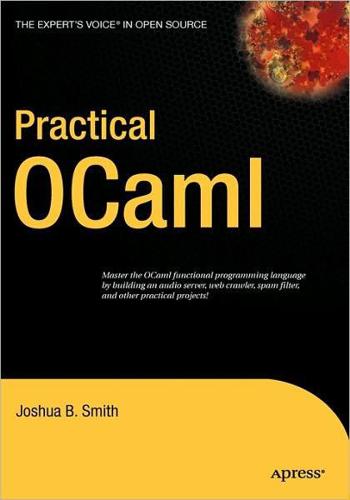
Practical OCaml
by
Joshua B. Smith
Published 30 Sep 2006
See CGI comparator function, 96, 137 compare function, 37, 90, 137 comparison functions, 90 compile-time flags, 310 compiler flags, 405 compilers, 405 Complex library, 29 composite types, 68 composition, vs. inheritance, 238 concat function, 93, 97, 137 620Xidxfinal.qxd 9/22/06 4:19 PM Page 447 ■INDEX ■D data member access, 233 data structures, 51, 252 data types, 225 data-driven applications, 2 data-handling functions, for securities trades database, 54–59 databases creating, 51–60 displaying/importing data and, 73–87 reports and, 73–87 DbC (Design by Contract), 133 deadlocks, 313 debuggers, OCaml and, 404 debugging, threads and, 309, 327 default match, 47 delay function, 311, 317 dependency graphs, 145, 148 Design by Contract (DbC), 133 diamond-shaped inheritance, 241 diff command, 380 difftime function, 359 direct objects, 231 directed graphs, 347 directories, reading, 119 -disntr flag, 408 distance calculations, 21 distance type, 41–44 Division_by_zero exception, 127, 172 -dllib –l<LIBNAME> flag, 407 -dllpath <DIR> flag, 407 documentation extracting from comments, 145 ocamldoc for, 145–154 domain-specific languages (DSLs), 203, 411, 415, 419 dot notation, 17 doubles, copying, 352 double_val(v) function, 352 downloads, multipart file, 278 Doxygen, 145 dreaded diamond, 241 DSLs (domain-specific languages), 203, 411, 415, 419 -dtypes compiler flag, 406 duck typing, 231 Dynalink, 289 dynamic linking of code, 356 ■E eager type, 67 EBNF (Extended Backus-Naur Form), 210 echo servers, 179 Eclipse, 14, 402 edit distance, 243–248 Emacs, 14, 402 email type, 136 emptybmp function, 385 encapsulation, 225, 233, 245 encoding, 65 Endianness, 375 End_of_file exception, 78, 126, 131 entry points, 262, 267 Find it faster at http://superindex.apress.com/ concurrency, 271, 309 Condition module, 318 condition variables, 313, 318 configuration file parser (sample), 415–419 Configure macros, 401 constraining types, 35 constraints, parameterized classes and, 234 constructor arguments, 229 contents attribute, 22 conversions, for distances, 31, 41 Conway’s game, 390 Conway, John, 390 cookies, blog server example and, 283–288 Coq proof assistant, 29 correctness, of programs, 271 Cousineau, Guy, 3 cpp (C preprocessor), 411 CPUs, multiple, 310 create function, 317 arrays and, 97 Condition module and, 318 hashtables and, 100 Thread module and, 311, 316 creating arrays, 97 custom exceptions, 127 custom tags/generators, 153 databases, 51–60 enums, 26 functions, 30–32, 33–36 hashtables, 100 http clients, 120 lists, 96 maps, 109 modules, 156 queues, 103 records, 28 servers, 179 sets, 107 sockets, 120 stacks, 105 threads, 310–316 values, 33–36 curried functions, 17, 36, 41 currying functors, 163 custom exceptions, 127 -custom flag, 407, 409 447 620Xidxfinal.qxd 448 9/22/06 4:19 PM Page 448 ■INDEX enums (enumerated values), 23, 26 eprintf function, 75 equality, floats and, 63 error handling/reporting, 18, 137 errorstring exception and, 414 ocamllex and, 201, 205 revised syntax and, 412 errorstring exception, 414 Euclid’s algorithm, 30 event channels, 315, 319 Event module, 315, 319 events, 315–317, 319 Events module, 340 Ex-nunc framework, 276 examples.
…
. . . . . . . . . . . . . . . . . . . . . . . . . . . . . . . . . . . . . . . . . . . . . . . 412 Streams and Parsers. . . . . . . . . . . . . . . . . . . . . . . . . . . . . . . . . . . . . . . . . . . . 413 Understanding Streams . . . . . . . . . . . . . . . . . . . . . . . . . . . . . . . . . . . . 413 Understanding Parsers . . . . . . . . . . . . . . . . . . . . . . . . . . . . . . . . . . . . . 415 Example Configuration File Parser . . . . . . . . . . . . . . . . . . . . . . . . . . . 415 Domain-Specific Languages (DSLs) . . . . . . . . . . . . . . . . . . . . . . . . . . . . . . . 419 Extending OCaml . . . . . . . . . . . . . . . . . . . . . . . . . . . . . . . . . . . . . . . . . . . . . . . 420 More About Quotations and Levels . . . . . . . . . . . . . . . . . . . . . . . . . . . 421 A Longer Example . . . . . . . . . . . . . . . . . . . . . . . . . . . . . . . . . . . . . . . . . . . . . . 421 Complex Example . . . . . . . . . . . . . . . . . . . . . . . . . . . . . . . . . . . . . . . . . . . . . . 423 Conclusion . . . . . . . . . . . . . . . . . . . . . . . . . . . . . . . . . . . . . . . . . . . . . . . . . . . . 429 ■CHAPTER 30 Conclusion. . . . . . . . . . . . . . . . . . . . . . . . . . . . . . . . . . . . . . . . . . . . . . . . . . 431 What This Book Covered . . . . . . . . . . . . . . . . . . . . . . . . . . . . . . . . . . . . . . . . 431 ocamllex and ocamlyacc . . . . . . . . . . . . . . . . . . . . . . . . . . . . . . . . . . . 432 Camlp4 and Stream Parsers . . . . . . . . . . . . . . . . . . . . . . . . . . . . . . . . 432 Where to Go from Here . . . . . . . . . . . . . . . . . . . . . . . . . . . . . . . . . . . . . . . . . . 433 More Functional Programming . . . . . . . . . . . . . . . . . . . . . . . . . . . . . . 433 Camlp4 . . . . . . . . . . . . . . . . . . . . . . . . . . . . . . . . . . . . . . . . . . . . . . . . . . 433 Resources . . . . . . . . . . . . . . . . . . . . . . . . . . . . . . . . . . . . . . . . . . . . . . . . . . . . . 433 Mailing Lists . . . . . . . . . . . . . . . . . . . . . . . . . . . . . . . . . . . . . . . . . . . . . . 433 Other Resources. . . . . . . . . . . . . . . . . . . . . . . . . . . . . . . . . . . . . . . . . . . 434 Thank You . . . . . . . . . . . . . . . . . . . . . . . . . . . . . . . . . . . . . . . . . . . . . . . . . . . . . 434 Final Example . . . . . . . . . . . . . . . . . . . . . . . . . . . . . . . . . . . . . . . . . . . . . . . . . . 434 ■INDEX . . . . . . . . . . . . . . . . . . . . . . . . . . . . . . . . . . . . . . . . . . . . . . . . . . . . . . . . . . . . . . . . . . . . . . . 445 xix 620Xfmfinal.qxd 9/22/06 4:21 PM Page xx 620Xfmfinal.qxd 9/22/06 4:21 PM Page xxi About the Author ■JOSHUA B.
…
This chapter also shows you how to set up your own Ocaml development environment. Camlp4 (Chapter 29) Camlp4, the Ocaml preprocessor and pretty printer, is one of the most powerful and difficultto-understand parts of the Ocaml system. This application and library set enables you to create domain-specific languages (DSLs) on-the-fly and actually rewrite the Ocaml language. This chapter provides a basic understanding of the functionality that Camlp4 provides. Conclusion (Chapter 30) A wrap up of all things OCaml. What Isn’t Covered? This book is more than just a tutorial. I have tried to cover all of the areas of normal OCaml programming.
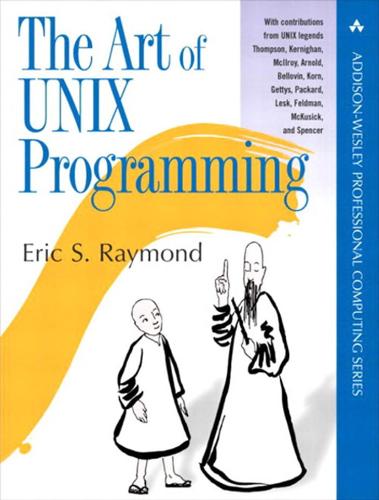
The Art of UNIX Programming
by
Eric S. Raymond
Published 22 Sep 2003
Unix has a long tradition of hosting little languages specialized for a particular application domain, languages that can enable you to drastically reduce the line count of your programs. Domain-specific language examples include the numerous Unix typesetting languages (troff, eqn, tbl, pic, grap), shell utilities (awk, sed, dc, bc), and software development tools (make, yacc, lex). There is a fuzzy boundary between domain-specific languages and the more flexible sort of application run-control file (sendmail, BIND, X); another with data-file formats; and another with scripting languages (which we'll survey in Chapter 14). Historically, domain-specific languages of this kind have been called ‘little languages’ or ‘minilanguages’ in the Unix world, because early examples were small and low in complexity relative to general-purpose languages (all three terms for the category are in common use).
…
The flip side of this observation is that a minilanguage is likely to be a good approach whenever the domain primitives in your application area are simple and stereotyped, but the ways in which users are likely to want to apply them are fluid and varying. For some related ideas, find a description of the Alternate Hard And Soft Layers and Scripted Components design patterns. An interesting survey of design styles and techniques in minilanguages is Notable Design Patterns for Domain-Specific Languages [Spinellis]. Choosing the Right Complexity Level The first important thing to bear in mind when designing a minilanguage is, as usual, to keep it as simple as possible. The taxonomy diagram we used to organize the case studies implies a hierarchy of complexity; you want to keep your design as far toward the left-hand edge as possible.
…
One is the wide use of Unix as a research and teaching platform. The other (far more relevant for working programmers) is the fact that matching your application design with the proper implementation language(s) can make an immense difference in your productivity. Therefore the Unix tradition encourages the design of domain-specific languages (as we mentioned in Chapter 7 and Chapter 9) and what are now generally called scripting languages—those designed specifically to glue together other applications and tools. The term “scripting language” probably derives from the term “script” that was applied to a potted input for a normally interactive program, in particular sh or ed — a much more felicitous term than the “runcom” we inherited from Unix's ancestor CTSS.
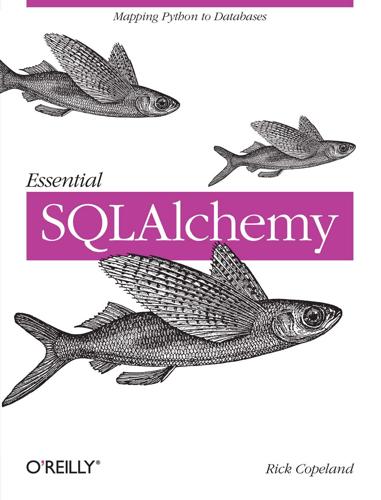
Essential SQLAlchemy
by
Rick Copeland
Published 4 Jun 2008
(question mark) as a name value, SQL Expression Language | bitwise logical operator, Operators and functions in WHERE clauses ~ bitwise logical operator, Operators and functions in WHERE clauses A active defaults, Defaults “active record” patterns, The data mapper pattern acts_as_versioned( ) statement, Versioned Extension adds( ) decorator, Using custom collections in relations add_column( ) method, Customizing the Select Statement in ORM Queries, Other Query Methods add_entity( ) method, Customizing the Select Statement in ORM Queries, Other Query Methods after_commit( ) (SessionExtension class), Extending Sessions after_delete( ) hook (MapperExtension), Extending Mappers after_flush( ) (SessionExtension class), Extending Sessions after_flush_postexec( ) (SessionExtension class), Extending Sessions after_insert( ) hook (MapperExtension), Extending Mappers @after_revert decorator, Versioned Extension after_update( ) hook (MapperExtension), Extending Mappers alias( ) method, Using aliases aliases, Using aliases all parameter, Cascading Changes to Related Objects all( ) method, Querying at the ORM Level, Other Query Methods allow_column_override parameter (mapper( ) function), Other mapper( ) Parameters allow_null_pks parameter (mapper( ) function), Other mapper( ) Parameters ALTER TABLE command, Foreign keys always_refresh parameter (mapper( ) function), Other mapper( ) Parameters AND boolean operator, Operators and functions in WHERE clauses any( ) method, Querying at the ORM Level append( ) function, Updating Objects in the Session appender( ) decorator, Using custom collections in relations append_result( ) hook (MapperExtension), Extending Mappers application-specific custom types, Application-Specific Custom Types apply_avg( ) method, Other Query Methods apply_labels( ) method, Using the “generative” query interface apply_max( ) method, Other Query Methods apply_min( ) method, Other Query Methods apply_sum( ) method, Other Query Methods arbitrary selectables, mapping, Mapping Arbitrary Selectables architecture (SQLAlchemy), SQLAlchemy Architecture, Object Relational Mapper (ORM) *args argument Column constructor, Column Definitions Table constructor, Defining Tables arithmetic operators, Operators and functions in WHERE clauses asc( ) method, Querying at the ORM Level AssertionPool pool type (sqlalchemy.pool), Connection Pooling associable( ) function, Associable Extension association proxys, Association Proxy as_scalar( ) method, Using the “generative” query interface attribute Elixir keyword argument, Fields and Properties attribute-based syntax (Elixir), Attribute-based syntax attribute_mapped_collection( ) method, Using custom collections in relations autoflush argument (sessionmaker( ) method), Creating a Session autoflush feature, flushing sessions, The unit of work pattern autoflush( ) method, Other Query Methods autoincrement argument (Column constructor), Column Definitions autoload parameter, MetaData Management Table object, Defining Tables autoload_with argument (Table), Defining Tables AVG( ) function, Other Query Methods avg( ) method, Other Query Methods B backref( ) function, Using BackRefs, Cascading Changes to Related Objects parameters, Other relation( ) and backref( ) Parameters backrefs, Using BackRefs batch parameter (mapper( ) function), Other mapper( ) Parameters before_commit( ) (SessionExtension class), Extending Sessions before_delete( ) hook (MapperExtension), Extending Mappers before_flush( ) (SessionExtension class), Extending Sessions before_insert( ) hook (MapperExtension), Extending Mappers before_update( ) hook (MapperExtension), Extending Mappers begin( ) method, Flushing, Committing, and Rolling Back Session Changes belongs_to( ) statement, DSL syntax between( ) method, Querying at the ORM Level ClauseElement, Operators and functions in WHERE clauses bind argument MetaData.reflect( ) method, Table reflection sessionmaker( ) method, Creating a Session bind parameters, Getting Started with MetaData, Operators and functions in WHERE clauses custom, using, Using custom bind parameters MetaData methods and, Create/drop MetaData and schema objects select( ), The select( ) function versus the select( ) method bind( ) method, Using SqlSoup for ORM-Style Queries and Updates bind=None parameter (text( ) function), Using literal text in queries bindparam( ) method, Using custom bind parameters, Using literal text in queries binds argument (sessionmaker( ) method), Creating a Session boolean operators, Operators and functions in WHERE clauses bound MetaData, Binding MetaData bounded constructors, Getting Started with MetaData built-in type TypeEngine objects, Built-in Types Byer, Mike, What Is SQLAlchemy C c attribute (mapped class), SQLAlchemy Philosophy .c objects, SQL Expression Language cascade parameter, Other relation( ) and backref( ) Parameters CheckConstraint, CHECK constraints checkfirst parameter (MetaData), Create/drop MetaData and schema objects CheeseShop, Installing setup tools ClauseElement objects, Operators and functions in WHERE clauses clear( ) method, Using SqlSoup for ORM-Style Queries and Updates clear_mappers( ) function, Basic Object Mapping close( ) method, Result set objects, Other Session Methods ResultProxy object, Database Connections and ResultProxys collection_class parameter, Other relation( ) and backref( ) Parameters, Using custom collections in relations colname Elixir keyword argument, Fields and Properties colname parameter (ManyToOne), Attribute-based syntax Column class, Defining Tables definitions, Column Definitions column parameter (ForeignKey constructor), Foreign keys column( ) method, Using the “generative” query interface columns parameter (ForeignKeyConstraint class), Foreign keys columns=None parameter (select( )), The select( ) function versus the select( ) method column_kwargs parameter (ManyToOne), Attribute-based syntax column_mapped_collections( ) method, Using custom collections in relations column_prefix keyword, Customizing the name of the mapped column column_prefix parameter (mapper( ) function), Other mapper( ) Parameters column_property( ) function, Mapping subqueries, Elixir deferred properties commit( ) method, Flushing, Committing, and Rolling Back Session Changes compare_with( ) method, Versioned Extension comparison operators, Operators and functions in WHERE clauses __composite_values__( ) method, Mapping composite values concat( ) method, Querying at the ORM Level concrete parameter (mapper( ) function), Other mapper( ) Parameters concrete table inheritance, Overview of Inheritance Mapping mapping, Concrete Table Inheritance Mapping, Joined Table Inheritance Mapping configure( ) method (Session), Creating a Session connect( ) method, Connection pooling, Database Connections and ResultProxys, Connection Pooling Connection object, Database Connections and ResultProxys connection pools, Connection pooling, Engines and MetaData, Connection Pooling, MetaData Engine class and, Engines and Connectables connect_args parameter (create_engine( ) function), Engines and Connectables Constraint class, Constraints, Defaults constraint parameter (ForeignKey constructor), Foreign keys constraint_kwargs parameter (ManyToOne), Attribute-based syntax contains( ) method, Querying at the ORM Level contains_alias( ) method, ORM Querying with Joins contains_eager( ) method, ORM Querying with Joins, Customizing the Select Statement in ORM Queries contextual sessions, Contextual or Thread-Local Sessions convert_bind_param( ) method, Implementing a TypeDecorator convert_result_value( ), Implementing a TypeDecorator convert_unicode parameter (create_engine( ) function), Engines and Connectables correlate( ) method, Using the “generative” query interface, Correlated versus uncorrelated subqueries correlate=True parameter (select( )), The select( ) function versus the select( ) method COUNT( ) function, Other Query Methods count( ) method, Using the “generative” query interface, Other Query Methods CREATE TABLE statement, Foreign keys create( ) method, Defining Tables, Type System Overview MetaData/schema objects and, Create/drop MetaData and schema objects create_all( ) method, Create/drop MetaData and schema objects, Type System Overview create_engine( ) function, Engine, Engines and Connectables configuring logging and, Configuring SQLAlchemy Logging create_instance( ) hook (MapperExtension), Extending Mappers creator parameter (create_engine( ) function), Engines and Connectables D data manipulation language (DML), Inserts, Updates, and Deletes data mapper pattern, Design Concepts in the ORM database drivers, installing, Installing Some Database Drivers datetime.now method, Active defaults DB-API interface, What Is SQLAlchemy DB2 database, What Is SQLAlchemy decorators, Using custom collections in relations default argument (Column constructor), Column Definitions insert defaults and, Active defaults defaults, Defaults, Defining Indexes defer( ) function, Eager versus deferred loading defer( ) method, ORM Querying with Joins deferred Elixir keyword argument, Fields and Properties deferred( ) function, Eager versus deferred loading delete parameter, Cascading Changes to Related Objects DELETE statements, Delete Statements delete( ) function, Performing Queries and Updates SqlSoup, using, Using SqlSoup for ORM-Style Queries and Updates delete( ) method, Delete Statements, Other Session Methods, Querying Using Elixir, Using SqlSoup for ORM-Style Queries and Updates sessions, deleting objects from, Deleting Objects from the Session delete-orphan, Cascading Changes to Related Objects desc( ) method, Querying at the ORM Level Detached state (Session), Saving Objects to the Session dialect management (SQL), SQL dialect management dialect-specific types, Dialect-Specific Types distinct( ) method, Ordering and grouping results, returning distinct values, Using the “generative” query interface, Querying at the ORM Level, Other Query Methods ClauseElement object, Operators and functions in WHERE clauses distinct=False parameter (select( )), The select( ) function versus the select( ) method DML (data manipulation language), Inserts, Updates, and Deletes domain specific language (DSL) syntax, Using Elixir, DSL syntax drivers, installing, Installing Some Database Drivers drop_all( ) method, Create/drop MetaData and schema objects DSL (domain specific language) syntax, Using Elixir, DSL syntax dynamic_loader( ) method, Updating Objects in the Session E eagerload( ) method, ORM Querying with Joins eagerload_all( ) method, ORM Querying with Joins Easyinstall, Getting Started easy_install tools, Installing setup tools echo argument configuring logging and, Configuring SQLAlchemy Logging echo argument (create_engine( ) function), Engines and Connectables echo_pool argument configuring logging and, Configuring SQLAlchemy Logging create_engine( ) function), Engines and Connectables echo_uow argument (sessionmaker( ) method), Creating a Session echo_uow flag (create_engine( ) function), Configuring SQLAlchemy Logging EGG files, Installing setup tools Elixir, Elixir: A Declarative Extension to SQLAlchemy, Versioned Extension extensions, Elixir Extensions, Versioned Extension inheritance, Inheritance installing/using, Installing Elixir querying using, Querying Using Elixir relations, Relations elixir.ext.encrypted extension, Encrypted Extension elixir.ext.versioned extension, Versioned Extension __emulates__ class attribute, Using custom collections in relations encoding parameter (create_engine( ) function), Engines and Connectables endswitch( ) method, Querying at the ORM Level endswith( ) method (ClauseElement), Operators and functions in WHERE clauses Engine class, Engine, MetaData Management, Object Relational Mapper (ORM), Engines and MetaData, Adapt Tables from one MetaData to another connection pools, Connection pooling managing connections, Engines and Connectables, MetaData Engine pools connection pools, Connection Pooling entities, The Object/Relational “Impedance Mismatch” entity_name parameter (mapper( ) function), Other mapper( ) Parameters __eq__( ) method, Mapping composite values EXCEPT clause, Set operations (UNION, INTERSECT, EXCEPT) except_( ) function, Set operations (UNION, INTERSECT, EXCEPT) except_( ) method, Using the “generative” query interface except_all( ) function, Set operations (UNION, INTERSECT, EXCEPT) except_all( ) method, Using the “generative” query interface exclude_properties, Using include_properties and exclude_properties exclude_properties parameter (mapper( ) function), Other mapper( ) Parameters execute( ) method, Database Connections and ResultProxys, Inserts, Updates, and Deletes, Other Session Methods executemany( ) method, Insert Statements expire( ) method, Other Session Methods, Querying Using Elixir explicit execution, Getting Started with MetaData explicit sequences, creating, Creating Explicit Sequences expression language (SQL), SQL Expression Language, Object Relational Mapper (ORM) expression-builders (Pythonic), What Is SQLAlchemy expunge parameter, Cascading Changes to Related Objects expunge( ) method, Other Session Methods, Querying Using Elixir extending session, Extending Sessions extension argument (sessionmaker( ) method), Creating a Session extension parameter (mapper( ) function), Other mapper( ) Parameters, Extending Mappers extension( ) method, ORM Querying with Joins ex_setup.py file, Installing setup tools F fetchall( ) method, Result set objects ResultProxy), Database Connections and ResultProxys fetchmany( ) method, Result set objects fetchone( ) method, Result set objects ResultProxy, Database Connections and ResultProxys Field( ) class, Fields and Properties filter( ) method, Mapping Objects to Tables, Querying at the ORM Level, Other Query Methods querying with joins, ORM Querying with Joins filter_by( ) method, Object Relational Mapper (ORM), Mapping Objects to Tables, Querying at the ORM Level, Other Query Methods, Querying Using Elixir querying with joins, ORM Querying with Joins Firebird database, Other supported drivers first( ) (Query object), Querying at the ORM Level first( ) method, Other Query Methods flush( ) function, Mapping Objects to Tables saving objects to sessions and, Saving Objects to the Session flush( ) method, Flushing, Committing, and Rolling Back Session Changes, Querying Using Elixir, Using SqlSoup for ORM-Style Queries and Updates for+update=False parameter (select( )), The select( ) function versus the select( ) method foreign keys, The Object/Relational “Impedance Mismatch” ForeignKey constructor, Foreign keys ForeignKeyConstraint class, Foreign keys foreign_keys parameter, Other relation( ) and backref( ) Parameters for_fields parameter, Encrypted Extension for_update parameter (Sequence constructor), Creating Explicit Sequences from_obj=[ ] parameter (select( )), The select( ) function versus the select( ) method, Subqueries from_statement( ) method, Customizing the Select Statement in ORM Queries, Other Query Methods G “generative” interface, Using the “generative” query interface get( ) (Query object), Querying at the ORM Level get( ) hook (MapperExtension), Extending Mappers get( ) method, Mapping Objects to Tables, Other Session Methods, Other Query Methods, Querying Using Elixir Elixir, querying using and, Querying Using Elixir __getattr__( ) method, Using SqlSoup for ORM-Style Queries and Updates __get attr__( ) method (ResultProxy), Database Connections and ResultProxys __getitem__( ) method, Other Query Methods get_as_of( ) method, Versioned Extension get_by( ) method, Querying Using Elixir get_indent( ) function, Contextual or Thread-Local Sessions get_session( ) hook (MapperExtension), Extending Mappers GROUP BY clause, Ordering and grouping results, returning distinct values group_by( ) method, Using the “generative” query interface, Other Query Methods group_by=Name parameter (select( )), The select( ) function versus the select( ) method H hand-generated SQL versus SQLAlchemy generation layers, SQL Expression Language has( ) method, Querying at the ORM Level has_and_belongs_to_many( ) statement, DSL syntax has_field( ) method, Fields and Properties has_field( ) statement, DSL syntax has_many( ) method, DSL syntax has_one( ) statement, DSL syntax HAVING clause, Ordering and grouping results, returning distinct values, Other Query Methods having( ) method, Using the “generative” query interface, Other Query Methods having=None parameter (select( )), The select( ) function versus the select( ) method horizontal partitioning, Horizontal Partitioning I identity_map attribute, Other Session Methods idiomatically Python (Pythonic), What Is SQLAlchemy IF EXISTS clause, Create/drop MetaData and schema objects IF NOT EXISTS clause, Create/drop MetaData and schema objects “impedance mismatch” (object/relational), The Object/Relational “Impedance Mismatch” implicit execution, Getting Started with MetaData IN clause, Embedding subqueries in an IN clause include_columns argument (Table), Defining Tables include_properties parameter, Using include_properties and exclude_properties mapper( ) function, Other mapper( ) Parameters increment parameter (Sequence constructor), Creating Explicit Sequences index argument (Column constructor), Column Definitions Index object, The Index object indexes, Defining Indexes Informix database, Other supported drivers ingerits parameter (mapper( ) function), Other mapper( ) Parameters inheritance mapping, Inheritance Mapping, Relations and Inheritance concrete table, Concrete Table Inheritance Mapping, Joined Table Inheritance Mapping joined table, Joined Table Inheritance Mapping, Relations and Inheritance inherit_foreign_keys parameter (mapper( ) function), Other mapper( ) Parameters inhert_condition parameter (mapper( ) function), Other mapper( ) Parameters init_failed( ) hook (MapperExtension), Extending Mappers init_instance( ) hook (MapperExtension), Extending Mappers injection attacks (SQL), What Is SQLAlchemy insert defaults, Active defaults INSERT statements, Performing Queries and Updates, Insert Statements insert( ) function, Insert Statements SqlSoup, using, Using SqlSoup for ORM-Style Queries and Updates installation (SQLAlchemy), Installing SQLAlchemy, SQLAlchemy Tutorial instances( ) method, Other Query Methods instrument_class( ) hook (MapperExtension), Extending Mappers internally_instrumented( ) decorator, Using custom collections in relations INTERSECT clause, Set operations (UNION, INTERSECT, EXCEPT) intersect( ) function, Set operations (UNION, INTERSECT, EXCEPT) intersect( ) method, Using the “generative” query interface intersect_all( ) method, Using the “generative” query interface inverse parameter, Attribute-based syntax OneToMany), Attribute-based syntax in_( ) method, Querying at the ORM Level ClauseElement, Operators and functions in WHERE clauses, Subqueries items( ) method (ResultProxy), Database Connections and ResultProxys iterator( ) decorator, Using custom collections in relations __iter__( ) method, Result set objects, Other Query Methods ResultProxy), Database Connections and ResultProxys J join( ) function, Object Relational Mapper (ORM) join( ) method, Using the “generative” query interface, Joining selectables, Other Query Methods, Using SqlSoup for ORM-Style Queries and Updates SqlSoup and, Joins with SqlSoup joined table inheritance, Overview of Inheritance Mapping joined table inheritance mapping, Joined Table Inheritance Mapping, Relations and Inheritance join_depth parameter, Other relation( ) and backref( ) Parameters K key argument (Column constructor), Column Definitions key method (ResultProxy), Database Connections and ResultProxys keys( ) method (ResultProxy), Database Connections and ResultProxys L label( ) method, Using the “generative” query interface ClauseElement), Operators and functions in WHERE clauses lazy parameter, Other relation( ) and backref( ) Parameters, Associable Extension lazyload( ) method, ORM Querying with Joins LEFT OUTER JOIN, Customizing the Select Statement in ORM Queries library logging, Configuring SQLAlchemy Logging like( ) method, Querying at the ORM Level ClauseElement, Operators and functions in WHERE clauses LIMIT clause, Limiting results returned LIMIT modifier, Other Query Methods limit( ) method, Using the “generative” query interface, Other Query Methods limit=None parameter (select( )), The select( ) function versus the select( ) method literal text in queries, Using literal text in queries load( ) hook (MapperExtension), Extending Mappers load( ) method, Other Session Methods, Other Query Methods local_side parameter (ManyToMany), Attribute-based syntax M M:N relationships, Basic Relationships, 1:1 relations backrefs and, Using BackRefs many-to-many (M:N) relationships, M:N relations backrefs, Using BackRefs ManyToMany object, Attribute-based syntax ManyToOne object, Attribute-based syntax map( ) method, Using SqlSoup for ORM-Style Queries and Updates mapped classes, SQLAlchemy Philosophy MappedProduct class, Using SqlSoup for ORM-Style Queries and Updates mapped_collection( ) method, Using custom collections in relations mapper patterns, The data mapper pattern mapper( ) function, Basic Object Mapping, ORM Querying with Joins extending mappers and, Extending Mappers inheritance hierarchy and, Single Table Inheritance Mapping parameters, Other mapper( ) Parameters MapperExtension class, Extending Mappers, Extending Sessions MAX( ) function, Other Query Methods max( ) method, Other Query Methods max_overflow parameter (create_engine( ) function), Engines and Connectables merge parameter, Cascading Changes to Related Objects merge( ) method, Other Session Methods, Querying Using Elixir metadata argument Table constructor, Defining Tables MetaData class, Engine, MetaData Management, Engines and MetaData, MetaData, Adapt Tables from one MetaData to another connecting to databases/tables, Connecting to the Database and Creating Some Tables object mappers, declaring, Declaring Object Mappers ORM and, Object Relational Mapper (ORM) tables, defining, Defining Tables, Column Definitions TypeEngine objects and, Type System Overview metadata.bind.echo property, Performing Queries and Updates MIN( ) function, Other Query Methods min( ) method, Other Query Methods module parameter (create_engine( ) function), Engines and Connectables mustexist argument (Table), Defining Tables MySQL, What Is SQLAlchemy drivers, installing, Other supported drivers N name argument Column constructor, Column Definitions Table constructor, Defining Tables name parameter ForeignKey constructor, Foreign keys Sequence constructor, Creating Explicit Sequences name parameter (Constraint class), Constraints “named colon” format, Using literal text in queries nested loops, The Object/Relational “Impedance Mismatch” __ne__( ) method, Mapping composite values noload( ) method, ORM Querying with Joins nonpolymorphic inheritance, Relations and Inheritance non_primary parameter (mapper( ) function), Other mapper( ) Parameters NOT boolean operator, Operators and functions in WHERE clauses nullable argument (Column constructor), Column Definitions NullPool pool type (sqlalchemy.pool), Connection Pooling O object-relational mapper (see ORM) object/relational “impedance mismatch”, The Object/Relational “Impedance Mismatch”, SQLAlchemy Philosophy objects tables, mapping to, Mapping Objects to Tables OFFSET clause, Limiting results returned offset( ) method, Using the “generative” query interface, Other Query Methods offset=None parameter (select( )), The select( ) function versus the select( ) method “oid” (object ID), Engines and Connectables ON clause, Joining selectables ON DELETE CASCADE statement, Cascading Changes to Related Objects ON UPDATE clause, Foreign keys ondelete parameter, Cascading Changes to Related Objects ForeignKey constructor, Foreign keys ondelete parameter (ManyToOne), Attribute-based syntax one( ) method, Other Query Methods Query object, Querying at the ORM Level OneToMany object, Attribute-based syntax OneToOne object, Attribute-based syntax only argument (MetaData.reflect( ) method), Table reflection onupdate argument Column constructor, Column Definitions onupdate parameter ForeignKey constructor, Foreign keys onupdate parameter (ManyToOne), Attribute-based syntax on_link( ) decorator, Using custom collections in relations op( ) method (ClauseElement), Operators and functions in WHERE clauses option( ) method, Extending Mappers optional parameter (Sequence constructor), Creating Explicit Sequences options( ) method, ORM Querying with Joins, Other Query Methods OR boolean operator, Operators and functions in WHERE clauses Oracle, What Is SQLAlchemy drivers, installing, Other supported drivers ORDER BY clause, Ordering and grouping results, returning distinct values ordered collections, Ordering List ordering_list( ) method, Ordering List order_by parameter, Other relation( ) and backref( ) Parameters ManyToMany), Attribute-based syntax mapper( ) function, Other mapper( ) Parameters OneToMany), Attribute-based syntax order_by( ) method, Using the “generative” query interface, Other Query Methods order_by=None parameter (select( )), The select( ) function versus the select( ) method ORM (object-relation mapper) extending mappers, Extending Mappers, ORM Partitioning Strategies ORM (object-relational mapper), What Is SQLAlchemy, Object Relational Mapper (ORM), Object Relational Mapper (ORM) (see also mapper) declaring, Declaring Object Mappers, Declaring Relationships Between Mappers design concepts in, Design Concepts in the ORM MetaData object and, MetaData Operations partitioning strategies, ORM Partitioning Strategies property mapping, customizing, Customizing Property Mapping querying, Querying at the ORM Level, Contextual or Thread-Local Sessions querying and updating, Querying and Updating at the ORM Level, Using Contextual Sessions with Mappers and Classes relationships, declaring, Declaring Relationships Between Mappers, Extending Mappers self-referential mappers, using, Using a Self-Referential Mapper ORM object-relational mapper, Building an Object Mapper, Horizontal Partitioning outerjoin( ) method, Using the “generative” query interface, Joining selectables, Other Query Methods owner argument (Table), Defining Tables P params( ) method, Other Query Methods passive defaults, Passive defaults PassiveDefault instances, Passive defaults passive_deletes parameter, Other relation( ) and backref( ) Parameters Pending objects, Updating Objects in the Session Pending state (Session), Saving Objects to the Session Persistent object, Updating Objects in the Session Persistent state (Session), Saving Objects to the Session PIL (Python Imaging Library), Types System “plain old Python objects” (see POPOs) plural_name argument (associable( ) function), Associable Extension polymorphic class, Relations and Inheritance identity of rows, Single Table Inheritance Mapping polymorphic_fetch parameter (mapper( ) function), Other mapper( ) Parameters polymorphic_identity argument, Single Table Inheritance Mapping mapper( ) function, Other mapper( ) Parameters polymorphic_on argument, Single Table Inheritance Mapping polymorphic_on parameter (mapper( ) function), Other mapper( ) Parameters polymorphic_union( ) function, Concrete Table Inheritance Mapping pool parameter (create_engine( ) function), Engines and Connectables pool.manage( ) function, Connection Pooling pool.manage( ) method, Connection Pooling poolclass parameter (create_engine( ) function), Engines and Connectables pools (connections), Connection pooling (see also connection pools) pool_recycle parameter (create_engine( ) function), Engines and Connectables pool_size parameter (create_engine( ) function), Engines and Connectables pool_timeout parameter (create_engine( ) function), Engines and Connectables POPOs (plain old Python objects), What Is SQLAlchemy populate_existing( ) method, Other Query Methods populate_instance( ) hook (MapperExtension), Extending Mappers PostgreSQL, What Is SQLAlchemy drivers, installing, Other supported drivers passive defaults, support for, Passive defaults post_update parameter, Other relation( ) and backref( ) Parameters prefixes=None parameter (select( )), The select( ) function versus the select( ) method prefix_with( ) method, Using the “generative” query interface PrimaryDeyConstraint object, Primary keys primaryjoin parameter, Other relation( ) and backref( ) Parameters primary_key argument (Column constructor), Column Definitions primary_key parameter (mapper( ) function), Other mapper( ) Parameters properties parameter (mapper( ) function), Other mapper( ) Parameters property mapping, Customizing Property Mapping PyPI (Python package index), Installing setup tools pysqlite binary module, Installing the SQLite driver on Python versions before 2.5 pysqlite driver, SQLAlchemy Tutorial Python Imaging Library (PIL), Types System Pythonic (idiomatically Python), What Is SQLAlchemy Q queries, Performing Queries and Updates, Running Queries and Updates constructing, Basic Query Construction, Joins and Set Operations query( ) method, Other Session Methods, Querying at the ORM Level query_from_parent( ) method, Other Query Methods question mark (?)
…
Assuming you have already installed SetupTools and SQLAlchemy as described in Chapter 2, you can install Elixir on Unix-like systems—including Linux, BSD, and OS X—as follows: $ sudo easy_install -UZ Elixir On Windows, the command is similar: c:\>easy_install -UZ Elixir To verify that Elixir is installed properly, open up an interactive Python interpreter, import the module, and verify its version: >>> import elixir >>> elixir.__version__ '0.4.0' And that’s all there is to it. Elixir is installed! Using Elixir Elixir has two syntaxes for defining your classes: an attribute-based syntax (shown previously) and a “domain specific language” (DSL) syntax. Both have similar power; which one you use is mostly a matter of personal style. The DSL-based syntax may be phased out in the future, as it is no longer the “default” syntax, but it is not currently deprecated, so it is covered in this chapter. If we were to define the product database using the DSL syntax, for instance, we would write the following (with the methods for each class omitted for clarity): from elixir import * metadata.bind = 'sqlite://' class Product(Entity): has_field('sku', String(20), primary_key=True) has_field('msrp', Numeric) has_many('prices', of_kind='Price') class Store(Entity): has_field('name', Unicode(255)) has_many('prices', of_kind='Price') class Price(Entity): has_field('price', Numeric, default=0) belongs_to('product', of_kind='Product') belongs_to('store', of_kind='Store') There is a rough correspondence between the functionality of the attribute-based syntax for defining entities and the DSL syntax.
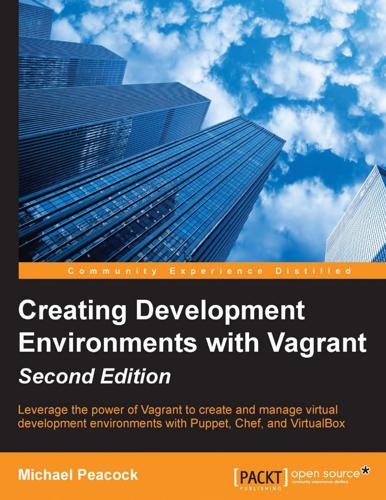
Creating Development Environments With Vagrant - Second Edition
by
Michael Peacock
Published 26 Feb 2015
The configuration that determines how the server needs to be set up can be stored within our Vagrant project and can be shared with teammates through a version control, ensuring everyone gets an up-to-date copy of the required development environment. Information about how a server should be configured, that is, its software, files, users, and groups, is written into files known as the Puppet manifests. These manifests are written using Puppet's own language, which is a Ruby domain-specific language. Puppet takes this information and compiles it into a catalog that is specific for the operating system it is being applied to. The catalog is then applied to the machine. For our purposes, we will use Puppet in standalone mode (this is also how Vagrant uses it). Standalone mode means that everything runs from one machine.
…
At its most basic level, a cookbook is a folder (named as the name of the cookbook) that contains at least a recipes folder, which contains at least a default recipe file, default.rb. Files are typically stored in a files folder within the cookbook folder and template files within the templates folder. Note While both Puppet and Chef use Ruby, Puppet is a domain-specific language, which makes it look and feel like its own language, whereas Chef is structured more like Ruby itself. Resources – what Chef can do Chef uses resources to define the actions and operations that can be performed against the system. Resources are mapped to a Chef code, which varies depending on the platform/operating system being used.
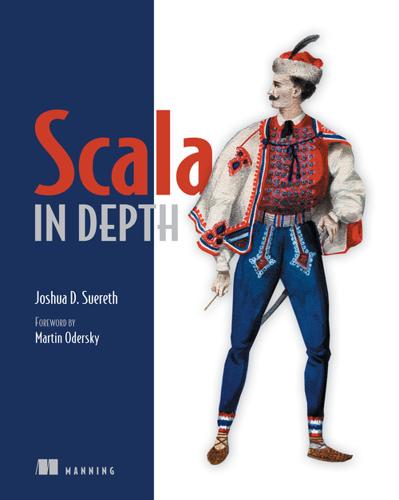
Scala in Depth
by
Tom Kleenex
and
Joshua Suereth
Published 2 Jan 2010
: syntax @BeanProperty annotation @Column annotation @cpsParam annotation @ManyToOne annotation @reflect.BeanInfo annotation @reflect.BeanProperty @serializable annotation @specialized annotation @switch annotation, 2nd @tailrec annotation, 2nd, 3rd * method ## method, 2nd #:: method, 2nd + method +: method, 2nd ++ method, 2nd, 3rd, 4th <:< == method, 2nd, 3rd, 4th A abstract class abstract interfaces between software modules reasons for AbstractAddress class AbstractMethodError AccessControlContext accessor, 2nd act method, 2nd, 3rd Actor class, 2nd, 3rd, 4th Actor.actorOf method ActorDispatcher class ActorRef type AdaptiveSearchNode add method addHandle method Address class ALIVE class annotation.target.getter AnnotationHelpers anonfun class, 2nd anonymous classes, serialization of anonymous functions, 2nd AnyRef, 2nd, 3rd, 4th, 5th, 6th AnyVal types App trait Application class applicative functors applicative style, 2nd Applicative.build method ApplicativeBuilder class apply method, 2nd, 3rd, 4th, 5th, 6th, 7th areEqual method ArrayBuffer, 2nd, 3rd ArrayList, 2nd ArraySortTrait avg method B B[A] parameter Bar class, 2nd, 3rd bar method bar.Foo.type Bar.type bar(x) method BeanInfo class benefits, of type classes binary compatibility BinaryFormat type BinaryTree bindings, 2nd BitSet blocks, of code boilerplate BoxesRunTime class boxing Branch class BufferedReader BufferedWriter build method bundleResult method by-name parameters Byte type C C parameter C.super C++ variables Callback type CanBuildFrom class canEqual method case statements, 2nd, 3rd Cat type, 2nd Category Theory and functional programming functors, 2nd monads, 2nd morphism cc target chaining implicits, 2nd changePassword method Child class children method, 2nd class arguments ClassCastExceptions ClassManifest, 2nd closeResource method code blocks, 2nd coding conventions and other languages code blocks Coll type CollectionConverter type collections and methods ArrayBuffer CanBuildFrom hierarchy of immutable collections list stream vector IndexedSeq Iterable iterator LinearSeq List Map mutable collections ArrayBuffer observable synchronization of Observable collections parallel collections, 2nd Seq Set Splitable iterator Stream Traversable TraversableOnce vector views colRank combineResults companion class companion object complexmath, 2nd ComplexNumber class composition inheritance member-composition using constructor arguments CompressedIntSet computeValue concurrency, and immutability conditional execution, using type system heterogeneous typed list IndexedView type Config class, 2nd, 3rd, 4th config file ConnectionDataStore constructor arguments, composition using content method context bounds, 2nd convertToScala count method covariance CreateArray createConnection method createDispatcher method createErrorMessage method createHandle createPreparedStatement method createSearchTree CREATOR class curCount parameter currentIndex method curried method currying, 2nd D dangling operators Data class DataAccess class DatabaseConnection DatabaseResultSetWalker dataId DataStore class DEAD class deadActor default concepts default parameters DefaultHandles delayed construction, of objects delayedInit method DelayedInit trait Dependencies object describeContents method Dog class domain-specific languages. See DSLs. doPrivileged method Double type doubleToReal doWork DriverManager.getConnection method, 2nd, 3rd, 4th DSLs (domain-specific languages) dynamic deoptimization dynamic topology, of actors E eager parsing, in REPL early member definitions EJB (Enterprise JavaBeans) else statements empty implementations, 2nd EmptyList class endofunctor Enterprise JavaBeans.
…
Experiment-driven development is about experimenting in the REPL with the type system to utilize types as effectively as possible in your API. Experiment-driven design is more about adding larger features or domains into your code, rather than new methods or bug fixes. Experiment-driven design can also help drastically when defining domain-specific languages (DSLs). A DSL is a pseudo programming language that deals with a particular domain. This language is specific to the domain at hand—for example, querying for data from a database. A DSL may be either internal, as seen in many Scala libraries, or external like SQL. In Scala, it is popular among library developers to create DSLs covering the same domain as the library.
…
When referring to an object’s type, you need to use the type member of the object. This syntax isn’t normally seen in Scala, because if you know an object’s type, you can just as easily access the object directly, rather than ask for it in a parameter. Using objects as parameters Using objects as parameters can greatly help when defining domain specific languages, as you can embed words as objects that become parameters. For example, we could define a simulation DSL as follows: object Now object simulate { def once(behavior : () => Unit) = new { def right(now : Now.type) : Unit = ... } } simulate once { () => someAction() } right Now 6.1.1.
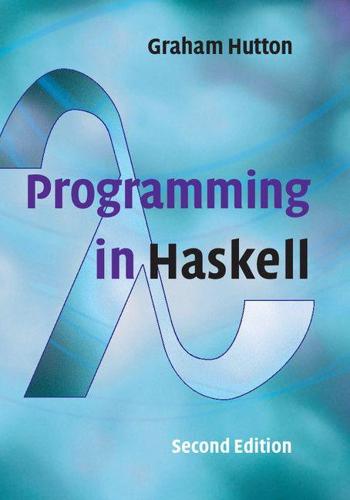
Programming in Haskell
by
Graham Hutton
Published 31 Aug 2016
Higher-order functions (chapter 7) Haskell is a higher-order functional language, which means that functions can freely take functions as arguments and produce functions as results. Using higher-order functions allows common programming patterns, such as composing two functions, to be defined as functions within the language itself. More generally, higher-order functions can be used to define domain-specific languages within Haskell itself, such as for list processing, interactive programming, and parsing. Effectful functions (chapters 10 and chapters 12) Functions in Haskell are pure functions that take all their inputs as arguments and produce all their outputs as results. However, many programs require some formof side effect that would appear to be at odds with purity, such as reading input from the keyboard, or writing output to the screen, while the program is running.
…
It is this latter interpretation that is the subject of this chapter. Using higher-order functions considerably increases the power of Haskell, by allowing common programming patterns to be encapsulated as functions within the language itself. More generally, higher-order functions can be used to define domain-specific languages within Haskell. For example, in this chapter we present a simple language for processing lists, and in part II of the book we will develop languages for a range of other domains, including interactive programming, effectful programming, and building parsers. 7.2Processing lists The standard prelude defines a number of useful higher-order functions for processing lists.
…
comprehensions list, 7, 47 set, 47, 56 string, 51 concat, 48, 206, 296 concatenation, see concat conjunction, see &&, and cons, see : const, 43, 287 continuation-passing style, 252 control characters, 24, 134 Control.Applicative, 179, 290 Control.Monad, 172, 183, 291 crush operators, 210 curry, 284 data, 93 Data.Char, 132, 140, 179, 282 Data.Foldable, 200, 205, 225, 294 Data.List, 35, 87, 140 Data.Monoid, 197, 292 defunctionalisation, 254 deriving, 100 digitToInt, 132, 282 disjunction, see ||, or distributivity, 156, 228, 243 contravariant, 235 div, 18, 35, 84, 281 division, see div, / do, 126, 166, 181 domain-specific languages, 7, 74 Double, 25, 283 Dr Seuss, 178 drop, 16, 64, 68, 286 dropWhile, 76, 286 effects, 7, 124, 162 elem, 202, 294 empty, 181, 291 Eq, 31, 49, 280 equality, see == equational reasoning, 8, 228, 257 error, 90, 190, 288 Euclid’s algorithm, 71 evaluation, 15, 22, 113, 212 call-by-name, 215, 216 call-by-value, 214, 216 innermost, 214 lazy, 7, 26, 40, 49, 51, 148, 150, 219 outermost, 214 top-level, 223 even, 38, 65, 283 examples abstract machine, 106, 261 base conversion, 83 binary string transmitter, 82 Caesar cipher, 52 calculator, 191 compiler, 241, 249 countdown problem, 111 expression parser, 187 fast reverse, 238 Fibonacci sequence, 64, 226 game of life, 133 game of nim, 129 hangman, 128 insertion sort, 63 Newton’s method, 227 prime numbers, 49, 222 quicksort, 10, 65 sieve of Eratosthenes, 222 tautology checker, 101 tic-tac-toe, 139 tree relabelling, 171 virtual machine, 256 voting algorithms, 86 exceptions, 160, 261 exponentiation, see ^ expressions, 3 arithmetic, 106, 111, 187, 241 conditional, see if impure, 125 lambda, see \ logical, 101 pure, 125 reducible, 213 False, 22, 24 filter, 75, 211, 285 filterM, 173 flip, 287 Float, 24, 54, 283 fmap, 154, 288 fold, 200, 294 Foldable, 200, 294 foldables, 7, 200 Maybe, 210 Tree, 202, 210 list, 201, 295 foldl, 68, 80, 200, 225, 294 foldl’, 225 foldl1, 203, 294 foldMap, 200, 294 foldr, 68, 77, 89, 200, 294 foldr1, 143, 203, 294 FP, 8 Fractional, 35, 281 fromIntegral, 54 fst, 41, 284 functions, 3, 16, 27, 287 combinator, 254 combinatorial, 114 composite, see .
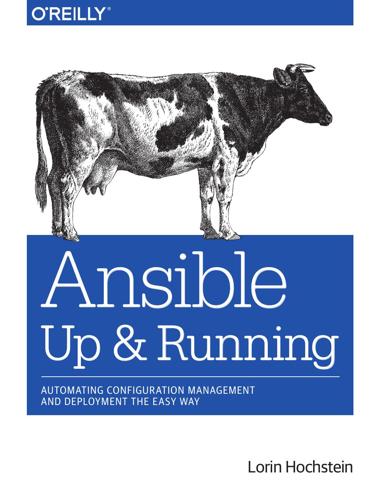
Ansible: Up and Running: Automating Configuration Management and Deployment the Easy Way
by
Lorin Hochstein
Published 8 Dec 2014
Contrast with procedural languages, such as Java and Python. Deployment The process of bringing software up onto a live system. DevOps IT buzzword that gained popularity in the mid-2010s. Dry run See Check mode. DSL Domain-specific language. In systems that use DSLs, the user interacts with the systems by writing text files in the domain-specific language and then runs those files through the system. DSLs are not as powerful as general-purpose programming language, but (if designed well) they are easier to read and write than general-purpose programming language. Ansible exposes a DSL that uses YAML syntax.
…
When we talk about configuration management, we are typically talking about writing some kind of state description for our servers, and then using a tool to enforce that the servers are, indeed, in that state: the right packages are installed, configuration files contain the expected values and have the expected permissions, the right services are running, and so on. Like other configuration management tools, Ansible exposes a domain-specific language (DSL) that you use to describe the state of your servers. These tools also can be used for doing deployment as well. When people talk about deployment, they are usually referring to the process of taking software that was written in-house, generating binaries or static assets (if necessary), copying the required files to the server(s), and then starting up the services.

Seven Databases in Seven Weeks: A Guide to Modern Databases and the NoSQL Movement
by
Eric Redmond
,
Jim Wilson
and
Jim R. Wilson
Published 7 May 2012
Neo4j via Gremlin There are several languages that interoperate with Neo4j: Java code, REST, Cypher, Ruby console, and others. The one we’ll use today is called Gremlin, which is a graph traversal language written in the Groovy programming language. You needn’t actually know Groovy to use Gremlin, however, so think of it as just another declarative domain-specific language, like SQL. Like other consoles we’ve explored, Gremlin provides access to the underlying language infrastructure on which it’s based. This means you can use Groovy constructs and Java libraries in Gremlin. We found it a powerful and more natural way of interacting with graphs than Neo4j’s native Java code.
…
g.V.both('friends').dedup.transform{ [ it.name, it.out('likes').name.toList() ] } ==> [Alice, [Prancing Wolf Ice Wine 2007]] ==> [Patty, []] ==> [Tom, [Prancing Wolf Ice Wine 2007, Prancing Wolf Kabinett 2002]] Gremlin definitely takes a little getting used to, especially if you haven’t done much Groovy programming before. Once you get the hang of it, you’ll find it’s an expressive and powerful way to perform queries against Neo4j. Domain-Specific Steps Graph traversal is nice, but businesses and organizations tend to converse in domain-specific languages. For example, we wouldn’t normally ask “What is the vertex with the incoming edge of grape_type sharing the outgoing edge of this wine’s vertex?” but rather “What varietal is this wine?” Gremlin is already a language specific to the domain of querying graph databases, but what about making the language even more specific?
…
g.V.filter{it.name=='Patty'}.friendsuggest.name ==> Prancing Wolf Ice Wine 2007 ==> Prancing Wolf Kabinett 2002 Since varietal and friendsuggest are just normal Pipe-building steps, you can chain them together to make more interesting queries. The following finds the varietals that Patty’s friends like best: g.V.filter{it.name=='Patty'}.friendsuggest.varietal.name ==> riesling Using Groovy metaprogramming to create new steps is a powerful force for crafting domain-specific languages. But like Gremlin itself, the practice can take some getting used to. Update, Delete, Done You’ve inserted and stepped through a graph, but what about updating and deleting data? It’s easy enough, once you find the vertex or edge you want to alter. Let’s add a weight to how much Alice likes the Prancing Wolf Ice Wine 2007.
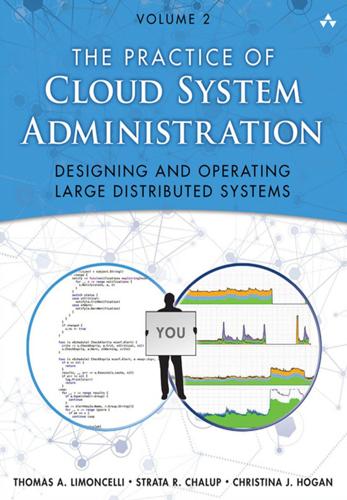
The Practice of Cloud System Administration: DevOps and SRE Practices for Web Services, Volume 2
by
Thomas A. Limoncelli
,
Strata R. Chalup
and
Christina J. Hogan
Published 27 Aug 2014
See Design documents design for operations, 43–44 service launches, 158 stakeholder interactions, 154 Doerr, John, 389 Domains, failure, 126–128 Domain-specific languages (DSLs), 244 DoS (denial-of-service) attacks, 140 Dot-bomb era (2000–2003), 459–465 Downsampling, monitoring, 339 Downtime containers, 61 pre-web era, 453 in upgrading live services, 225 Drain tool, 254 Draining process, 112 Drains, queue, 35–36 “DRAM Errors in the Wild: A Large-Scale Field Study” article, 134 DSLs (domain-specific languages), 244 Dual load balancers, 76 Durability in ACID term, 24 DVCSs (distributed version control systems), 265 Dynamic content with web servers, 70 Dynamic resource allocation, 138 Dynamic roll backs, 232 Dynamo system, 24 “Each Necessary, But Only Jointly Sufficient” article, 302 ECC (error-correcting code) memory, 131–132 Edge cases, 153 Edwards, Damon DevOps benefits, 172–173 DevOps Cafe podcast, 180, 188, 200 Effectiveness of caches, 105 80/20 rule for operational features, 47 Elements of Programming Style, 11 Eliminating tasks, 155 EMA (exponential moving average), 367, 379 Email alerts, 292–293 archives, 277 Embedded knowledge in DevOps, 177–178, 187 Emergency hotfixes, 240 Emergency issues, 160 Emergency Response (ER), 403, 426–428 Emergency tasks, 156 Employee human resources data updates example, 89–90 Empowering users, automation for, 253 Emptying queues, 35 Encryption in four-tier web service, 79 End-of-shift oncall responsibilities, 299 End-to-end process in service delivery, 200 Engagement defined, 366 measuring, 374–375 Enterprise Integration Practices: Designing, Building, and Deploying Messaging Solutions, 87 Environment-related files, 220 Ephemeral computing, 67 Ephemeral machines, 58 Erlang language, 236 Error Budgets, 152 case study, 396–399 DevOps, 184 Error-correcting code (ECC) memory, 131–132 Escalation alert messages, 345, 354–357 automated, 128–129 monitoring, 333 third-party, 298 Etsy blog, 256 EU Data Protection Directive platform selection factor, 63 requirements, 43 Eventual consistency, 21 Exception collection, 43–44 Exceptional situations.
…
However, if the people running the automation have no insight into how it works, it is much harder for them to figure out how and why it failed, and therefore handle the exception appropriately, than it would be if they were more involved in the process. This situation is common where the person handling the exception is not the person who wrote the automation. And at some point, that is the situation for all automation. * * * Terms to Know Domain-Specific Language (DSL): A language that was purpose-built for a particular use, such as system administration, mathematics, or text manipulation. Toil: Exhausting physical labor. * * * 12.1 Approaches to Automation There are three primary approaches to automation design. The first, and most common, approach is to automate using the “left-over” principle, where the automation handles as much as possible, with people being expected to handle whatever is left over.
…
Automation written in a compiled language typically scales better than the same automation written in a scripting language. Compiled languages often used by system administrators include C, C++, and Go. As described earlier, compiled languages are usually statically typed and catch more errors at compile time. 12.6.4 Configuration Management Languages Configuration management (CM) languages are domain-specific languages (DSLs) created specifically for system administration tasks. CM systems are created for maintaining the configuration of machines, from low-level settings such as the network configuration to high-level settings such as which services should run and their configuration files. Configuration languages are declarative.
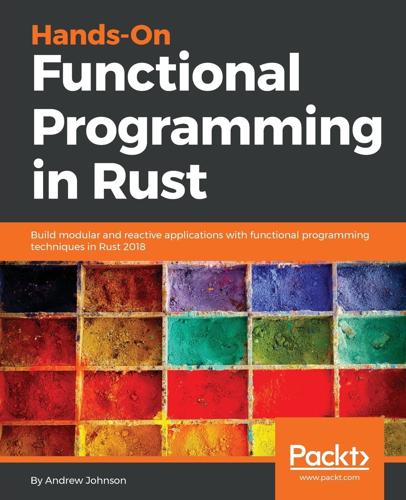
Hands-On Functional Programming in RUST
by
Andrew Johnson
Published 29 May 2018
("mode 1: {}", $e)); (2 $e:expr) => (println!("mode 2: {}", $e)); } fn main() { my_macro_branch!(1 "abc"); my_macro_branch!(2 "def"); } The name recursive macros comes from recursion in the macros, so of course we can call into the macro that we are defining. Recursive macros could be a quick way to define a domain-specific language. Consider the following code snippet, in intro_metaprogramming.rs: enum DSLTerm { TVar { symbol: String }, TAbs { param: String, body: Box<DSLTerm> }, TApp { f: Box<DSLTerm>, x: Box<DSLTerm> } } macro_rules! dsl { ( ( $($e:tt)* ) ) => (dsl!( $($e)* )); ( $e:ident ) => (DSLTerm::TVar { symbol: stringify!
…
Let's look at one example—deferred computation. When we describe a relation of different values and expressions, we normally just write this code into the program directly. However, what would we do if we wanted to separate the code step from the execution step? To accomplish this, we start building something called a domain-specific language. For a concrete example, consider that you are building a JIT (dynamically compiled) interpreter for JavaScript. The Mozilla project has several projects dedicated to JS engines built in Rust (https://blog.mozilla.org/javascript/2017/10/20/holyjit-a-new-hope/). This is a real application for which Rust is well-suited.
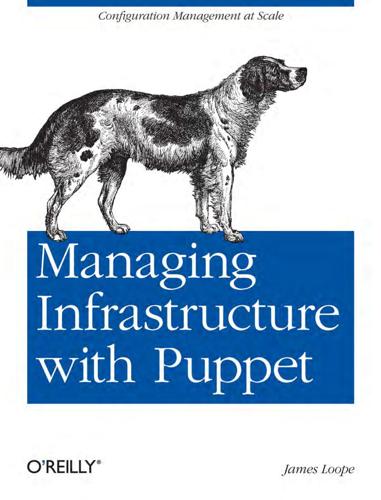
Managing Infrastructure With Puppet
by
James Loope
Published 15 Jun 2011
It then decides on a set of changes that need to occur to bring the catalog state into agreement with your descriptions. The execution is idempotent, meaning that only the changes needed to bring the state into agreement with the description will be made. The entire catalog can be run over and over again without causing deviation from the described state. These resource descriptions are made in a Domain Specific Language implemented in Ruby. This means that the syntax is often similar to Ruby, but you cannot simply write Ruby code in a Puppet manifest and have it executed. In fact, the language is declarative, rather than imperative like Ruby. With Puppet, you say how you want things to look, as opposed to describing what should be done to make them look that way.
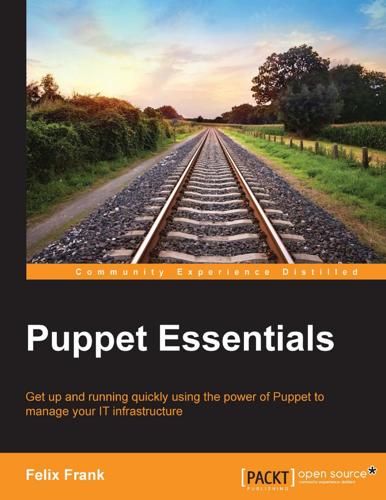
Puppet Essentials
by
Felix Frank
Published 20 Nov 2014
A platform-independent way to install Puppet is to get the puppet Ruby gem. This is fine for testing and managing single systems, but is not recommended for production use. After installing Puppet, you can use it to do something for you right away. Puppet is driven by manifests, the equivalent of scripts or programs, written in Puppet's domain-specific language (DSL). Let's start with the obligatory Hello world manifest: # hello_world.pp notify { 'Hello, world!': } Downloading the example code You can download the example code files for all Packt books you have purchased from your account at http://www.packtpub.com. If you purchased this book elsewhere, you can visit http://www.packtpub. com/support and register to have the files e-mailed directly to you.
…
[ 206 ] Index A agents initializing, in cloud 185 resources, exporting to 141 anchor pattern about 90 URL 91 antipatterns avoiding 154, 155 apt-get command 8 arrays 15 autorequire feature 125 autoscaling feature about 198 certificates, managing 198-200 round trip times, limiting 200-202 autosigning URL 200 autosigning script 198 B backends selecting 165 URL, for online documentation 165 beaker about 105 URL 105 before metaparameter 19, 21, 24 C classes about 66 component classes, writing 73, 74 comprehensive classes, writing 71, 72 creating, with parameters 92 declaring 66, 67 defining 66, 67 definitions, nesting 82 differentiating, with defined types 69, 70 include keyword, preferring 93 parameterized classes, consequences 92, 93 class inheritance 149 cloud agents, initializing in 185 manifests, building for 187 cloud-provisioner module using 186 collectors used, for realizing resources 140, 141 component classes writing 73, 74 composite design 71 comprehensive classes writing 71, 72 configuration data structuring, in hierarchy 161, 162 containers events, passing between classes and defined types 83-85 limitations 86-89 limitations, mitigating 90 ordering 86 relationships, establishing among 83 containers, limitations anchor pattern 90 contain function 91 control structures adding, in manifest 13, 14 creates parameter 28 cron resource type 29 custom attribute 191 custom facts about 53 Facter, extending with 53-55 custom functions about 96 used, for refining custom module interface 126-128 custom module building 105 enhancing, through facts 125 implementing 106-109 interface, refining through custom functions 126-128 making, portable across platforms 128, 129 naming 106 using 106 utilities, creating for derived manifests 110 custom types 117 D data resources, converting to 172-174 data, defining in manifest consequences 159, 160 defined types about 66 creating 67-69 differentiating, with classes 69, 70 used, for exploiting array values 78-81 using 67-69 using, as macros 77, 78 using, as resource multiplexers 76 using, as resource wrappers 74, 75 dependency 20 documentation, modules 98, 99 domain-specific language (DSL) 8 dynamic configuration files templating 134 dynamic scoping 154 E enabled property 10 ensure property 10 environment.conf file 100 environment locations configuring 100, 101 environments maintaining 99, 100 modules, installing 101, 102 modules, obtaining 101, 102 used, for testing modules 104, 105 evaluation order circular dependencies, avoiding 21, 22 controlling 16 dependencies, declaring 17-20 error propagation 20 events about 23 passing, between classes and defined types 83-85 exec resource type 27 external facts using 55, 56 External Node Classifiers (ENCs) 174 F Faces 186 Facter example 62 extending, with custom facts 53-55 goals 57 systems, summarizing with 50, 51 facts URL, for documentation 125 used, for enhancing custom module 125 fact values accessing 52, 53 using 52, 53 flexibility, providing to classes about 148 class inheritance 149 inheriting class, naming 151 parameters, making safer through inheritance 151 [ 208 ] Forge modules' characteristics, identifying 130 URL 130 used, for searching modules 130 fqdn_rand function 41 fully qualified domain name (FQDN) 52 G group resource type 26 H hashes 14 Hiera arrays, handling 170-172 class parameter values, binding 167-169 configuring 163 data, storing 164 hashes, handling 170-172 lookups, defining 179 practical example 177, 178 using, in different contexts 175, 176 values, retrieving 165 values, using in manifest 165 working with simple values 166, 167 hiera_array function 170 hiera_hash function 171 hierarchy configuration data, structuring in 161, 162 I immutability, variables 14 include keyword preferring 93 Infrastructure as a Service (IaaS) 184 Infrastructure as Code paradigm 105 inheriting class naming 151 installation, modules 101, 102 instances method 123 M manifest about 182 control structures, adding in 13, 14 dry-testing 12 structure 9 manifest, and Hiera designs selecting between 175 manifest, building for cloud about 187 arbitrary configuration files, composing 194-196 certificate names, selecting 190, 191 distributed catalog, creating 191-194 functionality, mapping to nodes 187-189 instance deletions, handling 197, 198 metaparameters 18 model substantiating, with providers 59, 60 modules about 96 agent, enhancing through plugins 116, 117 best practices 102 content structure 97, 98 documentation 98, 99 generalization, avoiding 103 identifying, in Forge 130 important parts 96 installing 101, 102 manifest files, gathering 102, 103 obtaining 101, 102 searching, in Forge 130 testing 104 testing, with environments 104, 105 URL, for publishing 98 monolithic implementation 71 mount resource type 29, 30 N Nginx about 45 Phusion Passenger, using with 45, 46 nodes file 100 Notice keyword 20 [ 209 ] O operatingsystemrelease fact 53 output interpreting, of puppet apply command 11, 12 P Proudly sourced and uploaded by [StormRG] Kickass Torrents | TPB | ExtraTorrent | h33t parameterized classes consequences 92, 93 parameters versus properties 10 parser functions 96 performance bottlenecks avoiding, from templates 136 performance considerations about 42 basic tuning 46 Passenger, using with Nginx 45 switching, to Phusion Passenger 43, 44 Phusion Passenger switching to 43, 44 URL, for installation instructions 45 using, with Nginx 45, 46 Platform as a Service (PaaS) 184 plugins about 116 custom types, creating 118 custom types, naming 118 management commands, declaring 121 provider, adding 121 provider, allowing to prefetch existing resources 123, 124 provider functionality, implementing 122, 123 resource names, using 120 resource type interface, creating 119 sensible parameter hooks, designing 120 types, making robust 125 used, for enhancing modules agent 116, 117 plugins, types custom facts 116 parser functions 116 providers 116 types 116 processorcount fact 52 properties about 10 versus parameters 10 providerless resource types 61 provider parameter 10 providers model, substantiating with 59, 60 summarizing 61 Puppet about 182 installing 8 modules 96 typical scopes 182 URL 182 Puppet agent certificate, renewing 40 life cycle 38, 39 running, from cron 41 setting up 35-37 puppet apply command about 9, 31 output, interpreting of 11, 12 PuppetBoard 186 Puppet Dashboard 186 Puppet Explorer 186 Puppet Labs URL 8 URL, for advanced approaches 43 URL, for core resource types 61 URL, for style guide 52 URL, for system installation information 32 URL, for Troubleshooting section 47 puppetlabs-strings module URL 99 Puppet master about 31 configuration settings, inspecting 35 master machine, setting up 32 master manifest, creating 33, 34 tasks 32 puppetmaster system service 33 puppet module install command 101 Puppet support, for SSL CSR attributes URL 199 [ 210 ] Puppet, taking to cloud about 184 agents, initializing 185 cloud-provisioner module, using 186 Puppet toolchain 46 rspec-puppet module about 105 URL 105 R separate data storage need for 158 singletons 135 site manifest 33 SSL troubleshooting 47, 48 stdlib module 101 strings 15 subscribe metaparameter 23 successful provisioning, ensuring about 202 manifests, testing 204, 205 necessary relationships, adding 203 systems summarizing, with Facter 50, 51 S realize function 138, 139 redundancy saving, resource defaults used 152, 153 relationships, containers performance implications 89 require metaparameter 19 resource chaining 17 resource defaults used, for saving redundancy 152, 153 resource interaction implementing 22-24 resource parameters overriding 147, 148 resources about 10 converting, to data 172-174 exporting 142 exporting, to agents 141 importing 142 realizing, collectors used 140, 141 resources, exporting about 141 central firewall, maintaining 146 custom configuration, automating 144 hosts files, managing 144 master configuration, for storing exported resources 142 Nagios configuration, simplifying 145, 146 SSH host keys, exporting 143 resource type life cycle, agent side 58, 59 resource types cron 29 examining 25, 26 exec 27, 28 group 26 mount 29, 30 user 26 revocation 39 Roles and Profiles pattern 183 T templates performance bottlenecks, avoiding from 136 using 135, 136 template syntax learning 134, 135 transaction 57 Trusted Facts 189 types about 117 summarizing 61 type system 57 typical scopes, Puppet about 182 profiles 183, 184 roles 183, 184 U user resource type 26 utilities, custom module complexity, dealing 115, 116 configuration items, adding 111, 112 creating, for derived manifests 110 [ 211 ] customization, allowing 113 unwanted configuration items, removing 114, 115 W Warning keyword 20 V Y Vagrant 182 variables using 14 variable types about 14 arrays 15 hashes 14 strings 15 virtual resources creating 137, 138 yum command 8 [ 212 ] Thank you for buying Puppet Essentials About Packt Publishing Packt, pronounced 'packed', published its first book "Mastering phpMyAdmin for Effective MySQL Management" in April 2004 and subsequently continued to specialize in publishing highly focused books on specific technologies and solutions.

The Docker Book
by
James Turnbull
Published 13 Jul 2014
$ sudo docker run -t -i jamtur01/apache2:webserver /bin/bash You'll note that we've specified our image with the full tag: jamtur01/apache2:webserver. Building images with a Dockerfile We don't recommend the docker commit approach. Instead, we recommend that you build images using a definition file called a Dockerfile and the docker build command. The Dockerfile uses a basic DSL (Domain Specific Language) with instructions for building Docker images. We recommend the Dockerfile approach over docker commit because it provides a more repeatable, transparent, and idempotent mechanism for creating images. Once we have a Dockerfile we then use the docker build command to build a new image from the instructions in the Dockerfile.
…
Using Docker to build and test a web application Now let's look at a more complex example of testing a larger web application. We're going to test a Sinatra-based web application instead of a static website and then develop that application whilst testing in Docker. Sinatra is a Ruby-based web application framework. It contains a web application library and a simple Domain Specific Language or DSL for creating web applications. Unlike more complex web application frameworks, like Ruby on Rails, Sinatra does not follow the model–view–controller pattern but rather allows you to create quick and simple web applications. As such it's perfect for creating a small sample application to test.

Reactive Messaging Patterns With the Actor Model: Applications and Integration in Scala and Akka
by
Vaughn Vernon
Published 16 Aug 2015
See also Implementing Domain-Driven Design (IDDD) Bounded Context, 334 Core Domain, 10 Domain Events, 3, 204, 320 making business concepts explicit, 22–23 messaging patterns, xvi modeling actors according to specific roles and, 293 modeling actors using, 3–5, 13-14, 22-23 supporting SIS, 10 domain-Model actor, top-level supervisors in actor system, 47–48 Domain-specific language (DSL), 292 Dotsero toolkit actor system, 417–420 actors using C# and .NET, 420–425 implementing, 425–427 overview of, 417 DSL (domain-specific language), 292 Durable Subscribers defined, 338 example, 380–382 idempotent actors and, 383 Message Journal/Store supporting, 393 overview of, 379 Transactional Client/Actor and, 353 Dynamic Routers compared with Recipient Lists, 245 example of rule use, 238–245 overview of, 237–238 Selective Consumer and, 377 E EAI (enterprise application integration), 309–310 EDA (event-driven architectures), nondeterminism in, 21 EIP.
…
Figure 7.10 A Process Manager handles a multistep process where each step may not be known at design time and that may not be sequential. The parallel processing steps of each bank are shown as the same sequence number, 2. I think there are two primary ways to implement a Process Manager. One way is to create a domain-specific language (DSL) and interpreter. The DSL is itself the high-level programming language that allows you to describe the rules of various business processes. One such language is Business Process Execution Language (BPEL), and there are several tools available that read, interpret, and manage business processes that are defined with it.
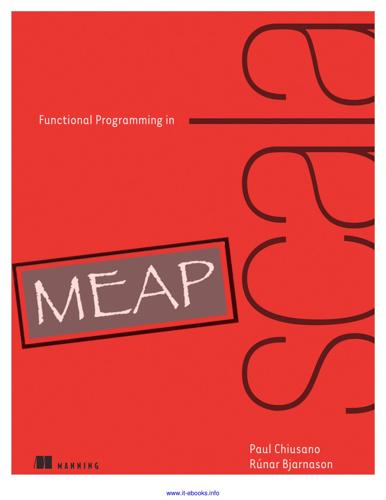
Functional Programming in Scala
by
Paul Chiusano
and
Rúnar Bjarnason
Published 13 Sep 2014
To make them convenient to talk about, let's make a type alias for the RNG state action data type: type Rand[+A] = RNG => (A, RNG) We can now turn methods such as RNG's nextInt into values of this type: val int: Rand[Int] = _.nextInt We want to start writing combinators that let us avoid explicitly passing along the RNG state. This will become a kind of domain-specific language that does all of this passing for us. For example, a simple RNG-transition is the unit action, which passes the RNG state through without using it, always returning a constant value rather than a random value. def unit[A](a: A): Rand[A] = rng => (a, rng) There is also map, for transforming the output of a state action without modifying the state itself.
…
We will be making an important distinction here in this chapter between effects and side effects. It illustrates a key technique for dealing with external effects—using pure functions to compute a description of an imperative computation, which is then executed by a separate interpreter. Essentially, we are crafting an embedded domain specific language (EDSL) for imperative programming. This is a powerful technique we'll be using throughout part 4; part of our goal is to equip you with the skills needed to begin crafting your own descriptions for interesting effectful programs you are faced with. 13.2 Factoring effects We are going to work our way up to the IO monad by first considering a very simple example, one we discussed in chapter 1 of this book: case class Player(name: String, score: Int) def printWinner(p: Player): Unit = println(p.name + " is the winner!")

Beautiful Architecture: Leading Thinkers Reveal the Hidden Beauty in Software Design
by
Diomidis Spinellis
and
Georgios Gousios
Published 30 Dec 2008
design-only tags, Design-only tags FBML, Design-only tags development cycles, Problems outside the code managing, Problems outside the code development teams, Lack of cohesion, Problems outside the code, Working with the design Conway’s Law, Working with the design relationships in Messy Metropolis project, Lack of cohesion turnover, Problems outside the code device channels, The Changing Shape of Xen Xen, The Changing Shape of Xen device I/O, Device I/O Guardian operating system, Device I/O Dijkstra, Edsger, Brick and Mortar Architecture distributed systems, Context online gaming, Context distrust, Xenoservers and trust, Xenoservers domain-specific language (DSL), The Functional Examples driver domains, The Changing Shape of Xen Xen, The Changing Shape of Xen drivers, Paravirtualization, The Changing Shape of Xen, The Changing Shape of Xen device channels in Xen, The Changing Shape of Xen Linux and Xen, The Changing Shape of Xen virtual drivers, Paravirtualization DSL (domain-specific language), The Functional Examples duck typing, Types Are Defined Implicitly polymorphism, Types Are Defined Implicitly duplication, Code problems, Consistency in Messy Metropolis project, Code problems reducing in Design Town project, Consistency Dynabus, Acknowledgments (see IPB) dynamic binding, Polymorphism, Polymorphic Containers, and Dynamic Binding, Polymorphism, Polymorphic Containers, and Dynamic Binding, Extendibility: Adding Types extendibility, Extendibility: Adding Types polymorphism, Polymorphism, Polymorphic Containers, and Dynamic Binding dynamic class loading, Dynamic Class Loading Inhibits Performance performance in runtime environments, Dynamic Class Loading Inhibits Performance dynamic resource allocation, Process gets resources from processes, Process gets resources from E Eclipse, Eclipse EDS (Evolution Data Server), The Evolution of Akonadi Eiffel, Overview object technology, Overview EiffelVision library, Extendibility Criteria Emacs Lisp, The Controller: Emacs Lisp emulation, Changing Hardware, Changing Xen, Introduction versus virtualization, Changing Hardware, Changing Xen, Introduction end-user application architectures, GNU Emacs: Creeping Featurism Is a Strength, Firefox, Introduction, A Crazy Idea GNU Emacs, GNU Emacs: Creeping Featurism Is a Strength, Firefox KDE, Introduction, A Crazy Idea enterprise application architecture, Introduction, Simplifying the Programmer’s Job, Making Memories, References, Resource-Oriented Architectures: Being “In the Web”, Conclusion, Introduction, Summation Facebook Platform, Introduction, Summation Lifetouch, Making Memories, References resource-oriented architectures, Resource-Oriented Architectures: Being “In the Web”, Conclusion scaling, Introduction, Simplifying the Programmer’s Job entropy resistance, Principles, Properties, and Structures environments, Acknowledgments (see runtime environments) errors, The Perils of Protected Mode versus expectations, The Perils of Protected Mode evaluation, Acknowledgments, Good Architectures (see lazy evaluation) of architectures, Good Architectures event channels, The Changing Shape of Xen Xen, The Changing Shape of Xen Evolution Data Server (EDS), The Evolution of Akonadi examples, The Messy Metropolis, A Postcard from the Metropolis, Design Town, Where Is It Now?
…
For example, “Take” is a combinator that assumes two arguments, a pudding part (“Cream” on the left, “Oranges” on the right) and a quantity (“1 pint” and “6”); the result of the application, represented by the tree node, is a pudding part or a pudding made of the given quantity of the given part. It is also possible to write out such a structure textually, using a mini-“domain-specific language” (DSL) “for describing puddings” (boldface is added for operators): "salad = on_top_of topping main_part" -- Changed from "OnTopOf" for consistency "topping = whipped (take pint cream) main_part = mixture apple_part orange_part apple_part = chopped (take 3 apples) orange_part = optional (take 6 oranges)" This uses an anonymous but typical—the proper term might be “vanilla”—variant of functional programming notation, where function application is simply written as function args (for example, plus a b for the application of plus to a and b) and parentheses serve only for grouping.
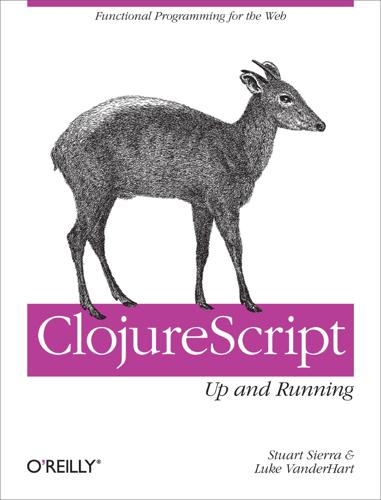
ClojureScript: Up and Running
by
Stuart Sierra
and
Luke Vanderhart
Published 24 Oct 2012
The ClojureScript compiler uses macros internally to produce more efficient code, but you are unlikely to encounter this situation in everyday programming. Summary Macros are an extremely powerful language tool, so powerful that they are rarely needed in everyday programming. However, for advanced tasks, such as defining new control structures or embedding domain-specific languages, they can be invaluable. This chapter has barely scratched the surface of what macros can do. For more examples, refer to books about Clojure. For even deeper exploration of macros, look to books on Common Lisp, such as Paul Graham’s classic On Lisp, available free online. Note that most other Lisps use the comma character instead of tilde for unquote

Solr 1.4 Enterprise Search Server
by
David Smiley
and
Eric Pugh
Published 15 Nov 2009
In one corner you have solr-ruby, which is the client library officially supported by the Apache Solr project. solr-ruby is fairly widely used, including providing the API to Solr used by the acts_as_solr Rails plugin we looked at previously. The new kid on the block is rsolr, which is a re-imagining of what a proper DSL (Domain Specific Language) would look like for interacting with Solr. rsolr is used by Blacklight OPAC as its interface to Solr. Both of these solutions are solid. However, rsolr is currently gaining more attention, has better documentation, and nice features such as a direct Embedded Solr connection through JRuby. rsolr also has support for using either curb (Ruby bindings to curl, a very fast HTTP library) or the standard Net::HTTP library for the HTTP transport layer.
…
See Dismax Solr request handler dismax query handler 131 dismax request handler 128 Dismax Solr request handler about 128 automatic phrase boosting 132, 133 boost functions, boosting 137, 138 boost queries, boosting 134-137 debugQuery option used 129 default search 140, 141 DisjunctionMaxQuery 130 features, over standard handler 129 limited query syntax 131 min-should-match 138 mm query parameter 138 phrase slop, configuring 134 distanceMeasure, spellchecker option 174 distributed search 32 div(x,y), mathematical primitives 121 doc element 93 docText field data 233 document deleting 70 documentCache 281 Domain Specific Language. See DSL double element 92 DoubleMetaphone, phonetic encoding algorithms 58 DoubleMetaphoneFilterFactory analysis filter, options inject 59 maxCodeLength 59 Drupal, options Apache Solr Search integration module 251 Solr, hosted by Acquia 252 DSL 269 dynamic fields * fallback 46 about 45 E echoHandler, diagnostic parameter 98 echoParams 152 echoParams, diagnostic parameter 98 EdgeNGram analyzer 61 EdgeNGramFilterFactory 61 EdgeNGramTokenizerFactory 61 Elasticfox 276 Embedded-Solr 65 embedded Solr legacy Lucene, upgrading from 237 using for rich clients 237 using in in-process streaming 236, 237 EmbeddedSolrServer class 224 encoder attribute 59 EnglishPorterFilter Factory, stemming 54 Entity tags 279 ETag 279 ETL 78 eval() function 238 existence (and non-existence) queries 107 explicit mapping 56 Extract Transform and Load.
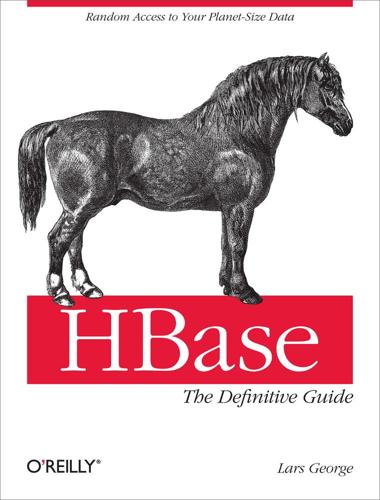
HBase: The Definitive Guide
by
Lars George
Published 29 Aug 2011
Transactions make it possible to update multiple tables in an atomic fashion so that either all modifications are visible or none are visible. The RDBMS gives you the so-called ACID[14] properties, which means your data is strongly consistent (we will address this in greater detail in Consistency Models). Referential integrity takes care of enforcing relationships between various table schemas, and you get a domain-specific language, namely SQL, that lets you form complex queries over everything. Finally, you do not have to deal with how data is actually stored, but only with higher-level concepts such as table schemas, which define a fixed layout your application code can reference. This usually works very well and will serve its purpose for quite some time.
…
The code has access to the server local data and can be used to implement lightweight batch jobs, or use expressions to analyze or summarize data based on a variety of operators. Note Coprocessors were added to HBase in version 0.91.0. Finally, the system is integrated with the MapReduce framework by supplying wrappers that convert tables into input source and output targets for MapReduce jobs. Unlike in the RDBMS landscape, there is no domain-specific language, such as SQL, to query data. Access is not done declaratively, but purely imperatively through the client-side API. For HBase, this is mostly Java code, but there are many other choices to access the data from other programming languages. Implementation Bigtable [...] allows clients to reason about the locality properties of the data represented in the underlying storage.
…
Using Cascading to insert data into HBase // read data from the default filesystem // emits two fields: "offset" and "line" Tap source = new Hfs(new TextLine(), inputFileLhs); // store data in an HBase cluster, accepts fields "num", "lower", and "upper" // will automatically scope incoming fields to their proper familyname, // "left" or "right" Fields keyFields = new Fields("num"); String[] familyNames = {"left", "right"}; Fields[] valueFields = new Fields[] {new Fields("lower"), new Fields("upper") }; Tap hBaseTap = new HBaseTap("multitable", new HBaseScheme(keyFields, familyNames, valueFields), SinkMode.REPLACE); // a simple pipe assembly to parse the input into fields // a real app would likely chain multiple Pipes together for more complex // processing Pipe parsePipe = new Each("insert", new Fields("line"), new RegexSplitter(new Fields("num", "lower", "upper"), " ")); // "plan" a cluster executable Flow // this connects the source Tap and hBaseTap (the sink Tap) to the parsePipe Flow parseFlow = new FlowConnector(properties).connect(source, hBaseTap, parsePipe); // start the flow, and block until complete parseFlow.complete(); // open an iterator on the HBase table we stuffed data into TupleEntryIterator iterator = parseFlow.openSink(); while(iterator.hasNext()) { // print out each tuple from HBase System.out.println( "iterator.next() = " + iterator.next() ); } iterator.close(); Cascading to Hive and Pig offers a Java API, as opposed to the domain-specific languages (DSLs) provided by the others. There are add-on projects that provide DSLs on top of Cascading. * * * [76] http://hive.apache.org/ [77] See the Hive wiki for more details on storage handlers. [78] The Hive wiki has a full explanation of the HBase integration into Hive. [79] http://pig.apache.org/ [80] Internally it uses the RowFilter class; see RowFilter
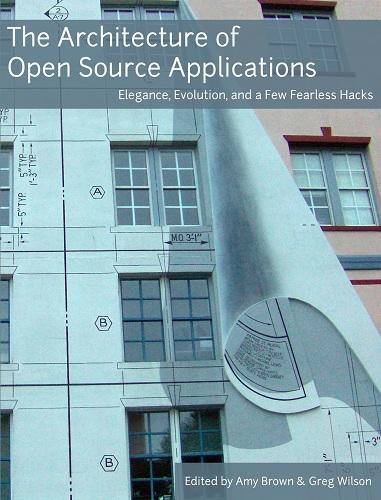
The Architecture of Open Source Applications
by
Amy Brown
and
Greg Wilson
Published 24 May 2011
In fact, this seems to be one of the reasons why so many basically identical CI systems exist: each language and community implements their own configuration system, tailored to their own build and test systems, and then layers on the same set of features above that system. Therefore, building a domain-specific language (DSL) capable of representing the options used by the few dozen commonly used build and test tool chains would go a long way toward simplifying the CI landscape. Common formats for build and test reporting: There is little agreement on exactly what information, in what format, a build and test system needs to provide.
…
This brings up another challenge: each shared component needs to be able to reason about target specific properties in a generic way. For example, a shared register allocator needs to know the register file of each target and the constraints that exist between instructions and their register operands. LLVM's solution to this is for each target to provide a target description in a declarative domain-specific language (a set of .td files) processed by the tblgen tool. The (simplified) build process for the x86 target is shown in Figure 11.5. Figure 11.5: Simplified x86 Target Definition The different subsystems supported by the .td files allow target authors to build up the different pieces of their target.
…
The m4 format was declarative: although it was possible to drop into the low-level raw language, in practice these details were hidden from the user. It isn't clear that this decision was correct or incorrect. I felt at the time (and still feel) that with complex systems it can be useful to implement what amounts to a Domain Specific Language (DSL) for building certain portions of that system. However, exposing that DSL to end users as a configuration methodology essentially converts all attempts to configure a system into a programming problem. Great power results from this, but at a non-trivial cost. 17.5. Other Considerations Several other architectural and development points deserve to be mentioned. 17.5.1.
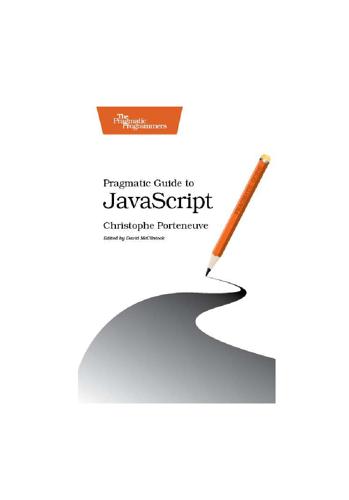
Pragmatic Guide to JavaScript
by
Christophe Porteneuve
Published 15 Nov 2010
A Practical Guide to Successful Software Projects 2005 9780974514048 224 9781934356593 SQL Antipatterns: Avoiding the Pitfalls of Database Programming 2010 Test-Drive ASP.NET MVC 2010 9781934356531 296 The Agile Samurai: How Agile Masters Deliver Great Software 2010 9781934356586 280 Stripes ...and Java Web Development Is Fun Again TextMate: Power Editing for the Mac 2008 2007 9781934356555 300 9781934356210 9780978739232 352 375 208 The Definitive ANTLR Reference: Building Domain-Specific Languages 2007 9780978739256 384 The Passionate Programmer: Creating a Remarkable Career in Software Development 2009 9781934356340 200 ThoughtWorks Anthology Ubuntu Kung Fu: Tips, Tricks, Hints, and Hacks 2008 9781934356142 240 Web Design for Developers: A Programmer’s Guide to Design Tools and Techniques 2008 2009 9781934356135 300 Download from Wow!
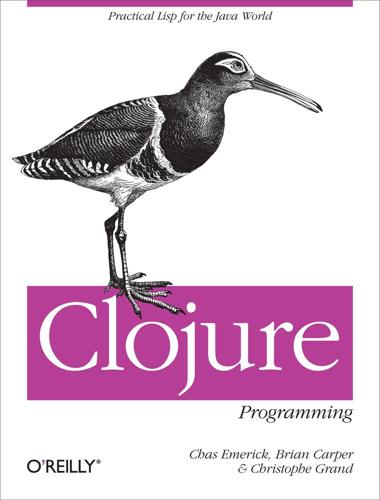
Clojure Programming
by
Chas Emerick
,
Brian Carper
and
Christophe Grand
Published 15 Aug 2011
In both cases, the answer is that Clojure did not import its syntactic foundations from other Lisp implementations on a whim; their adoption carries powerful benefits that are worth a minor shift in perspective: Prefixed operations used uniformly simplify the language’s syntax significantly and eliminate potential ambiguity from nontrivial expressions. The use of parentheses (as a textual representation of lists) is an outgrowth of Clojure being a homoiconic language. We’ll see what this means in Homoiconicity, but the ramifications of it are manifold: homoiconicity enables the development and use of metaprogramming and domain-specific language constructs simply unavailable in any programming language that is not homoiconic. After getting through an initial period of unfamiliarity, you will very likely find that Clojure’s syntax reduces the cognitive load necessary to read and write code. Quick: is << (bit-shift left) in Java executed before or after & (bitwise and) in order of operations?
…
Sample transformations from textual language to formal models These transformations from a textual manifestation of language to an AST are at the heart of how languages are defined, how expressive they are, and how well-suited they are to the purpose of relating to the world within which they are designed to be used. Much of the appeal of domain-specific languages springs from exactly this point: if you have a language that is purpose-built for a given field of use, those that have expertise in that field will find it far easier to define and express what they wish in that language compared to a general-purpose language. The downside of this approach is that most languages do not provide any way to control their ASTs; the correspondence between their textual syntax and their ASTs is defined solely by the language implementers.
…
[369] Perlis is relevant here, see Abstractions over Implementations [370] See Lazy seqs. [371] Other JDBC drivers will throw an exception when you attempt to read data from a closed connection; the SQLite driver appears to prefetch the first row for us, thus the single-row result. Korma Korma (http://sqlkorma.com) is an up-and-coming domain-specific language for working with relational databases in Clojure. It aims to provide a “batteries included” and Clojure-native database interaction experience; to that end, it takes care of generating SQL for many different popular databases, and handles administrative tasks like managing connection pooling via c3p0.
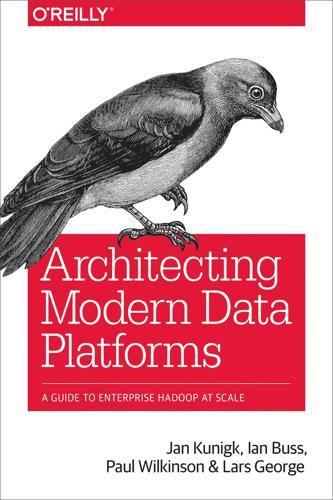
Architecting Modern Data Platforms: A Guide to Enterprise Hadoop at Scale
by
Jan Kunigk
,
Ian Buss
,
Paul Wilkinson
and
Lars George
Published 8 Jan 2019
Coding Whereas the typical analyst or statistician understands methods and models mathematically, a good data scientist also has a solid background in parallel algorithms to build large-scale distributed applications around such models. As we already mentioned, the data scientist is well versed in coding in third-generation and functional programming languages, such as Scala, Java, and Python, in addition to the domain-specific languages of the classic analytics world. In this function, the data scientist collaborates with development departments to build fully fledged distributed applications that can be productively deployed to Hadoop. The work split could be that the development organization builds the ingest and business logic of the application and maintains the build-and-deployment process, while the data scientist owns and tests the modules and routines that perform the actual learning and modeling algorithms at scale.
…
The Apache Hadoop project itself is a platform that offers affordable and scalable storage in the form of a distributed filesystem, and is combined with a resource management and scheduling framework that is subsequently used to analyze the stored data. All other tasks, such as facilitating data ingest, running data pipelines that are built by connecting many separate processing jobs, or implementing the processing logic in some higher-level abstraction or domain-specific language (like SQL or Apache Spark) run on top of that platform and services. Looking at the many different projects that make up a Hadoop distribution, you can imagine that there is a need to store settings, metadata, or state to ensure some level of fault tolerance. After all, the aforementioned core Hadoop components are built to sustain, for example, node failures and to be able to recover gracefully, so complementary services should also be reliable.
…
Today, anyone who wants to set up a Hadoop cluster has the following options: Vanilla Apache From the beginning, Hadoop, like many other open source projects, has come as a set of source code repositories that contain the core components—that is, the filesystem (HDFS) and resource management framework (YARN). But those two components are often not enough to build fully functional data pipelines. You also need a job scheduler and tools for ingress and egress, in addition to processing engines that offer abstractions, such as SQL or a programming language–based domain-specific language (DSL). Each of these additional components typically comes as a source code repository. Instead of having to deal directly with the source code, you can download archives of releases of each subproject and assemble them as needed. We discuss this in the next section. Using Vanilla Apache project resources gives you the most freedom, in terms of defining what Hadoop is for your enterprise.
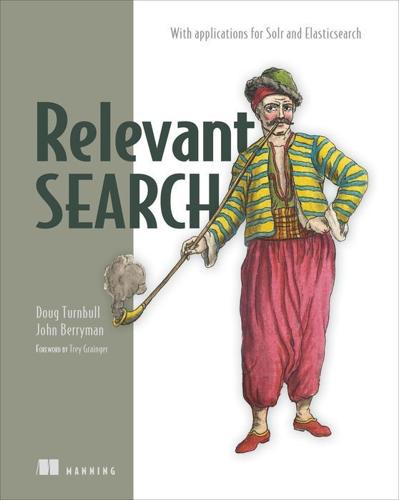
Relevant Search: With Examples Using Elasticsearch and Solr
by
Doug Turnbull
and
John Berryman
Published 30 Apr 2016
In the future, when you want to search or interact with the tmdb index, you’ll reference tmdb/movie/ or tmdb/ in the path of the Elasticsearch URL. 3.4.1. Your first searches of the TMDB Elasticsearch index Now you can search! For this movie application, you need to figure out how to respond to user searches from your application’s search bar. To do this, you’ll use Elasticsearch’s Query domain-specific language (DSL), or Query DSL. The Query DSL tells Elasticsearch how to execute a search using a JSON format. Here you specify factors such as required clauses, clauses that shouldn’t be included, boosts, field weights, scoring functions, and other factors that control matching and ranking. The Query DSL can be thought of as the search engine’s SQL, a query language focused on ranked retrieval of flat, denormalized documents.
…
simple signals, 2nd Solr additive, with Boolean queries boosting feature mappings multiplicative, with function queries user ratings vs. filtering breadcrumb navigation browse experience browse interface, Yowl buckets section building signals bulk index API bulkMovies string business and domain awareness business concerns group business weight business-ranking logic BusinessScore C cast.name field, 2nd, 3rd, 4th, 5th cast.name scores cast.name.bigrammed field, 2nd, 3rd, 4th character filtering, 2nd, 3rd character offsets classic similarity classification features cleaning click-through rate co-occurrence counting cold-start problem COLLAB_FILTER filter, 2nd collaboration filtering, using co-occurrence counting search relevance and collation collocation extraction combining fields committed documents common words, removing completion field, 2nd completion suggester completion_analyzer completion_prefix variable complexphrase query parser compound queries, 2nd, 3rd concept search basic methods for building augmenting content with synonyms concept signals building using machine learning personalized search and configurations conflate tokens constant_score query, 2nd content augmentation curation engineer/curator pairing risk of miscommunication with content curator role of content curator exploring extracting into documents providing to search engine searching content group content weight, 2nd ContentScore control analysis controlling field matching converge conversion rate coord (coordinating factor), 2nd, 3rd, 4th, 5th, 6th, 7th copyField, 2nd, 3rd copy_to option, 2nd cosine similarity cross_fields, 2nd, 3rd searching, 2nd, 3rd, 4th Solr solving signal discordance with cuisine field cuisine_hifi field, 2nd cuisine_lofi field curation, search relevance and custom all field custom score query D data-driven culture debugging example search application Elasticsearch first searches with The Movie Database Python matching query matching analysis to solve matching issues comparing query to inverted index fixing by changing analyzers query parsing underlying strategy ranking computing weight explain feature scoring matches to measure relevance search term importance similarity vector-space model decay functions, 2nd deep paging default analyzer defType parameter delimiters acronyms modeling specificity phone numbers synonyms tokenizing geographic data tokenizing integers tokenizing melodies deployment, relevance-focused search application description field, 2nd, 3rd, 4th, 5th descriptive query directors field directors.name field, 2nd, 3rd, 4th directors.name score directors.name.bigrammed, 2nd, 3rd disable_coord option disabling tokenization discriminating fields DisjunctionMaximumQuery dismax, 2nd doc frequency, 2nd doc values document search and retrieval aggregations Boolean search facets filtering Lucene-based search positional and phrase matching ranked results relevance sorting document-ranking system documents analysis enhancement enrichment extraction flattening nested grouping similar matching meaning of scored search completion from documents being searched tokens as features of matching process meaning of documents dot character dot product, 2nd down-boosting title DSL (domain-specific language) E e-commerce search, 2nd easy_install utility edismax query parser, 2nd Elasticsearch example search application overview end sentinels engaged field engaged restaurants English analyzer overview reindexing with english_* filters english_bigrams analyzer english_keywords filter english_possessive_stemmer filter english_stemmer filter english_stop filter enrichment, 2nd ETL (extract, transform, load), 2nd every field gets a vote exact matching, 2nd, 3rd, 4th expert search, 2nd, 3rd explanation field external sources extract function, 2nd, 3rd extracting features extraction F faceted browsing overview Solr facet.prefix option facets, 2nd, 3rd fail fast, 2nd, 3rd, 4th fast vector highlighter feature modeling, 2nd feature selection feature space features creation of overview, 2nd, 3rd feedback at search box search completion search suggestions search-as-you-type business and domain awareness content curation risk of miscommunication with content curator role of content curator in search results listing grouping similar documents information presented snippet highlighting when there are no results search relevance and Solr faceted browsing field collapsing match phrase prefix relevance feedback feature mappings suggestion and highlighting components while browsing alternative results ordering breadcrumb navigation faceted browsing field boosts field collapsing overview Solr field discordance field mappings field normalization field scores, 2nd field synchronicity, signal modeling and field-by-field dismax field-centric methods, 2nd field-centric search, combining term-centric search and combining greedy search and conservative amplifiers like fields precision vs. recall Solr fieldNorms, 2nd, 3rd fields fieldType field_value_factor function fieldWeight, 2nd, 3rd, 4th filter clause filter element filter queries filtering Amazon-style collaborative overview using co-occurrence counting score shaping vs. boosting finite state transducer fire token first_name field floating-point numbers fragment_size parameter fudge factors full bulk command full search string full-text search full_name field function decay function queries, multiplicative boosting with Boolean queries vs.

Eloquent JavaScript: A Modern Introduction to Programming
by
Marijn Haverbeke
Published 15 Nov 2018
JavaScript might not be the most effective way to do this. You might instead opt for a language that looks like this: behavior walk perform when destination ahead actions move left-foot move right-foot behavior attack perform when Godzilla in-view actions fire laser-eyes launch arm-rockets This is what is usually called a domain-specific language, a language tailored to express a narrow domain of knowledge. Such a language can be more expressive than a general-purpose language because it is designed to describe exactly the things that need to be described in its domain, and nothing else. Exercises Arrays Add support for arrays to Egg by adding the following three functions to the top scope: array(...values) to construct an array containing the argument values, length(array) to get an array’s length, and element(array, n) to fetch the nth element from an array.
…
: operator, 18, 20, 209 [] (array), 60 [] (subscript), 60, 61 || operator, 17, 20, 51, 95, 328, 408 2d (canvas context), 289 200 (HTTP status code), 312, 360, 364 204 (HTTP status code), 366, 367 304 (HTTP status code), 374, 380, 386 400 (HTTP status code), 425 403 (HTTP status code), 364 404 (HTTP status code), 312, 365, 377–379 405 (HTTP status code), 316, 364 406 (HTTP status code), 422 500 (HTTP status code), 364 A a (HTML tag), 222, 235, 237, 320, 344 Abelson, Hal, 202 absolute positioning, 240, 244, 253, 257, 262 absolute value, 76, 424 abstract data type, 96 abstract syntax tree, see syntax tree abstraction, 5, 41, 84, 86, 203, 316, 349 in Egg, 230 of the network, 221 acceleration, 281–282 Accept header, 329, 422 access control, 98, 141–142, 375 Access-Control-Allow-Origin header, 316 actions, 334, 336, 337 activeElement property, 319 actor, 269, 274, 280 add method, 113 addEntry function, 66 addEventListener method, 248, 282, 362 addition, 13, 113 address, 77, 311 address bar, 221, 311, 313 adoption, of tools and techniques, 145 ages example, 104 alert function, 223–224 algorithmic optimization, 397, 406 alpha, 346 alphanumeric character, 147 alt attribute, 233 ALT key, 252 altKey property, 252 ambiguity, 215 American English, 148 ampersand character, 223, 314 analysis, 129, 133 ancestor element, 275 Android, 252 angle, 242, 293, 294, 421 angle brackets, 222 animation, 256, 262, 271, 306, 419 bouncing ball, 308, 421 performance, 266 platform game 277, 283, 296, 297, 303, 305 spinning cat, 240, 241, 244 anyStorage function, 198–199, 200 appendChild method, 232, 417 Apple, 225 application (of functions), see function application applications, 1, 333, 372 arc, 293, 294 arc method, 293, 421 argument, 27, 47, 51, 74, 155, 204 arguments object, 409 argv property, 355 arithmetic, 13, 19, 210 array, 61, 64, 79, 95 counting, 93 creation, 91, 60, 336, 409, 413 in Egg, 214 filtering, 88 indexing, 60, 68, 72, 409, 418 iteration, 69, 85, 87 length of, 61 as matrix, 107–108, 268 methods, 71, 79, 87–89, 92, 94, 95 notation, 77 random element, 122 as regular expression match, 149 representation, 77 of rest arguments, 74 searching, 68, 71 as table, 67 Array constructor, 336 Array prototype, 100, 103 Array.from function, 195, 231, 356 array-like object, 230–232, 255, 320, 325, 358 arrays in Egg (exercise), 214, 416 arrow function, 45, 99, 199 arrow keys, 262 artificial intelligence, 117, 213 assert function, 140 assertion, 140 assignment, 25, 34, 160, 162, 215, 417 assumption, 139, 140 asterisk, 13, 148 async function, 195–196, 199, 200, 386 asynchronous programming, 181, 200 animation, 284 in Node.js, 354, 359, 361, 365, 368 reading files, 325 attribute, 222, 230, 235, 320, 337, 422 autofocus attribute, 320 automatic semicolon insertion, 24 automation, 125, 132 automaton, 117 avatar, 266 average function, 91 await keyword, 195–196, 197, 199 axis, 281, 289, 298, 424 B Babbage, Charles, 58 background, 266, 273, 278 background (CSS), 262, 266, 274 backslash character as path separator, 365 in regular expressions, 146, 147, 157, 158, 414 in strings, 14, 223 backtick, 14–15 backtracking, 153–154, 156–157 ball, 308, 421 balloon (exercise), 262, 418 banking example, 137 Banks, Iain, 264 baseControls constant, 348 baseTools constant, 348 bean counting (exercise), 56, 409 beforeunload event, 258 behavior, 164, 213 benchmark, 236, 391, 397 Berners-Lee, Tim, 218 best practices, 3 bezierCurveTo method, 292 big ball of mud, 167, 168 binary data, 3, 11, 358 binary numbers, 11, 12, 68, 133, 153, 324 binary operator, 13, 16, 23 binding assignment, 25, 44 compilation of, 215, 403 definition, 24, 41, 215, 417 destructuring, 76 in Egg, 210, 212 exported, 173 global, 43, 130, 285, 354, 355 local, 43 model of, 25, 63, 65 naming, 26, 35, 52, 75, 131 from parameter, 42, 49 scope of, 43 as state, 31, 33, 65, 160, 326 undefined, 138 visibility, 43 bitfield, 255 bitmap graphics, 295, 308 bits, 3, 11, 12, 16, 68 block, 29, 32, 42, 43, 46, 63, 136, 137, 204 block comment, 36, 156 block element, 235, 237–238 blocking, 182, 241, 260, 359 blur event, 257–258 blur method, 319 body (HTML tag), 222–223, 228 body (HTTP), 313–315, 360, 366, 367, 378 body property, 228, 229, 231, 316 bold, 237 Book of Programming, The, 10, 352 Boolean, 16, 28, 31, 65, 146, 209, 210 conversion to, 19, 28, 31 Boolean function, 28 border (CSS), 235, 237 border-radius (CSS), 253 bouncing, 267, 270, 278, 280, 308 boundary, 151, 153, 157, 161, 164, 302, 413 bounds, of ranges, 88 box, 142, 227, 266, 308, 421 box shadow (CSS), 275 br (HTML tag), 340, 422 braces block, 4, 29, 42 class, 102 function body, 46, 63, 408 object, 66, 76, 85 in regular expression, 148 branching, 152, 153 branching recursion, 50, 300 break keyword, 33, 35 breakpoint, 134 British English, 148 broadcastConnections function, 193 browser, 2, 5, 174, 183, 219–225, 266, 267, 308, 313, 316, 321, 344, 348, 372 environment, 7, 26, 27, 311 security, 317, 392 storage, 326–328 window, 248 browser wars, 225 bubbling, see event propagation Buffer class, 358, 359, 361, 362 bug, 83, 129, 133, 157, 159, 164, 168, 225 building Promise.all (exercise), 200, 416 bundlers, 174 button, 247, 313, 320, 330 button (HTML tag), 224, 248, 252, 262, 321, 327, 330, 337 button property, 249, 255, 338 buttons property, 255, 338 C C (programming language), 391 cache, 172, 184 call method, 99, 104 call protocol, 400 call stack, 46–47, 51, 62, 135, 136, 138, 197, 400 callback functions, 184–190, 247, 283, 337, 358–359, 361, 380, 385 calling (of functions), see function application camel case, 35, 238 cancelAnimationFrame function, 260 canvas, 266, 287, 289–292, 295–301, 305–307, 395, 421 context, 289 path, 290 size, 288, 290 canvas (HTML tag), 288, 334, 337, 344, 345, 349, 423 CanvasDisplay class, 301, 302, 304 capitalization, 35, 101, 149, 238, 243, 362 capture group, 149–151, 155, 376 career, 265 caret character, 147, 151, 161, 358 carriage return, 161 cascading, 238 Cascading Style Sheets, see CSS case conversion, 62 case keyword, 35 case sensitivity, 149, 414 casual computing, 2 cat’s hat (exercise), 244 catch keyword, 135–136, 138–139, 141, 197, 413 catch method, 188 CD, 11 cell, 330 Celsius, 110 centering image on screen, 241 player in viewport, 276 certificate, 317 change event, 319, 322, 340, 422, 425 character, 14–15, 92–93, 322 character category, 163 character encoding, 358–359 characterCount function, 90 characterScript function, 94, 95, 411 charCodeAt method, 92 checkbox, 318, 323, 330, 422 checked attribute, 318, 323 chessboard (exercise), 38, 408 chicks function, 198–199 child node, 229, 230, 232 childNodes property, 230, 231, 233, 419 children property, 231 Chinese characters, 92, 94 choice, 152 Chrome, 225, 398, 400, 402, 404 circle, 241, 293 circle (SVG tag), 288 circles (exercise), 350, 423 circular dependency, 178, 415 circus, 71 class, 101, 102, 113, 119, 267, 335 class attribute, 232, 235, 239, 273, 275 class declaration, 102 class hierarchy, 112 className property, 235 cleaning up, after exceptions, 136 clearing, the canvas, 288, 296, 301, 302, 421 clearInterval function, 260 clearRect method, 296, 421 clearTimeout function, 259, 260 click event, 248, 250, 253, 255, 337, 422 client, 220, 316, 361, 372, 381, 382 clientHeight property, 235 clientWidth property, 235 clientX property, 253, 255, 339 clientY property, 253, 255, 339 clipboard, 225 clipping, 302 closePath method, 291 closing tag, 222, 224 closure, 49, 214, 417–419 closure in Egg (exercise), 214, 417 code, 6, 156, 265 structure of, 23, 32, 41, 167, 175 code golf, 164 code unit, 92 codePointAt method, 93 coin, 266, 267, 280, 305 Coin class, 271, 280 collaboration, 219 collection, 5, 60, 62, 64, 79 collision detection, 277, 278, 280–282, 420, 421 colon character, 18, 34, 63, 237 color, 288, 290, 302, 334, 346 color (CSS), 237, 238 color codes, 336 color field, 334, 336, 341 color picker, 334, 341, 344 color property, 335 ColorSelect class, 341 comma character, 204 COMMAND key, 252, 349 command line, 169, 353–355, 368 comment, 35, 77, 156, 160, 214, 229, 372, 374, 379, 384, 417 comment field reset (exercise), 388, 426 COMMENT_NODE code, 229 comments in Egg (exercise), 214, 417 CommonJS modules, 171–173, 355–356 exercise, 177–178, 415 communication, 220, 316 community, 354 compareRobots function, 125 comparison, 16, 19, 31, 35, 80 deep, 210, 409 of NaN, 17 of numbers, 16, 27 of objects, 66 of strings, 16 of undefined values, 19 compatibility, 5, 219, 225, 350, 357 compilation, 174, 212, 213, 391, 392, 398, 400, 403, 417 complexity, 3, 83, 112, 154, 239, 272, 349 component, 334, 335, 340, 346 composability, 5, 91, 175 computed property, 61, 328 computers, 1, 2 concat method, 72, 95, 413, 418, 426 concatenation, 15, 72, 418 conditional execution, 18, 28, 34, 37, 209 conditional operator, 18, 20, 209 conditional request, 374 configuration, 160 connected graph, 125 connection, 220, 311, 317, 372, 373 connections binding, 192 consistency, 35, 219, 230 console.log function, 5, 8, 16, 27, 46, 48, 55, 133, 354, 362–363, 398 const keyword, 25–26, 43, 65, 75, 76 constants, 26, 75, 282 constructor, 35, 101, 102, 112, 126, 130, 136, 150, 157, 411, 413 content negotiation (exercise), 329, 422 Content-Length header, 313 Content-Type header, 313, 360, 365, 369 context, 289 context menu, 251 continuation, 184 continue keyword, 33 control, 339, 341, 344, 347 control flow asynchronous, 182, 196 conditional, 28–30 exceptions, 135, 136 function, 46, 86 loop, 30–31, 32–33 control point, 292, 293 convention, 35 convergent evolution, 184 Conway’s Game of Life, 330 coordinates, 113, 241–242, 253, 273, 276, 278, 279, 289, 293, 298 copy-paste programming, 53, 168 copyright, 169 correlation, 66, 67, 69, 70 corvid, 183 cosine, 75, 241 countBy function, 93, 95 counter variable, 30, 32, 242, 408, 409, 416, 418 CPU, 182 crash, 138, 140, 378, 387 createElement method, 234, 336, 417 createReadStream function, 362, 365 createServer function, 360, 362, 375, 376 createTextNode method, 233, 422 createWriteStream function, 361, 367 cross-domain request, 316 crow, 183, 184, 188, 194 crow-tech module, 185 crying, 149 cryptography, 317 CSS, 237–239, 273–277, 287, 290, 336, 382 CTRL key, 252, 349 ctrlKey property, 252, 349 curl program, 367 curly braces, see braces cursor, 322 curve, 292–293 cutting point, 272 cwd function, 364–365 cycle, 229 D Dark Blue (game), 265 data, 2, 11, 59 data attribute, 235, 262 data event, 362 data flow, 334, 349 data format, 77, 230 data loss, 387 data set, 68, 87 data structure, 59, 175, 177, 306, 330 collection, 60 immutable, 120 list, 79 map, 104 stack, 62 tree, 204, 227, 229 data URL, 344–345 date, 147, 148, 150 Date class, 150, 151, 169, 171 date-names package, 171 Date.now function, 151, 346, 405 dblclick event, 253 De Morgan’s laws, 411 debouncing, 260 debugger statement, 134 debugging, 6, 129–131, 133, 136, 139, 140, 164 decentralization, 219 decimal number, 11, 133, 153 declaration, 237 decodeURIComponent function, 314, 364, 376 deep comparison, 66, 80 deep comparison (exercise), 80, 410 default behavior, 237, 251 default export, 173 default keyword, 35 default value, 20, 48, 290, 328, 348 defineProperty function, 411 defineRequestType function, 185, 190 degree, 293, 298 delete method, 113 DELETE method, 312–313, 315, 363, 366, 378 delete operator, 63 deoptimization, 401, 403, 404 dependence, 66 dependency, 168, 170, 173, 178, 224, 357 deserialization, 77 design, 168 destructuring, 151 destructuring assignment, 424 destructuring binding, 76, 171, 348, 415 developer tools, 7, 27, 134, 138 dialect, 174 dialog box, 26 diamond, 307, 420 digit, 11, 12, 133, 147–149, 336 Dijkstra, Edsger, 116, 176 Dijkstra’s algorithm, 176 dijkstrajs package, 176, 414 dimensions, 113, 235, 265, 267, 278, 289, 401, 408 dinosaur, 213 direct child node, 239 direction (writing), 95 directory, 355, 358–359, 363, 365–366, 368, 425 directory creation (exercise), 368, 425 disabled attribute, 320 discretization, 266, 278, 283 dispatch, 34, 334–336, 340, 347, 375, 423 display, 272, 273, 283, 284, 301, 305, 306 display (CSS), 237, 262 distance, 396, 423 distribution, 392 division, 13, 14, 396 division by zero, 14 do loop, 31, 122 doctype, 222–223 document, 221, 227, 258, 287 document format, 317, 329 Document Object Model, see DOM documentation, 353 documentElement property, 228, 229 dollar sign, 26, 151, 155, 161 DOM, 228, 229 attributes, 235 components, 334 construction, 230, 232, 234, 336 events, 248, 252 fields, 318, 322 graphics, 266, 267, 273–276, 287, 288, 305 interface, 229–230 modification, 232–233 querying, 231–232, 239 tree, 229 dom property, 335 domain, 221, 313, 316, 327 domain-specific language, 84, 132, 145, 214, 239 DOMDisplay class, 273, 301 dominant direction (exercise), 95, 411 done property, 346 doneAt property, 346 dot character, see period character double-click, 253 double-quote character, 14, 165, 204, 223 download, 7, 169, 344, 356, 367, 371, 387 download attribute, 344 draggable bar example, 254 dragging, 254, 334, 342, 350 draw function, 342, 350 drawGraph function, 395 drawImage method, 295–296, 298, 301, 303, 421 drawing, 227, 235, 236, 241, 272, 273, 288, 289, 292, 299, 303, 305, 333, 334, 422 drawing program example, 253, 333 drawPicture function, 338, 344, 350, 423 drop-down menu, 319, 324 duplication, 168 dynamic typing, 403 E ECMAScript, 5, 6, 173 ECMAScript 6, 6, 426 economic factors, 349 ecstatic package, 376 Edge, 398, 400, 402 editor, 32 efficiency, 50, 79, 91, 192, 212, 236, 266, 275, 289, 338, 349 efficient drawing (exercise), 349, 423 Egg language, 203, 215, 229 electronic life, 266 elegance, 50, 205 element, 222, 229, 231, 234 ELEMENT_NODE code, 229, 418 elements property, 320 ellipse, 240, 242 else keyword, 29 elt function, 234, 336, 349, 384 email, 317 emoji, 15, 92, 162, 262 empty set, 156 encapsulation, 97, 98, 105, 112, 248, 272 encodeURIComponent function, 314, 373–374, 383 encoding, 220 encryption, 317 end event, 362 end method, 360, 361, 364 enemies example, 160 engine, 391, 398, 400, 402 engineering, 225 ENOENT (status code), 365 ENTER key, 321 entity, 223 enum (reserved word), 26 environment, 26, 208 equality, 17 error, 92, 129, 130, 133–135, 138, 139, 187, 188, 194 error event, 326, 367 error handling, 129, 135, 138, 359, 364, 365, 383, 386 error message, 207, 330 error recovery, 134 error response, 312, 364, 366 error tolerance, 223 Error type, 136, 138, 139, 365 ES modules, 173, 224 ESC key, 285 escaping in HTML, 222, 224 in regular expressions, 146, 147, 158 in strings, 14, 204 in URLs, 314, 364, 373–374, 376 Escher, M.C., 286 ETag header, 374, 380, 386 eval operator, 170 evaluate function, 207–208, 210 evaluation, 170, 207, 213 even numbers, 30, 56 event handling, 247–262, 266, 282, 284, 285, 295–296, 305, 321, 322, 337, 362, 419, 422 event loop, 197 event object, 249, 253, 255 event propagation, 249, 250, 257, 258 event type, 249 every method, 95 everything (exercise), 95, 411 everywhere function, 192 evolution, 145, 349, 357 exception handling, 135, 136, 138–142, 187, 188, 196, 197, 200, 416, 422 exception safety, 138 exec method, 149–150, 158, 160 execution order, 28, 45, 46 exercises, 2, 7, 37, 133 exit method, 354 expectation, 251 experiment, 3, 7, 164 exploit, 225 exponent, 13, 165, 414 exponentiation, 31, 33 export keyword, 173 exports object, 171–173, 356, 415 expression, 23, 24, 27, 31, 33, 44, 203, 204, 208 expressivity, 214 extension, 355 extraction, 150 F factorial function, 8 Fahrenheit, 110 fallthrough, 35 false, 16 farm example, 52, 54, 152 fetch function, 315, 329, 361, 383, 385, 425 field, 252, 313, 318, 320, 323, 326, 330, 334, 388 Fielding, Roy, 310 file, 168, 325, 426 access, 172, 174, 345, 358, 359 image, 333, 344 resource, 312, 313, 363, 365, 366 stream, 361 file extension, 365 file field, 318, 325 file format, 160 file reading, 325 file server, 381 file server example, 363, 365–369, 425 file size, 174 file system, 325, 358, 359, 363, 364, 425 File type, 325 FileReader class, 325, 326, 345 files property, 325 fill function, 343 fill method, 291, 336 fillColor property, 336 filling, 289–291, 295, 306 fillRect method, 289, 296 fillStyle property, 290, 295 fillText method, 295, 420 filter method, 88, 91, 94, 120, 191, 411, 413 finally keyword, 137, 142, 413 findIndex method, 94 findInStorage function, 194, 195 findRoute function, 124, 193 finish event, 367 Firefox, 225, 398, 400, 402, 404 firewall, 372 firstChild property, 230 fixed positioning, 257 fixing scope (exercise), 215, 417 FizzBuzz (exercise), 37, 407 flattening (exercise), 95 flexibility, 6 flipHorizontally function, 304, 420 flipHorizontally method, 298 flipping, 297–298 floating-point number, 12–13 flood fill, 340, 343 flooding, 192 flow diagram, 152, 153 focus, 252, 257, 319, 320, 322, 323, 349, 388 focus event, 257–258 focus method, 319 fold, see reduce method font, 295 font-family (CSS), 238 font-size (CSS), 262 font-weight (CSS), 238 for attribute, 323 for loop, 32, 33, 69, 85, 95, 139, 397, 409, 410 for/of loop, 69, 93, 106, 107, 109, 398, 412 force, 393–398 force-directed graph layout, 393 forceDirected_noRepeat function, 397 forceDirected_noVector function, 401 forceDirected_simple function, 396 forceDirected_skip function, 398 forEach method, 87 form, 313, 314, 320, 321, 369 form (HTML tag), 318, 320, 385, 425 form property, 320 formatDate module, 171, 173 fractal example, 300 fractional numbers, 13, 165, 266 fragmentation, 402 frame, 296, 297, 303, 421 framework, 54, 334 frequency table, 67 fs package, 358, 359 Fuller, Margaret, 370 function, 5, 26, 41, 45, 130, 203, 204, 211 application, 26, 27, 42, 46, 47, 50, 74, 88, 138, 203, 208 body, 42, 46 callback, see callback function declaration, 45 definition, 41, 45, 52 higher-order, 45, 85, 86, 88, 89, 91, 155, 283 inlining, 400 model of, 49 naming, 52–54 as property, 62 purity, 55 scope, 44, 169, 214 as value, 42, 44, 48, 85, 86, 88, 249, 283, 419 Function constructor, 170, 172, 210, 213, 330, 422 function keyword, 42, 45 Function prototype, 100, 103 future, of JavaScript, 6, 26, 45, 308 G game, 265–267, 282, 284, 285, 301 with canvas, 305 screenshot, 277, 305 game of life (exercise), 330, 422 GAME_LEVELS data set, 284 garbage collection, 12, 400–403 garble example, 355 gardening, 371 gaudy home pages, 262 generation, 330, 422 generational garbage collection, 403 generator, 196 get method, 105 GET method, 312, 313, 315, 321, 361, 363, 365, 373, 377–378 getAttribute method, 235 getBoundingClientRect method, 236, 339 getContext method, 289 getDate method, 151 getElementById method, 232, 417 getElementsByClassName method, 232 getElementsByTagName method, 232, 233, 243, 418 getFullYear method, 151 getHours method, 151 getImageData method, 345, 346 getItem method, 326, 328 getMinutes method, 151 getMonth method, 151 getPrototypeOf function, 100, 101, 215, 417 getSeconds method, 151 getter, 109, 113, 270 getTime method, 150 getYear method, 151 GitHub, 312 global object, 130 global scope, 43, 170, 210, 259, 354, 355, 417 goalOrientedRobot function, 125 Google, 225 gossip property, 192 grammar, 23, 129, 160 graph, 118, 124, 176, 193, 306, 392, 394, 405 graph layout, 393, 394, 397, 398, 400 graphics, 266, 272, 275, 287–289, 295, 305, 306 GraphNode class, 394, 400 grave accent, see backtick gravity, 282 greater than, 16 greed, 156–157 grep, 368 grid, 266, 273, 278–279, 330, 422 Group class, 113, 114, 126, 197, 411, 412 groupBy function, 95 grouping, 13, 29, 149, 155, 413 groups (exercise), 113, 114, 411, 412 H h1 (HTML tag), 222, 235 hack, 173 handleAction function, 382 hard disk, 175, 181, 184 hard drive, 12, 325, 327, 353, 387 hard-coding, 231, 307 has method, 105, 113 hash mark character, 214, 336 hasOwnProperty method, 105, 215, 417 head (HTML tag), 222, 223, 228 head property, 228 header, 313, 316, 360, 373 headers property, 315, 316, 329 height property, 350, 423 help text example, 257 hexadecimal numbers, 153, 314, 336, 346 Hières-sur-Amby, 183 hidden element, 238, 262 higher-order functions, see function, higher-order history, 5, 349 historyUpdateState function, 346 Hoare, C.A.R., 82 Hooke’s law, 395 hooligan, 375 Host header, 313 hot code, 392 href attribute, 222, 232, 235 HTML, 221, 312, 326, 369 notation 221 structure 227 html (HTML tag), 223, 228 HTTP, 219–221, 311–317, 366, 367, 369, 373, client, 361, 367, 372 server, 360, 363, 375, 381 http package, 360–361 HTTPS, 221, 317, 361 https package, 361 human language, 23 Hypertext Markup Language, see HTML Hypertext Transfer Protocol, see HTTP hyphen character, 13, 147, 238 I id attribute, 232, 239, 323 idempotence, 189, 366, 425 identifier, 204 identity, 65 if keyword, 28, 162 chaining, 29, 34, 408 If-None-Match header, 374, 380, 385 image, 233, 258, 287, 313 imagination, 265 IME (input method editor), 252 img (HTML tag), 222, 233, 237, 258, 287, 295, 296, 345 immutable, 65, 120, 270, 335, 336, 342, 346, 423 implements (reserved word), 26 import keyword, 173 in operator, 64, 105 includes method, 68, 69, 399, 411 indentation, 32 index, 61 index property, 149 index.html file, 381 index.js file, 355 indexOf method, 71, 73, 94, 113, 146, 158, 411 infinite loop, 33, 47, 139, 409 infinity, 14 infrastructure, 169 inheritance, 100, 111–112, 139, 365 INI file, 160 ini package, 169, 173, 175, 356 initialization, 258 inline caching, 403, 404 inline element, 235, 237 inlining, 400 inner function, 44, 418 inner loop, 154 innerHeight property, 257 innerWidth property, 257 input, 134, 247, 266, 319, 353, 378 input (HTML tag), 257, 318, 322, 323, 325, 341, 345 input event, 322 insertBefore method, 232, 233 installation, 169 instance, 101 instanceof operator, 112, 139 instructions, 3, 391 integers, 13 integration, 145, 230 interface, 98 canvas, 287, 289 design, 54, 145, 150, 155, 158, 229, 230, 272, 290 HTTP, 316, 373 module, 168–172, 175, 315, 356 object, 105, 106, 109, 114, 126, 189, 269, 301, 322, 335 interface (reserved word), 26 internationalization, 162 internet, 160, 220, 221, 224 Internet Explorer, 225 interpolation, 15 interpretation, 7, 170, 207–208, 212, 391 interview question, 37 inversion, 147 invoking (of functions), see function application IP address, 221, 311, 313 isDirectory method, 366, 425 isEven (exercise), 56, 408 isolation, 97, 167, 170, 224 iterable interface, 107, 412 iterator, 196 iterator interface, 106, 107, 114, 398 J Jacques, the weresquirrel, 60 Java, 5 JavaScript, 5 availability of, 2 flexibility of, 6 history of, 5, 219 in HTML, 223 syntax, 23 uses of, 6 versions of, 6 weaknesses of, 6 JavaScript console, 7, 16, 27, 134, 138, 330, 354 JavaScript Object Notation, see JSON join method, 94, 104, 356 journal, 60, 62, 64, 66, 69 JOURNAL data set, 68 journalEvents function, 69 JSON, 77, 175, 184, 193, 315, 328, 373, 386, 425 json method, 315 JSON.parse function, 77, 426 JSON.stringify function, 77 JSX, 384 jump, 4 jump-and-run game, 265 jumping, 266, 282 just-in-time compilation, 392 K Kernighan, Brian, 128 key code, 282 key property, 252, 418, 423 keyboard, 26, 247, 251, 266, 281, 282, 285, 319, 320, 322, 349 keyboard bindings (exercise), 349, 423 keyboard focus, see focus keydown event, 251, 260, 282, 349, 418, 423 keyup event, 251, 282 keyword, 24, 26, 235 Khasekhemwy, 322 kill process, 360 Knuth, Donald, 40 L label, 295, 307 label (HTML tag), 323, 341 labeling, 323 landscape example, 44 Laozi, 180 lastChild property, 230 lastIndex property, 158–160 lastIndexOf method, 71 Last-Modified header, 313 latency, 174 lava, 266, 267, 275, 278, 280, 305 Lava class, 270, 280 layering, 194, 220 layout, 235–237 laziness, 236 Le Guin, Ursula K., 2 leaf node, 229 leak, 225, 285 learning, 2, 6, 371 left (CSS), 240–242, 244 LEGO, 168 length property for arrays, 61, 336 for strings, 53, 56, 61, 74, 409 less than, 16 let keyword, 24, 25, 43, 65, 75, 76, 130 level, 266, 267, 273, 275, 284 Level class, 267 lexical scoping, 44 library, 230, 334, 356, 357 license, 169 line, 24, 32, 161, 287, 289–294, 307, 420 line break, 14, 161 line comment, 35, 156 line drawing, 350, 424 line width, 290, 297 lines of code, 211 lineTo method, 290–291 lineWidth property, 290 link (HTML tag), 277 linked list, 79, 410, 426 links, 222, 230–231, 251, 252, 344 linter, 173 Liskov, Barbara, 96 list (exercise), 79, 410 listen method, 360 listening (TCP), 220, 360 literal expression, 23, 146, 206, 208 live data structure, 227, 233, 240, 419 live view, 372, 373, 387, 426 lives (exercise), 285 load event, 258, 295–296, 303, 326, 421 LoadButton class, 344 local binding, 48, 215, 409 local scope, 43, 212 localhost, 360 localStorage object, 326–327, 383 locked box (exercise), 141, 413 logging, 133 logical operators, 17 long polling, 372–374, 378, 380, 385 loop, 4, 30, 32, 37, 38, 50, 69, 85, 90, 91, 160, 189, 408, 409, 420 termination of, 33 loop body, 31, 85 lycanthropy, 60, 66 M machine code, 3, 213, 391 macro-optimization, 406 magic, 99, 203 mailRoute array, 123 maintenance, 169 malicious script, 224 man-in-the-middle, 317 map, 272, 321 map (data structure), 104 Map class, 105, 109, 195 map method, 88, 91, 94, 99, 104, 120, 191, 268, 340 Marcus Aurelius, 246 match method, 149, 159 matching, 146, 151, 152, 158, 164 algorithm, 152–154 Math object, 56, 61, 75 Math.abs function, 76, 424 Math.acos function, 75 Math.asin function, 75 Math.atan function, 75 Math.ceil function, 76, 278, 302–303 Math.cos function, 75, 241, 242, 421 mathematics, 50, 86 Math.floor, 76, 122, 278, 302–303 Math.max function, 27, 61, 74, 75, 302 Math.min function, 27, 56, 75, 302 Math.PI constant, 75, 293 Math.random function, 75, 122, 271, 330, 404 Math.round function, 76 Math.sin function, 75, 241, 242, 271, 281 Math.sqrt function, 68, 75, 411 Math.tan function, 75 Matrix class, 107–108, 335 matrix example, 107–108, 111 MatrixIterator class, 108 max-height (CSS), 275–276 maximum, 27, 75, 90 max-width (CSS), 275–276 McConnell, Steve, 390 Meadowfield, 117 measurement, 397 measuring, 399 measuring a robot (exercise), 125, 412 media type, 317, 329, 365 meetups, JavaScript, 371 memory, 3, 11 call stack, 24 organization, 12, 47, 60, 65, 77 persistence, 387 speed, 181, 213, 400, 402, 406 structure sharing, 79 mesh, 221 message event, 259 meta key, 252 metaKey property, 252, 349 method, 62, 100, 101 array, 71 HTTP, 312, 317, 360, 367, 373, 375 interface, 98 method attribute, 313 method call, 98 method property, 315 methods object, 363 micro-optimization, 397, 399, 406 Microsoft, 225 Middle East, graph of, 393 mime package, 365 MIME type, 329, 365 mini application, 326 minifiers, 175 minimalism, 265 minimum, 27, 56, 75 minimum (exercise), 56, 408 minus, 13, 165 Miró, Joan, 332 mirror, 298, 308, 421 mirroring, 297–298 MKCOL method, 368–369, 425 mkdir function, 368–369, 425 modification date, 366 modifier key, 252 modular robot (exercise), 177, 414 modularity, 97, 334 module, 168, 169, 177, 272, 355, 356, 375 design, 175 module loader, 355 module object, 172 module system, 169 modulo (remainder) operator, 14, 33, 297, 407, 408, 418, 420 Mongolian vowel separator, 162 monster (exercise), 285, 419 Mosaic, 225 motion, 266 mouse, 26 button, 249, 250, 253 cursor, 253 mouse trail (exercise), 262, 418 mousedown event, 250, 253, 255, 337, 338, 422 mousemove event, 254, 260–262, 338, 350, 418 mouseup event, 253–255 moveTo method, 290, 293 Mozilla, 225 multiple attribute, 324, 325 multiple-choice, 318–319, 323, 324 multiplication, 13, 269–270, 280 multiplier function, 49 music, 265 mutability, 63, 65, 120 N name attribute, 320, 324 namespace, 75 naming, 4, 5, 25–26 NaN (not a number), 14, 17, 18, 130 negation, 16, 17 neighbor, 330, 422 neighbors property, 190 nerd, 158 nesting of arrays, 67 of expressions, 23, 205 of functions, 44 of loops, 38, 408 of objects, 228, 231 in regular expressions, 154 of scope, 44 Netscape, 5, 225 network, 182, 219, 372 abstraction, 194, 316 protocol, 220 reliability, 188 security, 317 speed, 174, 181, 353 network function, 194 new operator, 101 newline character, 14, 38, 147, 156, 161, 268, 422 next method, 107, 197, 412 nextSibling property, 230 Nietzsche, Friedrich, 226 node, 228, 229 node program, 354 node-fetch package, 361 Node.js, 6, 7, 27, 171, 183, 353–369, 372, 373, 375, 387, 398 NodeList type, 230, 239 node_modules directory, 355, 356 nodeName property, 243 nodeType property, 229, 418, 419 nodeValue property, 231 nonbreaking space, 162 normalizing, 396 not a number (NaN), 14, 17, 18, 129 notation, 173 note-taking example, 327 notification, 372 NPM, 169, 171, 173, 174, 176, 177, 355–358, 365, 375, 376, 387, 415 npm program, 356, 357, 365 null, 18, 19, 51, 61, 77, 80, 134 number, 12, 65, 146, 165, 414 conversion to, 19, 28 notation, 12–13 precision of, 13 representation, 12 special values, 14 Number function, 28, 35 number puzzle example, 50–52 Number.isNaN function, 29 O object, 59, 63–65, 97, 112 creation, 77, 101, 328, 401, 403 identity, 65 as map, 272 as module, 169 mutability, 65 property, 27, 61, 75, 76, 99 representation, 77 Object prototype, 99, 100 object shape, 404 Object.assign function, 328, 336 Object.create function, 100, 104, 211 Object.keys function, 64, 80, 195, 410, 417 object-oriented programming, 97, 101, 105, 106, 111, 119, 175 Object.prototype, 104 observation, 399 obstacle, 277, 278 offsetHeight property, 235, 236 offsetWidth property, 235 on method, 362 onclick attribute, 224, 248 onclick property, 337 OpenGL, 289 opening tag, 222 operator, 13, 16, 19, 204, 210, 404 application, 13 optimization, 50, 55, 236, 260, 266, 275, 306, 308, 359, 392, 398–400, 403, 406, 426 option (HTML tag), 319, 324, 425 optional, in pattern, 148 optional arguments, 48, 78 options property, 324 ordering, 220 ordinal package, 171–172 organic growth, 167 organization, 167 outline, 289 output, 16, 26, 27, 133, 134, 211, 353, 422 overflow (CSS), 275–276 overflow, with numbers, 12 overlap, 278 overlay, 238 overriding, 103, 105, 111, 415 overwriting, 367, 369, 378 P p (HTML tag), 222, 235 package, 168, 171, 355, 357 package (reserved word), 26 package manager, 169 package.json file, 357 padding (CSS), 274 page reload, 258, 321, 326 pageX property, 253, 255 pageXOffset property, 236 pageY property, 253, 255 pageYOffset property, 236, 257 Palef, Thomas, 265 panning, 339 paragraph, 222 parallelism, 182, 313 parameter, 27, 42, 43, 46–48, 74, 76, 99, 131, 172 parent node, 249 parentheses arguments, 23, 41, 46, 85, 204 expression, 13 in regular expressions, 149, 151, 152, 162, 413 statement, 27, 29, 31, 33 parentNode property, 230 parse function, 207 parseApply function, 206 parseExpression function, 205 parseINI function, 161, 168 parsing, 77, 129, 161, 203–206, 208, 211, 223, 227, 364, 380 password, 317 password field, 318 path canvas, 290–293, 420 closing, 291 file system, 355, 363 URL, 312, 315, 363, 364, 373, 375 path package, 365 pathfinding, 123, 176, 193, 343 pathfinding (exercise), 405, 406, 426 patience, 350 pattern, 145–147, 157 pausing (exercise), 285, 419 pea soup, recipe analogy, 84 peanuts, in weresquirrel example, 70–71 percent sign, 314 percentage, 94, 257 performance, 154, 174, 212, 236, 266, 306, 359, 391, 393, 397, 399 period character, 27, 61, 74, 147, 156, 165, 336 persistence, 326, 372, 387, 425 persistent data structure, 119, 120, 126, 132, 335, 342, 346, 419 persistent group (exercise), 126 persistent map (exercise), 413 PGroup class, 126, 413 phase, 271, 281 phi coefficient, 66–68 phi function, 68, 76 phone, 252 physics, 277, 281, 393, 418 physics engine, 278 pi, 13, 75, 241, 271, 293 PI constant, 75, 242 pick function, 343 picture, 287, 288, 296, 306, 334, 346 Picture class, 335, 345 picture property, 335 PictureCanvas class, 337, 349 pictureFromImage function, 345 pie chart example, 294, 295, 307, 420 ping request, 190 pink, 336 pipe analogy, 220 pipe character, 152, 414 pipe method, 364, 367 pipeline, 175 pixel, 235, 242, 253, 267, 273, 288, 289, 295, 296, 302, 306, 308, 333, 335, 339, 342, 343, 345, 350, 423 pixel art, 296 PixelEditor class, 340, 347, 349 pizza, in weresquirrel example, 67 platform game, 265, 285 Plauger, P.J., 128 player, 265–267, 275, 278, 281, 284, 296, 303, 305 Player class, 270, 281 plus character, 13, 148, 165 pointer, 230 pointer events, 253–256, 337 pointerPosition function, 338 polling, 247 pollTalks function, 385 polymorphism, 105–106 pop method, 62, 71 Popper, Karl, 234 port, 220, 311, 360 pose, 296 position, of elements on screen, 236 position (CSS), 240, 244, 257, 266, 275 POST method, 313, 314, 321, 374 postMessage method, 259 power example, 42, 48, 50 precedence, 13, 17, 239 predicate function, 88, 92, 95 Prefer header, 374, 380, 385 premature optimization, 50 preventDefault method, 251, 256–258, 282, 321, 339, 423 previousSibling property, 230 primitiveMultiply (exercise), 141, 413 privacy, 225 private (reserved word), 26 private properties, 98, 141–142 process object, 354–355, 364–365 processor, 181, 400 profiling, 50, 399 program, 2, 23, 28 program size, 83, 84, 164, 272 programming, 1 difficulty of, 2 history of, 3 joy of, 1, 2 Programming Is Terrible, 166 programming language, 1–2 creating, 203, 213 DOM, 229 history of, 3 machine language and, 391 Node.js and, 354 power of, 5 programming style, 3, 24, 32, 35, 272 progress bar, 256 project chapter, 117, 203, 265, 333, 371 promise, 200, 416 Promise class, 186, 187, 189, 195, 197, 198, 200, 315, 326, 359, 361, 363, 386, 416 Promise.all function, 190, 199, 200, 416 Promise.reject function, 187 Promise.resolve function, 186, 190 promises package, 359 promptDirection function, 139 promptInteger function, 134 propagation, of events, 249, 250, 257, 258 proper lines (exercise), 350, 424 property access, 27, 61, 129, 348, 403 assignment, 63 definition, 63, 66, 109 deletion, 63, 98 inheritance, 99, 101, 103 model of, 63 naming, 105–107 testing for, 64 protected (reserved word), 26 protocol, 220, 221, 311–312 prototype, 99–104, 111, 211, 215, 417, 426 diagram, 103 prototype property, 101 pseudorandom numbers, 75 public (reserved word), 26 public properties, 98 public space (exercise), 369, 425 publishing (packages), 358 punch card, 3 pure function, 55, 79, 88, 175, 330, 422 push method, 62, 69, 71, 411, 426 pushing data, 372 PUT method, 312–313, 363, 367, 373, 378, 425 Pythagorean theorem, 411, 423 Python, 391 Q quadratic curve, 292 quadraticCurveTo method, 292, 420 query string, 314, 374, 380 querySelector method, 240, 417 querySelectorAll method, 239, 324 question mark, 18, 148, 157, 314 queue, 198 quotation mark, 14, 165 quoting in JSON, 77 of object properties, 63 quoting style (exercise), 165, 413 R rabbit example, 98, 100–102 radians, 242, 293, 298 radio buttons, 318, 323 radius, 350, 423 radix, 11 raising (exceptions), 135 random numbers, 75, 271 random-item package, 414 randomPick function, 122 randomRobot function, 122 range, 88, 147, 148 range function, 5, 78, 409 Range header, 316 ray tracer, 306 readability, 4, 5, 35, 50, 54, 135, 167, 208, 276, 307 readable stream, 361, 362, 364, 378 readAsDataURL method, 345 readAsText method, 326 readdir function, 359, 366, 425 readdirSync function, 425 read-eval-print loop, 354 readFile function, 172, 358, 425 readFileSync function, 359, 424 reading code, 6, 117 readStorage function, 184 readStream function, 378, 379 real-time events, 247 reasoning, 17 recipe analogy, 84 record, 62 rect (SVG tag), 288 rectangle, 266, 278, 289, 307, 342 rectangle function, 342, 423 recursion, 47, 50, 56, 80, 189, 195, 205, 206, 208, 231, 243, 300, 394, 408, 410, 413, 416, 418 reduce method, 89, 91, 94, 95, 340, 411 redundancy, 397 ReferenceError type, 215 RegExp class, 146, 157, 424 regexp golf (exercise), 164 regular expressions, 145–165, 206, 368, 375, 376, 417, 424 alternatives, 152 backtracking, 153 boundary, 151 creation, 146, 157 escaping, 146, 158, 414 flags, 149, 155, 157, 414 global, 155, 158, 159 grouping, 149, 155 internationalization, 162 matching, 152, 158 methods, 146, 150, 158 repetition, 148 rejecting (a promise), 187, 189, 198 relative path, 172, 224, 355, 363, 425 relative positioning, 240, 241 relative URL, 315 remainder (modulo) operator, 14, 33, 297, 407, 408, 418, 420 remote access, 363 remote procedure call, 316 removeChild method, 232 removeEventListener method, 248, 419 removeItem method, 326 rename function, 359 rendering, 289 renderTalk function, 384 renderTalkForm function, 385 renderUserField function, 383 repeat method, 73, 257 repeating key, 251 repetition, 52, 148, 154, 157, 260 replace method, 155, 165, 413 replaceChild method, 233, 418 replaceSelection function, 322 reportError function, 383 repulsion, 393, 395 request, 185, 189, 220, 312, 313, 321, 360, 361, 367, 372 request function, 189, 361, 362 request type, 185 requestAnimationFrame function, 241, 258, 260, 283, 308, 418 requestType function, 190 require function, 171, 172, 178, 355, 356, 365, 375 reserved words, 26 resolution, 172, 355 resolve function, 364 resolving (a promise), 186, 187, 189, 198 resource, 220, 221, 312, 313, 317, 363, 377 response, 185, 189, 312, 313, 316, 360, 364, 366 Response class, 315 responsiveness, 247, 353, rest parameters, 74 restore method, 299, 300 result property, 326 retry, 189 return keyword, 42, 47, 101, 196, 408, 411 return value, 27, 42, 134, 185, 410 reuse, 54, 112, 167–169, 356 reverse method, 79 reversing (exercise), 79, 409 rgb (CSS), 274 right-aligning, 243 rmdir function, 366, 368 roadGraph object, 118 roads array, 117 roads module (exercise), 177, 415 robot, 117, 119, 121, 123, 125, 177 robot efficiency (exercise), 125, 412 robustness, 373 root, 229 rotate method, 298, 300 rotation, 307, 420 rounding, 76, 134, 278, 279, 302, 424 router, 372, 375 Router class, 375, 376 routeRequest function, 194 routeRobot function, 123 routing, 192 rows, in tables, 243 Ruby, 391 rules (CSS), 238, 239 run function, 211 runAnimation function, 283, 285 runGame function, 284, 285 runLayout function, 396 runLevel function, 283, 285 running code, 7 runRobot function, 121, 412 run-time error, 132–134, 140, 417 Rust (programming language), 391 S Safari, 225 sandbox, 7, 59, 224, 227, 316 save method, 299, 300 SaveButton class, 344 scalar replacement of aggregates, 400, 402 scale constant, 337–339 scale method, 297, 299 scaling, 273, 296, 297, 303, 421 scalpel (exercise), 200, 416 scheduling, 197, 354 scientific notation, 13, 165 scope, 43, 44, 48, 168, 170–173, 208, 210, 214, 215, 417 script (HTML tag), 223, 224, 258 SCRIPTS data set, 87, 89, 92, 93, 95 scroll event, 256, 260 scrolling, 251, 256–257, 275–276, 282, 301 search method, 158 search problem, 124, 152, 154, 232, 368, 405 search tool (exercise), 368, 424 section, 161 Secure HTTP, 221, 317, 361 security, 224, 225, 316, 317, 325, 327, 364, 375 select (HTML tag), 319, 324, 327, 334, 340, 425 selected attribute, 324 selection, 322 selectionEnd property, 322 selectionStart property, 322 selector, 239 self-closing tag, 222 semantic versioning, 357 semicolon, 23, 24, 33, 237 send method, 185, 188 sendGossip function, 191 sep binding, 364–365 sequence, 148 serialization, 77 server, 220, 221, 311–313, 315, 316, 353, 360, 362, 363, 372, 375 session, 328 sessionStorage object, 328 set, 146, 147, 229 Set (data structure), 113, 126 Set class, 113, 126, 413 set method, 105 setAttribute method, 235, 337 setInterval function, 260, 296 setItem method, 326 setter, 110 setTimeout function, 184, 197, 259, 260, 380, 386 shape, 287, 290, 291, 293, 295, 307 shapes (exercise), 307, 420 shared property, 100, 103 SHIFT key, 252, 423 shift method, 71 shiftKey property, 252 short-circuit evaluation, 20, 51, 209, 411 SICP, 202 side effect, 24, 27, 34, 42, 54, 65, 79, 88, 159, 175, 199, 230, 232, 233, 236, 290, 299, 314, 334, 335 sign, 12, 165, 414 sign bit, 12 signal, 11 simplicity, 213 simulation, 119, 121, 265, 270, 330, 393, 418 sine, 75, 241, 271, 281 single-quote character, 14, 165, 224 singleton, 126 skill, 333 SkillShareApp class, 386 skill-sharing project, 371–373, 375, 381 skipSpace function, 206, 214 slash character, 13, 35–36, 146, 156, 315, 364, 425 slice method, 72, 73, 88, 233, 409, 416 slope, 424 sloppy programming, 261 smooth animation, 241 SMTP, 220 social factors, 349 socket, 372–373 some method, 92, 95, 191, 376, 426 sorting, 229 source property, 158 special form, 203, 208 special return value, 134, 135 specialForms object, 208 specificity, 239 speed, 1, 2, 308, 421 SpiderMonkey, 400 spiral, 307, 420 split method, 118, 268 spread, 74, 336 spread operator, 274 spring, 393, 395 sprite, 296, 303–304 spy, 256 square, 28 square brackets, 60, 61, 74, 76, 107, 147, 324, 328, 409 square example, 41–42, 45, 46 square root, 68, 75, 411 src attribute, 222, 224 stack, see call stack stack overflow, 47, 50, 56, 408 stack trace, 136 staged compilation, 392 standard, 5, 26, 35, 88, 136, 162, 349, 354, 355 standard environment, 26 standard output, 354, 362–363 standards, 219, 225 star, 307, 420 Star Trek insignia, 292 startPixelEditor function, 347 startState constant, 347 startsWith method, 364 stat function, 359, 365, 366, 425 state of application, 275, 334, 342, 346, 347, 388 in binding, 24, 31, 32, 34, 400 of canvas, 289, 299 in iterator, 197 in objects, 119, 268, 301 transitions, 198, 336, 337 statement, 23, 24, 28, 31, 32, 42, 63 static (reserved word), 26 static file, 373, 376 static method, 110, 113, 268, 413 static typing, 403 Stats type, 366 statSync function, 425 status code, 312, 354–355 status property, 315, 383 stdout property, 362–363 stopPropagation method, 250 storage function, 187 stream, 220, 361–363, 364, 367, 378 strict mode, 130 string, 14, 60, 62, 65, 92 indexing, 56, 72, 74, 92, 149 length, 37, 92 methods, 73, 149 notation, 14 properties, 72 representation, 15 searching, 73 String function, 28, 105 stroke method, 290–292 strokeRect method, 289, 421 strokeStyle property, 290 strokeText method, 295 stroking, 289, 290, 295, 306 strong (HTML tag), 235, 237 structure, 168, 222, 227, 334 Structure and Interpretation of Computer Programs, 202 structure sharing, 79 style, 237 style (HTML tag), 238, 239 style attribute, 237–239, 273 style sheet, see CSS subclass, 111 submit, 318, 320, 321 submit event, 321, 384, 425 substitution, 54 subtraction, 13, 113 sum function, 5, 78 summing (exercise), 78, 409 summing example, 4, 83, 89, 211 superclass, 111 survey, 294 Sussman, Gerald, 202 SVG, 287–289, 305, 306 swapping bindings, 424 swipe, 342 switch keyword, 34 symbiotic relationship, 183 symbol, 106 Symbol function, 106 Symbol.iterator symbol, 107 SymmetricMatrix class, 111 synchronization, 387, 426 synchronous programming, 182, 195, 359, 368 syncState method, 335, 338, 340, 341, 349, 426 syntax of Egg, 203, 204 error, 26, 129, 130 expression, 23 function, 42, 45 identifier, 26 number, 12, 165 object, 63 operator, 13 statement, 24, 26, 28–34, 135 string, 14 syntax tree, 204–205, 207, 228–229 SyntaxError type, 206 T tab character, 14, 32 TAB key, 320 tabbed interface (exercise), 262, 419 tabindex attribute, 252, 320, 349 table (HTML tag), 243, 266, 274, 422 table example, 417 tableFor function, 68 tables, 67, 68, 274 tags, 221–222, 227, 239, see also names of specific tags talk, 371, 372, 377–379 talkResponse method, 380 talksAbout function, 231 talkURL function, 383 Tamil, 87 tampering, 317 tangent, 75 target property, 250 task management example, 71 TCP, 220, 221, 311, 373 td (HTML tag), 243, 274 Tef, 166 temperature example, 110 template, 171, 388, 426 template literals, 15 tentacle (analogy), 25, 63, 65 terminal, 354 termite, 183 ternary operator, 18, 20, 209 test method, 146 test runners, 132 test suites, 132 testing, 125, 132 text, 14, 221, 222, 227, 229, 295, 305–307, 322, 324, 358, 422 text field, 257, 318, 319, 322 text method, 315 text node, 229, 231, 233, 419 text wrapping, 305 text-align (CSS), 243 textAlign property, 295, 420 textarea (HTML tag), 260, 318, 322, 327, 330, 425 textBaseline property, 295, 420 textContent property, 418, 422 TEXT_NODE code, 229, 419 textScripts function, 94, 411 th (HTML tag), 243 then method, 186–188, 191, 416 theory, 133 this binding, 62, 98–99, 101, 130 thread, 182, 183, 198, 259 throw keyword, 135, 136, 139, 141, 413 tile, 303 time, 147, 148, 150, 184, 241, 261, 277, 278, 280, 283, 303, 346 time zone, 150 timeline, 182, 197, 223, 241, 247, 258 timeout, 188, 259, 373, 374, 380 Timeout class, 189 times method, 269 timing, 396 title, 382 title (HTML tag), 222, 223 toDataURL method, 344 toLowerCase method, 62, 243 tool, 145, 164, 175, 334, 339, 340, 342–344, 347, 350, 357 tool property, 335 ToolSelect class, 340 top (CSS), 240–242, 244 top-level scope, see global scope toString method, 99, 100, 103–105, 346, 362 touch, 255, 334 touchend event, 255 touches method, 278 touches property, 255, 339 touchmove event, 255, 339, 350 touchstart event, 255, 337, 339 toUpperCase method, 62, 132, 243, 362 tr (HTML tag), 243, 274 trackKeys function, 282, 285 transform (CSS), 287 transformation, 297–299, 308, 420 translate method, 298, 299 Transmission Control Protocol, 220, 221, 311, 373 transparency, 289, 296, 346 transpilation, 213 trapezoid, 307, 420 traversal, 152 tree, 100, 204, 229 treeGraph function, 394 trial and error, 133, 282, 293 triangle (exercise), 37, 407 trigonometry, 75, 241 trim method, 73, 268 true, 16 trust, 224 try keyword, 136, 137, 190, 413, 422 type, 12, 16, 112 type attribute, 318, 321 type checking, 131, 174 type coercion, 18, 19, 28 type observation, 392, 401, 403 type property, 204, 249 type variable, 131 typeof operator, 16, 80, 410 TypeScript, 131–132 typing, 260 typo, 129 U Ullman, Ellen, xx unary operator, 16, 23 uncaught exception, 138, 188 undefined, 18, 19, 25, 42, 47, 61, 63, 77, 129, 130, 134 underline, 237 underscore character, 26, 35, 98, 151, 157 undo history, 346, 347 UndoButton class, 347 Unicode, 15, 17, 87, 92, 147, 162, 163 unicycling, 371 Uniform Resource Locator, see URL uniformity, 204 uniqueness, 239 unit (CSS), 242, 257 Unix, 366–368 Unix time, 150 unlink function, 359, 366 unshift method, 71 unwinding the stack, 135 upcasing server example, 362 updated method, 378, 381, 425 updateState function, 336 upgrading, 169 upload, 325 URL, 221, 224, 288, 313, 315, 317, 360, 373, 383 URL encoding, 314 url package, 364, 380 urlToPath function, 364 usability, 251 use strict, 130 user experience, 247, 320, 372, 383 user interface, 138, 334 users’ group, 371 UTF-8, 358, 359 UTF-16, 15, 92 V V8, 398 validation, 134, 140, 203, 277, 321, 378, 379 value, 12, 186 value attribute, 318, 322, 324 var keyword, 25, 43, 76 variables, see also binding Vec class, 113, 268, 269, 280, 394, 396, 421 vector, 394, 400 vector (exercise), 113, 411 vector graphics, 295 verbosity, 46, 182 version, 169, 222, 312, 357, 398 viewport, 275–277, 301, 302, 305 VillageState class, 119 virtual keyboard, 252 virtual world, 117, 119, 121 virus, 224 vocabulary, 41, 84 void operator, 26 volatile data storage, 12 W waitForChanges method, 380 waiting, 184 walking, 303 warning, 357 wave, 271, 280, 281 web, see World Wide Web web application, 5, 326, 333 web browser, see browser web page, 174 web worker, 259 WebDAV, 369 webgl (canvas context), 289 website, 224, 225, 313, 353, 369, 371 WebSockets, 373 weekDay module, 169–170 weekend project, 369 weresquirrel example, 60, 62, 64, 66, 69, 71 while loop, 4, 30, 32, 53, 160 whitespace in HTML, 231, 340, 419 indentation, 32 matching, 147, 162 syntax, 204, 206, 214, 417 trimming, 73, 268 in URLs, 373–374 Why’s (Poignant) Guide to Ruby, 22 width property, 350, 423 window, 250, 255, 258 window object, 248 with statement, 131 word boundary, 151 word character, 147, 151, 162 work list, 124, 343 workbench (exercise), 330, 422 world, of a game, 265 World Wide Web, 5, 77, 219, 221, 224, 225, 311 writable stream, 360–363, 364 write method, 360, 361 writeFile function, 359, 361, 425 writeHead method, 360 writing code, 6, 117 writing system, 87 WWW, see World Wide Web X XML, 230, 288 XML namespace, 288 xmlns attribute, 288 Y yield (reserved word), 26 yield keyword, 197 your own loop (example), 95 Yuan-Ma, 10, 352 Z Zawinski, Jamie, 144 zero-based counting, 56, 61, 150 zeroPad function, 54 zigzag shape, 420 zooming, 305 Eloquent JavaScript, 3rd Edition is set in New Baskerville, Futura, Dogma, and TheSansMono Condensed.

Monadic Design Patterns for the Web
by
L.G. Meredith
In the mid-80s, a young researcher named Eugenio Moggi observed that an idea previously discovered in a then-obscure branch of mathematics (called category theory) offered a way to structure functional programs to allow them to deal with side-effecting computations in a uniform and compelling manner. Essentially, the notion of a monad (as it was called in the category theory literature) provided a language-level abstraction for structuring side-effecting computations in a functional setting. In today’s parlance, Moggi found a domain-specific language (DSL) for organizing side-effecting computations in an ambient (or hosting) functional language. Once Moggi made this discovery, another researcher named Phil Wadler realized that this DSL had a couple of different presentations (different concrete syntaxes for the same underlying abstract syntax) that were almost immediately understandable by the average programmer.
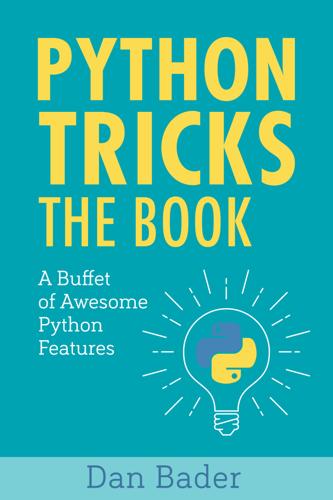
Python Tricks: The Book
by
Dan Bader
Published 14 Oct 2017
For example, what if the “resource” we wanted to manage was text indentation levels in some kind of report generator program? What if we could write code like this to do it: with Indenter() as indent: indent.print('hi!') with indent: indent.print('hello') with indent: indent.print('bonjour') indent.print('hey') This almost reads like a domain-specific language (DSL) for indenting text. Also, notice how this code enters and leaves the same context manager multiple times to change indentation levels. Running this code snippet should lead to the following output and print neatly formatted text to the console: hi! hello bonjour hey So, how would you implement a context manager to support this functionality?
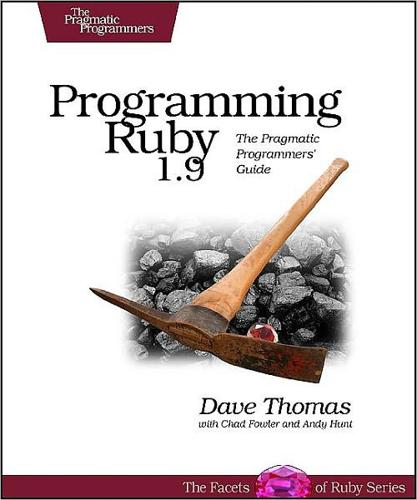
Programming Ruby 1.9: The Pragmatic Programmer's Guide
by
Dave Thomas
,
Chad Fowler
and
Andy Hunt
Published 15 Dec 2000
This (artificial) example shows the output produced by Ruby 1.9: Report erratum INSTANCE _ EVAL AND CLASS _ EVAL 408 Download samples/classes_45.rb module One CONST = "Defined in One" def self.eval_block(&block) instance_eval(&block) end end module Two CONST = "Defined in Two" def self.call_eval_block One.eval_block do puts CONST end end end Two.call_eval_block produces: Defined in One In Ruby 1.8, this same code would print Defined in Two. instance_eval and Domain-Specific Languages It turns out that instance_eval has a pivotal role to play in a certain type of domain-specific language (DSL). For example, we might be writing a simple DSL for turtle graphics.2 To draw a set of three 5x5 squares, we might write this:3 3.times do forward(8) pen_down 4.times do forward(4) left end pen_up end Clearly, pen_down, forward, left, and pen_up can be implemented as Ruby methods.
…
. $43.95 http://pragprog.com/titles/rails3 RubyCocoa RubyCocoa brings together two enthusiastic development communities: now the joy of Cocoa meets the joy of Ruby. Through this hands-on tutorial, you’ll learn all about the Cocoa framework for programming on Mac OS X. You’ll see test-first development of user-interface code, little domain-specific languages that take advantage of Ruby features, and other Rubyish tricks. RubyCocoa: Bringing Some Ruby Love to OS X Programming Brian Marick (300 pages) ISBN : 978-1934356-19-7. $34.95 http://pragprog.com/titles/bmrc Available from good technical booksellers. Also available as paper book/eBook combo packs from our secure online store at http://pragprog.com.
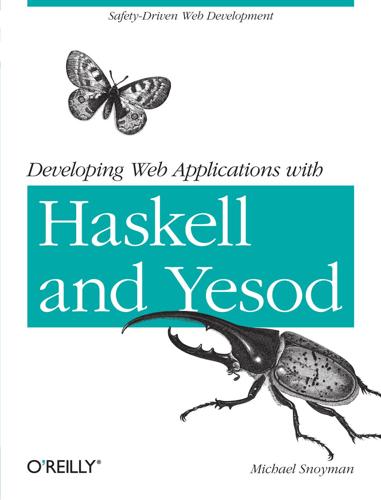
Developing Web Applications with Haskell and Yesod
by
Michael Snoyman
Published 22 Apr 2012
Instead of using regular expressions, Yesod matches on pieces of a route. Instead of having a one-way route-to-handler mapping, Yesod has an intermediate data type (called the route data type, or a type-safe URL) and creates two-way conversion functions. Coding this more advanced system manually is tedious and error prone. Therefore, Yesod defines a Domain Specific Language (DSL) for specifying routes, and provides Template Haskell functions to convert this DSL to Haskell code. This chapter will explain the syntax of the routing declarations, give you a glimpse of what code is generated for you, and explain the interaction between routing and handler functions.
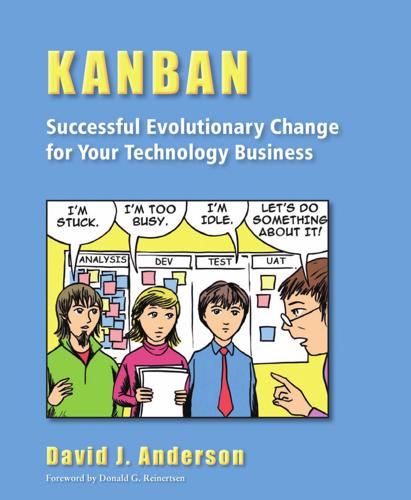
Kanban: Successful Evolutionary Change for Your Technology Business
by
David J. Anderson
Published 6 Apr 2010
This should be switched on and tuned for each project. These analysis tools can prevent programmers from making elementary mistakes, such as introducing well-understood problems like security flaws. More exotic modern development tools such as Software Product Lines (or Software Factories) and Domain Specific Languages reduce defects. Software Factories can be used to encapsulate design patterns as code fragments, thereby reducing the defect-insertion potential from entering code. They also can be used to automate away repetitive coding tasks; again, reducing the defect-insertion potential of entering code.
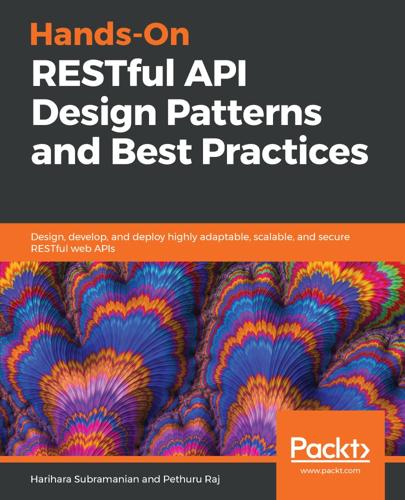
Hands-On RESTful API Design Patterns and Best Practices
by
Harihara Subramanian
Published 31 Jan 2019
Benefits of Spark Now it's time to review the advantages of Spark (and then we'll review another exciting framework called Dropwizard): Java-8-EE-based and based on the lambda philosophy (less verbose) Facilitates rapid development Enables App developers to create scalable REST APIs Fast and lightweight Best suited and excellent fit for rapid prototyping purposes Scores high on the speed factor as Spark is a thin wrapper around Java EE's servlet API Simplified and effective routing Brings better productivity by providing a simple domain-specific language (DSL) for routing API endpoints to handlers Maven and Gradle support Drawbacks of Spark Any popular framework may have drawbacks, and Spark is no exception: Not as popular as other frameworks (small community) May not be suitable for huge projects (SQL and NoSQL plug-and-play aspects) Dropwizard In this section, we'll review another popular Java-based framework licensed under Apache, called Dropwizard.
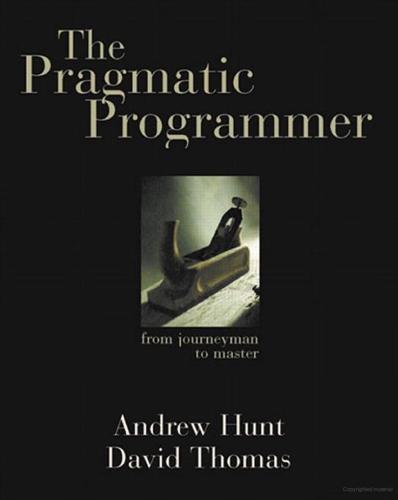
The Pragmatic Programmer
by
Andrew Hunt
and
Dave Thomas
Published 19 Oct 1999
Given that most applications exceed their expected lifetimes, you're probably better off biting the bullet and adopting the more complex and readable language up front. The initial effort will be repaid many times in reduced support and maintenance costs. Related sections include: Metaprogramming, page 144 Challenges Could some of the requirements of your current project be expressed in a domain-specific language? Would it be possible to write a compiler or translator that could generate most of the code required? If you decide to adopt mini-languages as a way of programming closer to the problem domain, you're accepting that some effort will be required to implement them. Can you see ways in which the framework you develop for one project can be reused in others?

Coders at Work
by
Peter Seibel
Published 22 Jun 2009
Seibel: So if you were writing a big image processing work-flow system, then would you write the actual image transformations in some other language? Armstrong: I'd write them in C or assembler or something. Or I might actually write them in a dialect of Erlang and then cross-compile the Erlang to C. Make a dialect—this kind of domain-specific language kind of idea. Or I might write Erlang programs which generate C programs rather than writing the C programs by hand. But the target language would be C or assembler or something. Whether I wrote them by hand or generated them would be the interesting question. I'm tending toward automatically generating C rather than writing it by hand because it's just easier.
…
Allen: Right, but it has to be done against a higher-level language than we have now. Seibel: And the wrong path is finding better ways for people to express parallelism explicitly? Allen: Well, I think we would eventually realize that we've created more of a mess than we had. But we do need higher-level languages and there certainly are domain-specific languages, and ways of developing things, which are really quite wonderful. But we have to be willing to try and take advantage of that, but also take advantage of the integration of systems and the fact that data's coming from everywhere. It's no longer encapsulated with the program, the code. We're seeing now, I think, vast amounts of data, which is accessible.
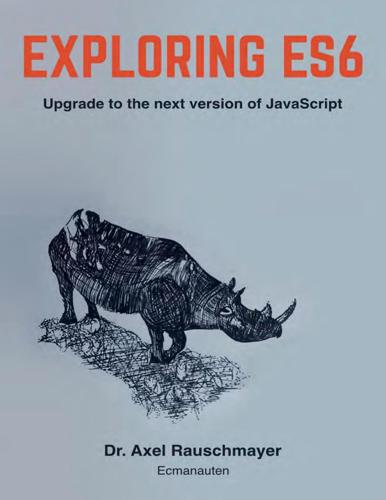
Exploring ES6 - Upgrade to the next version of JavaScript
by
Axel Rauschmayer
Published 3 Oct 2015
The tag function can do with its parameters as it pleases: It can completely ignore the template strings, return values of any type, etc. 9.3 Examples of using tagged templates To understand what tagged templates are good for, let’s look at examples. You’ll find that tagged templates allow you to implement custom embedded sub-languages (which are sometimes called domain-specific languages) with little effort, because JavaScript does much of the parsing for you. You only have to write a function that receives the results. Some of the following examples are borrowed from the original proposal¹ for template literals and tagged templates, which refers to them via their old name, quasi-literals. 9.3.1 Raw strings ES6 includes the tag function String.raw for raw strings, where backslashes have no special meaning: let str = String.raw`This is a text with multiple lines.

Zero to Sold: How to Start, Run, and Sell a Bootstrapped Business
by
Arvid Kahl
Published 24 Jun 2020
Having domain expertise is very helpful here, and you should validate your messaging before you apply it at scale. It's another rendition of "talk to your customers." You'll be surprised by how something that's perfectly clear to you can be confusing to someone in the industry you serve if you don't know the intricacies of the domain-specific language. When you want to convince a customer to buy a product, you usually show them your value propositions. Value propositions can be leading or lagging. That means some features have an immediate impact when being used, and others will only show themselves in the long tail of using a service.

The Art of Monitoring
by
James Turnbull
Published 1 Dec 2014
We're not going to use it in the book, but it's useful for creating graphs and viewing events locally on the Riemann host—for example, when quickly doing diagnostics or checking out state and status. You can find out more in the Riemann Dashboard documentation. Configuring Riemann Riemann is configured using a Clojure-based domain-specific language, or DSL, configuration file. This means your configuration file is actually processed as a Clojure program. To process events and send notifications and metrics you'll be writing Clojure. Don't panic—you won't need to become a full-fledged Clojure developer to use Riemann. We'll teach you what you need to know.
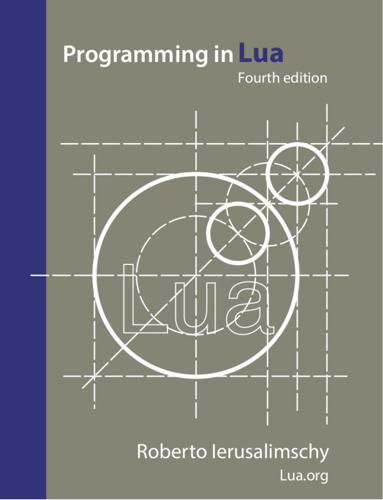
Programming in Lua, Fourth Edition
by
Roberto Ierusalimschy
Published 14 Jul 2016
There are other languages that you can use for more or less the same purposes. Nevertheless, Lua offers a set of features that makes it your best choice for many tasks and gives it a unique profile: Extensibility: Lua’s extensibility is so remarkable that many people regard Lua not as a language, but as a kit for building domain-specific languages. We designed Lua from scratch to be extended, both through Lua code and through external C code. As a proof of concept, Lua implements most of its own basic functionality through external libraries. It is really easy to interface Lua with external languages like C/C++, Java, C#, and Python.

This Machine Kills Secrets: Julian Assange, the Cypherpunks, and Their Fight to Empower Whistleblowers
by
Andy Greenberg
Published 12 Sep 2012
So when May suggested Hughes use his home as a base for a few days while looking for a place to live, the pair hit it off like Marx and Engels. Hughes neglected his real estate search to wander with May through Santa Cruz’s redwood forests and beaches while the older ex-scientist unloaded several years’ worth of bottled-up ideas. “We spent three intense days talking about math, protocols, domain specific languages, secure anonymous systems,” says May. “Man, it was fun.” Just a week after Zimmermann released PGP 2.0, Hughes and May invited forty of their favorite coders and cryptographers to Hughes’s newly purchased home in Oakland. About twenty of them showed up, and the group, mostly wearing its de facto uniform of beards and ponytails, crowded into the furniture-free living room and sat cross-legged on his floor.
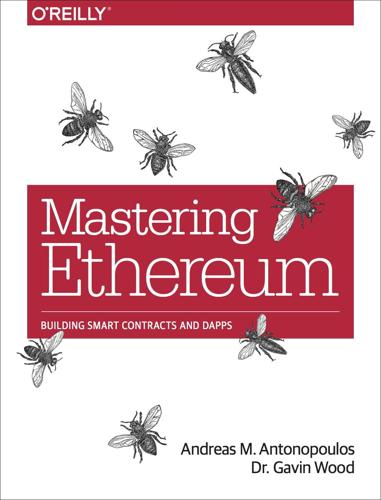
Mastering Ethereum: Building Smart Contracts and DApps
by
Andreas M. Antonopoulos
and
Gavin Wood Ph. D.
Published 23 Dec 2018
At the University of York he gained a PhD in computer science and cemented his reputation as a prolific open source coder, leading and contributing to many projects (the most prominent being KDE). His professional career includes time at a premier games house (creating a cross-platform high-performance audio engine) and Microsoft Research (writing embedded C++ domain-specific languages). Outside professional work he has taught maths, art and English to school children, and designed board games (including “Milton Keynes”), voting systems, and advanced programming tools (culminating in the first C++ language workbench). Two startups later, a mutual friend made the introduction to Vitalik Buterin, and within a few weeks he finished coding the first functional implementation of Ethereum.

Rise of the Machines: A Cybernetic History
by
Thomas Rid
Published 27 Jun 2016
Hughes was just under thirty, with blond hair halfway down his back and a long wispy beard. He had studied math at Berkeley. In May 1992, Hughes came down to Santa Cruz from Berkeley to hunt for a house. But the two men were drawn into their common passion: crypto anarchy. “We spent three intense days talking about math, protocols, domain specific languages, secure anonymous systems,” May said later. “Man, it was fun.” The crypto rebels had been inspired by Martin Gardner’s famous 1977 column from Scientific American, fifteen years after it came out. “Wow, this is really mind-blowing,”27 May had thought when he read the piece. May and Hughes began to rope in others.
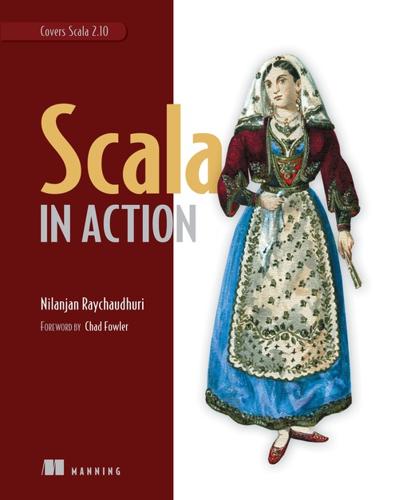
Scala in Action
by
Nilanjan Raychaudhuri
Published 27 Mar 2012
The only contract is to implement an iterator method: class FileAsIterable { def iterator = scala.io.Source.fromFile("someFile.txt").getLines() } Now if you mix in the Scala Iterable, your new FileAsIterable will become a Scala Iterable and will start supporting all the Iterable methods: val newIterator = new FileAsIterable with Iterable[String] newIterator.foreach { line => println(line) } In this case you’re using the foreach method defined in the Iterable trait and printing each line in the file. Scala version 2.10 adds support for a Dynamic[10] type. Using this feature you can dynamically add methods and fields to a type at runtime. This is very similar to the method_missing feature of Ruby and is quite useful if you’re building a domain-specific language (DSL). For example, Scala map is a collection of key value pairs and if you want to access the value associated with a key you can do something like the following: 10 “SIP-17 Type Dynamic,” http://docs.scala-lang.org/sips/pending/type-dynamic.html. val someMap = Map("foo" -> 1, "bar" -> 2) someMap.get("foo") Here someMap is a collection of two key value pairs and someMap.get("foo") will return 1.

CTOs at Work
by
Scott Donaldson
,
Stanley Siegel
and
Gary Donaldson
Published 13 Jan 2012
I'll look at a problem and I'll think about it for a second, and I'll say, “There is a problem in a completely different domain, and if you apply the principles from that problem to this one, this is what you'll get.” An example is people will say, “A 10X improvement in IT management? That's not possible.” And my response is, “Well, relational databases did it for data. Why can't we do it for IT management? How did they do it? They did it in domain-specific languages for data management.” And the third gift I have is for understanding a business problem, converting it into technology, and then explaining back to business people in business terms. I don't know where that came from. And I'm just very grateful for those gifts. Whenever I see something new, my first reaction is, “How do I make money with this?
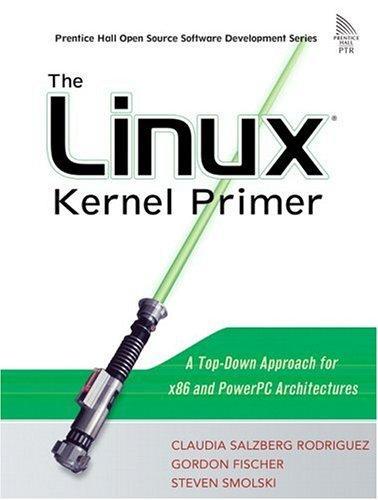
The Linux kernel primer: a top-down approach for x86 and PowerPC architectures
by
Claudia Salzberg Rodriguez
,
Gordon Fischer
and
Steven Smolski
Published 15 Nov 2005
You can add a directory to set obj-y, which indicates that it needs to descend into the specified directory: Obj-$(CONFIG_FOO) += /foo If /foo does not exist, make complaints with the following: Make[2]: *** No rule to make target '<dir>/foo/Makefile'. Stop. CML2 Where does the configuration program that you navigate when choosing kernel options get the information? The kbuild system depends on CML2, which is a domain-specific language designed for kernel configuration. CML2 creates a rulebase that an interpreter then reads and uses to generate the config file. This file covers the syntax and semantics of the language. The CML2 rulebase that is read by configuration programs is stored in files called defconfig and Kconfig.
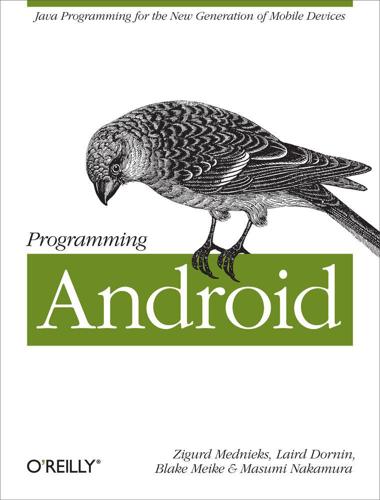
Programming Android
by
Zigurd Mednieks
,
Laird Dornin
,
G. Blake Meike
and
Masumi Nakamura
Published 15 Jul 2011
It also appears that, just before the final beta release, the interface underwent major changes. Much of the code and many of the suggestions found on the Web are obsolete and no longer work. The API V1_r2 release is an implementation of OpenGL ES 1.0 and much of ES 1.1. It is essentially a domain-specific language embedded in Java. Someone who has been doing gaming UIs for a while is likely to be much more comfortable developing Android OpenGL programs than a Java programmer, even a Java UI expert. Before discussing the OpenGL graphics library itself, we should take a minute to consider exactly how pixels drawn with OpenGL appear on the display.
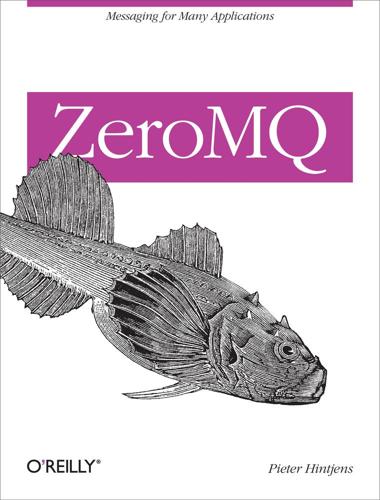
ZeroMQ
by
Pieter Hintjens
Published 12 Mar 2013
In Chapter 4, we developed the Majordomo Protocol (MDP) and wrote clients, brokers, and workers for that. Now, could we generate those pieces mechanically, by building our own interface description language and code generators? When we write a GSL model, we can use any semantics we like. In other words, we can invent domain-specific languages on the spot. I’ll invent a couple—see if you can guess what they represent: slideshow name = Cookery level 3 page title = French Cuisine item = Overview item = The historical cuisine item = The nouvelle cuisine item = Why the French live longer page title = Overview item = Soups and salads item = Le plat principal item = Béchamel and other sauces item = Pastries, cakes, and quiches item = Soufflé - cheese to strawberry Now, how about this one?

PostGIS in Action
by
Regina O. Obe
and
Leo S. Hsu
Published 2 May 2015
Without PostGIS or pgRouting, you’d have to define your own data structure, code the algorithm, and find a nice way to present the solution. Should the nature of your data change, you’d have to repeat the process. In the next sections, we’ll explore PL languages. The marriage of PL languages and SQL combines the expressiveness of an all-purpose or domain-specific language suited for certain classes of problems with the power of SQL. 16.2. Extending PostgreSQL with PLs One thing that makes PostgreSQL unique among the various relational databases is its pluggable procedural language (PL) architecture. Many Samaritans have created PL handlers for PostgreSQL, allowing you to write database stored functions in languages like Perl, Python, Java, TCL, R, JavaScript, and Sh (shell script), in addition to the built-in C, PL/pgSQL, and SQL.
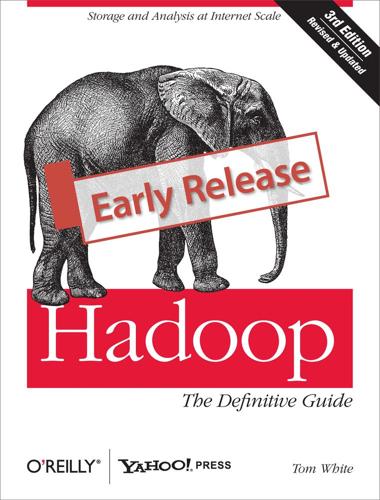
Hadoop: The Definitive Guide
by
Tom White
Published 29 May 2009
How a Flow translates to chained MapReduce jobs Because of this, developers can build applications of arbitrary granularity. They can start with a small application that just filters a logfile, but then can iteratively build up more features into the application as needed. Since Cascading is an API and not a syntax like strings of SQL, it is more flexible. First off, developers can create domain-specific languages (DSLs) using their favorite language, like Groovy, JRuby, Jython, Scala, and others (see the project site for examples). Second, developers can extend various parts of Cascading, like allowing custom Thrift or JSON objects to be read and written to and allowing them to be passed through the tuple stream.

Seeking SRE: Conversations About Running Production Systems at Scale
by
David N. Blank-Edelman
Published 16 Sep 2018
Release Engineering Configuration management tools are scary to developers and organizations because of how powerful they are. One misconfiguration and you can disable your entire infrastructure. Because of this, many companies do not trust their developers to roll out changes to their configuration management without review by an operations team. Every configuration management software also uses its own domain-specific language, which developers are not as familiar with as their primary language. It is an additional burden on these developers to ask them to learn and use this language, and they’ll never be fully fluent in it because they don’t use it often. With immutable infrastructure, you remove these concerns.

PostGIS in Action, 2nd Edition
by
Regina O. Obe
and
Leo S. Hsu
Published 2 May 2015
Without PostGIS or pgRouting, you’d have to define your own data structure, code the algorithm, and find a nice way to present the solution. Should the nature of your data change, you’d have to repeat the process. In the next sections, we’ll explore PL languages. The marriage of PL languages and SQL combines the expressiveness of an all-purpose or domain-specific language suited for certain classes of problems with the power of SQL. 16.2 Extending PostgreSQL with PLs One thing that makes PostgreSQL unique among the various relational databases is its pluggable procedural language (PL) architecture. Many Samaritans have created PL handlers for PostgreSQL, allowing you to write database stored functions in languages like Perl, Python, Java, TCL, R, JavaScript, and Sh (shell script), in addition to the built-in C, PL/pgSQL, and SQL.

Engineering Security
by
Peter Gutmann
For example if you’d like to get your blog posts rated highly then you can use similar types of tricks to have them submit themselves to social news site Digg [647]. Another proof-ofconcept used LaTeX to implement a virus that infects other LaTeX documents, 49 Security issues are actually a secondary problem with these Turing machines, with the primary one being that any Turing-complete domain-specific language starts out being a hammer and then at some point ends up being used as a screwdriver, pocket knife, spanner, car jack, lint remover, bandsaw and, eventually, a nail. User Education, and Why it Doesn’t Work 199 although this could easily have been extended to perform standard malware functions like stealing data or downloading and installing binaries to add assorted supplemental functionality to the operating environment [648][649].